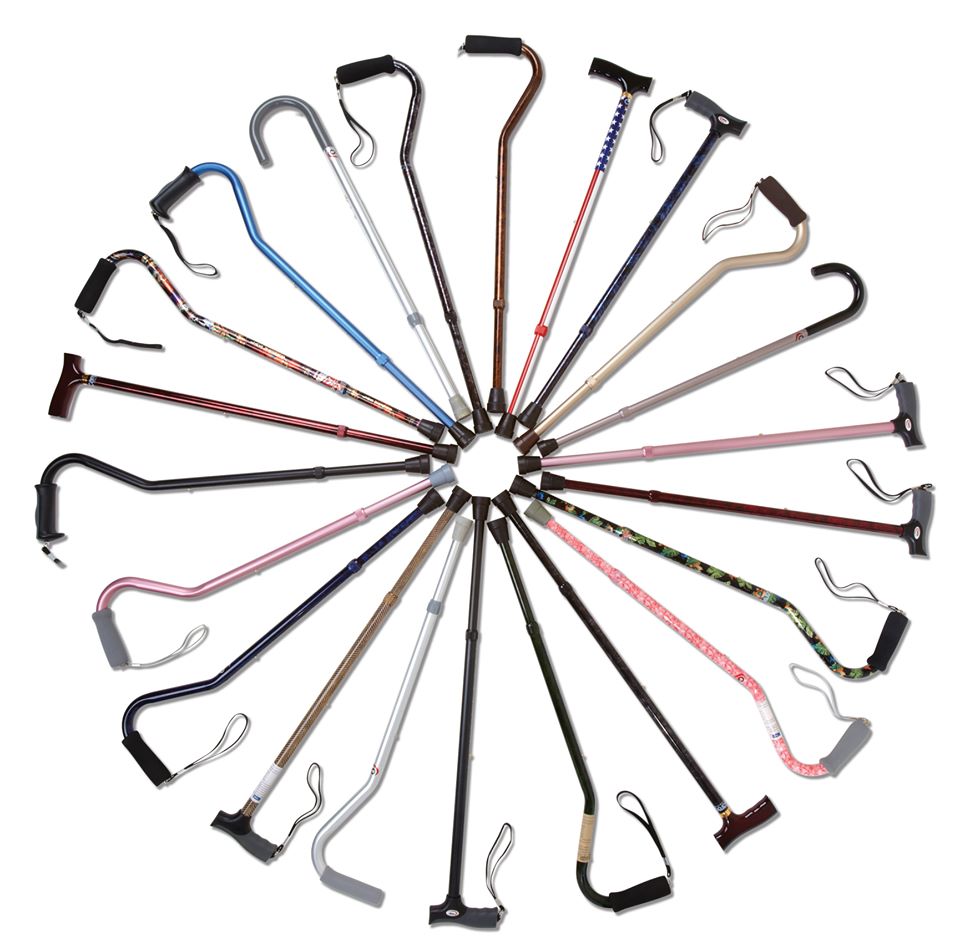
Buyer's Guide: Selecting the Right Walking Cane
Trying to decide on a walking cane?
You've come to the right place. Our buyer's guide breaks down everything you need to know to make the right choice.
Author:START READING
Jump to a Section:
Related ARticles
- Mobility Aid Buyer's Guide
- The Continuum of Mobility: A Guide to Decreased Mobility
- Walking Cane Buyer's Guide
- Walking Cane Quiz

Did you know walking canes are the most popular type of mobility aid?
The most recent mobility aid survey by the CDC found 9.6% of persons aged ≥50 years use a walking cane.
If you're having trouble walking or recently experienced an injury or surgery, one of the first mobility aids you might consider is a cane.
You might be wondering, what is a cane used for?
In addition to providing walking support, canes can help:
- Improve your balance
- Relieve pressure on your joints
- Compensate for the weaker side of your body
- Reduce the risk of falls
- And assist you in sitting or standing.
Not only do walking canes offer physical benefits, but they also bring mental and emotional benefits. By removing the fear of falling and increasing physical activity, walking canes can improve confidence, reduce stress, and increase socialization.
However, choosing the right cane can seem daunting. There are many different types of canes, which can lead to choice overload. Rest assured; this guide will simplify the selection process for you.
By reading this article, you'll better understand the various types of canes, key things to consider, how to use a cane, and more. You'll be better equipped to choose the best cane type that meets your needs.
Do I need a cane?
Before shopping around and buying a cane, it's essential to determine if it is the best mobility aid option for you. While these are the most popular mobility aid, they aren't for everyone.
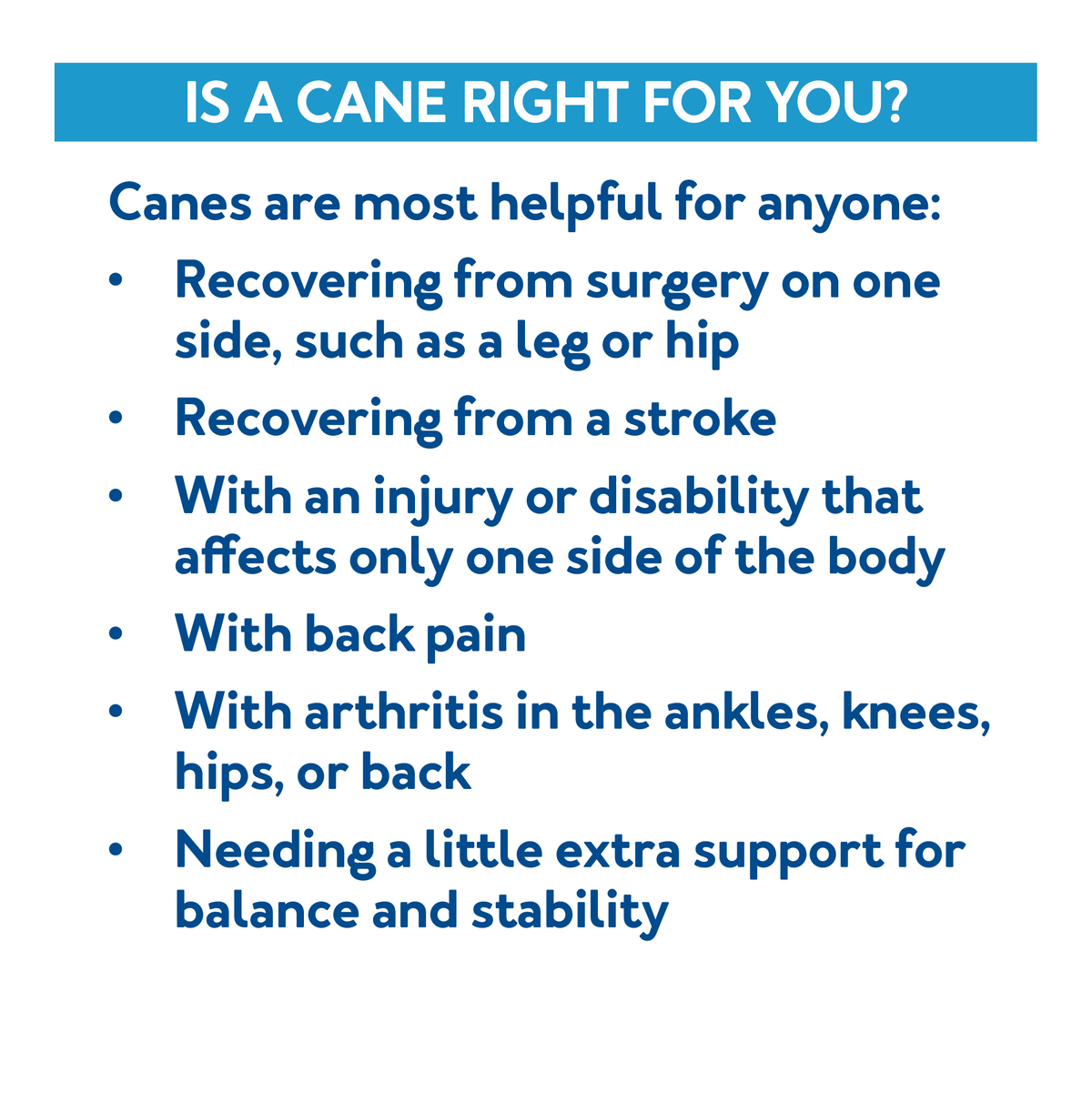
Since canes only provide support to one side of the body, they are most beneficial for those:
- Recovering from surgery on one side, such as a leg or hip
- Recovering from a stroke
- With an injury or disability that affects only one side of the body
- With back pain
- With arthritis in the ankles, knees, hips, or back
- Needing a little extra support for balance and stability
If you have major balance issues or your entire body weight needs support, a walker, wheelchair, or rollator is likely a better mobility option for you.
| Who Should Use a Cane | Who Should Not Use a Cane |
|---|---|
| ✔️ You need additional support on one side ✔️ You need minor balance and stability assistance ✔️ You're recovering from an injury or surgery that impacts your ability to walk ✔️ You experience pain in your back, joints, or hip while walking | ❌ You need support on both sides ❌ You need major balance and stability assistance ❌ You can't walk ❌ You have limited arm strength ❌ You have poor hand grip or hand pain that prevents you from putting pressure on your hand |
What to Consider
Once you've determined that a cane will be most helpful for you, it's time to pick one out. To narrow your search and find the right cane, you'll want to consider the cane type, handle, material and design, height, and weight capacity you'll need or prefer.
Cane Types
Single Tip Cane
The single-tip cane, also called the single-point cane, is the most standard type and probably the most familiar to you. As its name suggests, a single-tip cane provides some added stability by distributing your weight over a single point. This is typically enough support for those with minor mobility issues, arthritis, or those keeping weight off an injury.
| Pros | Cons |
|---|---|
| ✔️ Lightweight ✔️ Versatile - can be used on different surfaces ✔️ Agile - single tip is easier for turning ✔️ More options available ✔️ Can be turned into a quad cane with a quad cane tip | ❌ Provides limited stability ❌ Requires strength and stability ❌ Not suitable for rough terrain or uneven surfaces ❌ Not as easy to store - requires something to lean on |
Quad Tip Cane
A quad-tip cane is a better option for those who need more support than a single-tip cane. It distributes your weight across four points rather than just one, providing more balance and stability. Although it may be bulkier than a single-tip cane, it can stand independently and is more likely to improve steadiness and reduce fall risk. You may prefer this added support if you are recovering from a stroke or have more significant balance issues.
| Pros | Cons |
|---|---|
| ✔️ Provides more stability than a single-tip cane ✔️ Requires less strength and stability ✔️ Suitable on uneven surfaces ✔️ Easier to place when not being used - doesn't need to lean on anything | ❌ Tends to be heavier than single-tip canes ❌ Bulky - can be difficult to navigate narrow spaces ❌ Limited range of motion ❌ More tips need replacement when worn out |
Folding Cane
If you would like a cane that is easy to store and travel with, you might prefer a folding or collapsible cane. These canes fold smaller, so they only take up little space when unused. They are most often single-tip canes, but you can also find quad-tip folding canes if a quad-tip is needed.
| Pros | Cons |
|---|---|
| ✔️ Portable - easily fold for storage in a bag or purse ✔️ Lightweight ✔️ Agile - single tip is easier for turning ✔️ Can be turned into a quad cane with a quad cane tip | ❌ Provides limited stability ❌ Requires strength and stability ❌ Not suitable for rough terrain or uneven surfaces ❌ Limited durability - may not be as durable compared to other cane tips as the folding mechanism can be a potential point of weakness |
Walking Stick vs Cane
You may sometimes hear the terms walking stick and walking cane used interchangeably. A walking stick is typically used part-time during recreational activities such as hiking. They can help keep your balance on uneven terrain but provide a different amount of support than a cane.
If you need a mobility aid for everyday or medical purposes, you'll need a walking cane rather than a walking stick.
| Walking Stick | Walking Cane |
|---|---|
| - Typically made of wood or other natural materials - Often used for hiking or outdoor activities - Can provide some stability, but not as much as a cane - Usually does not have a handle or grip for the hand - May be less expensive than a walking cane | - Typically made of metal or other durable materials - Often used for stability and support during walking - Can be adjusted to fit an individual's specific needs - Typically features a handle or grip for the hand - May be more expensive than a walking stick |
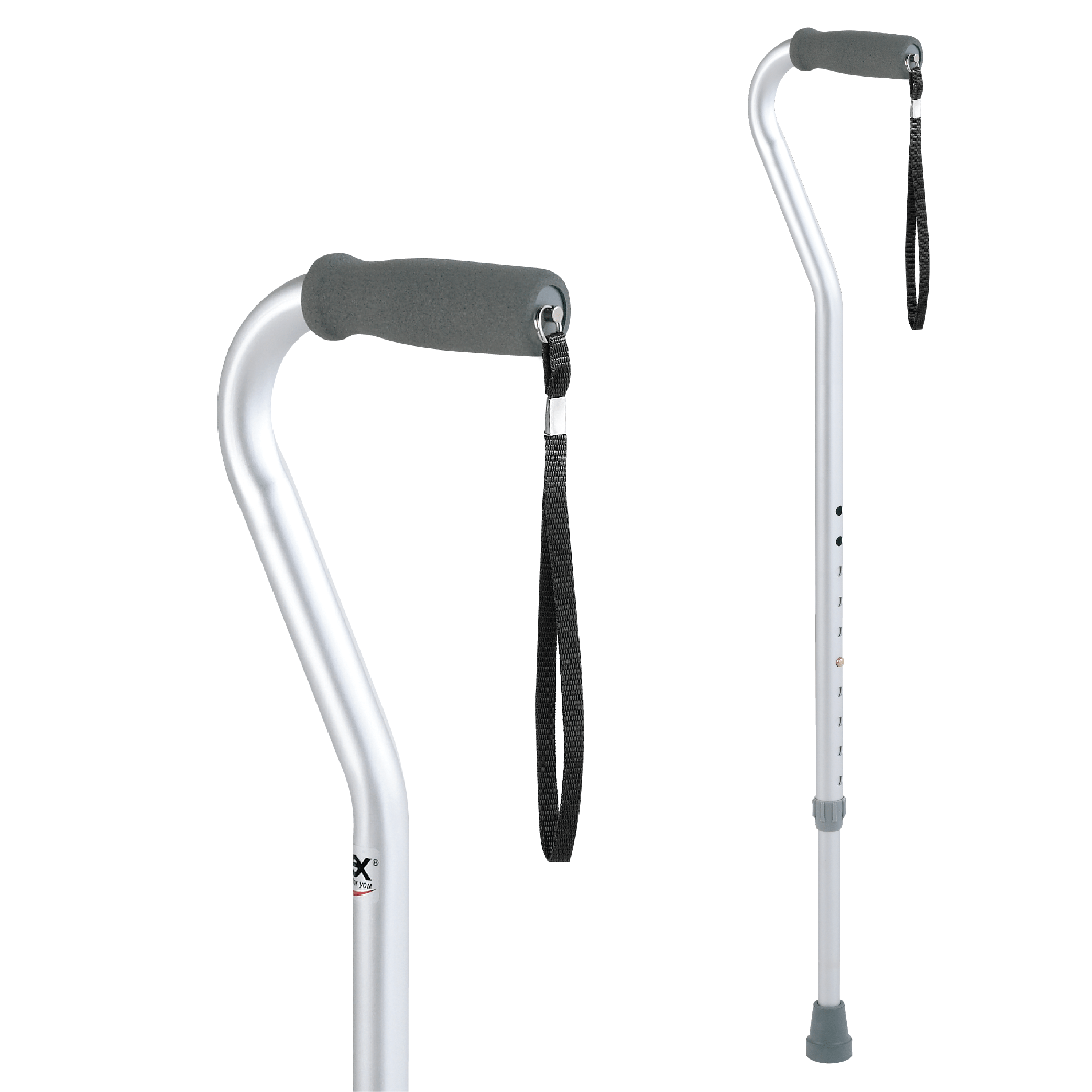

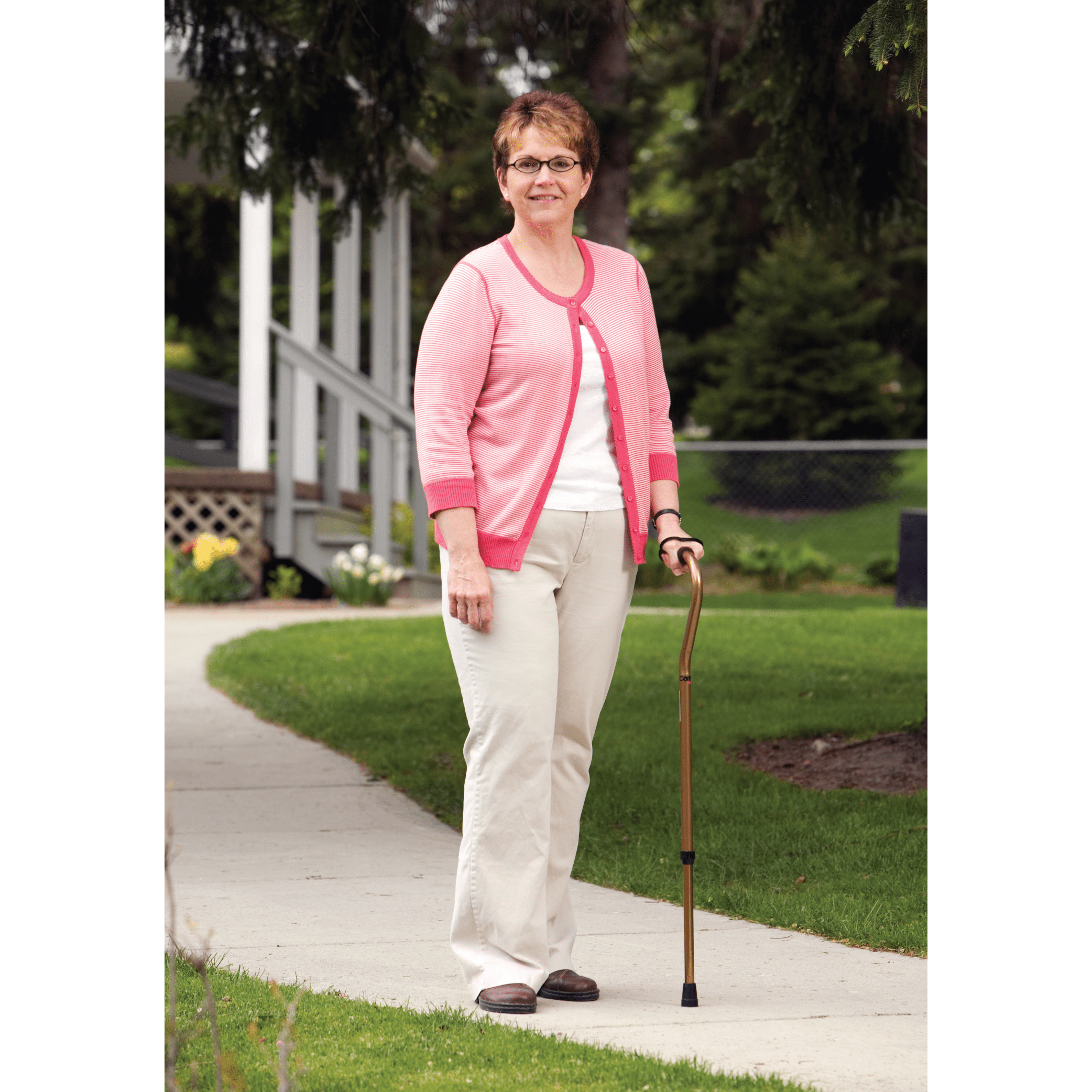
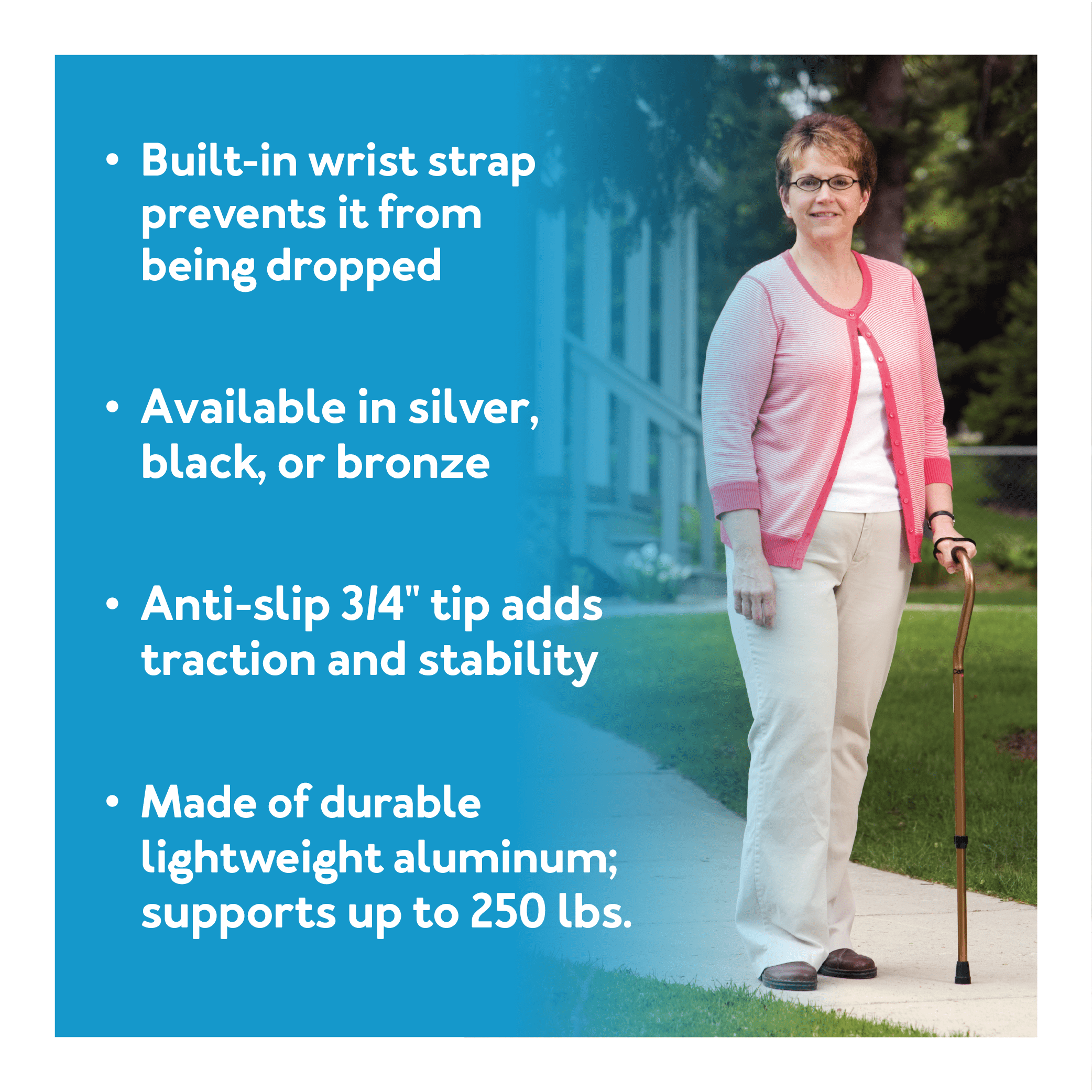
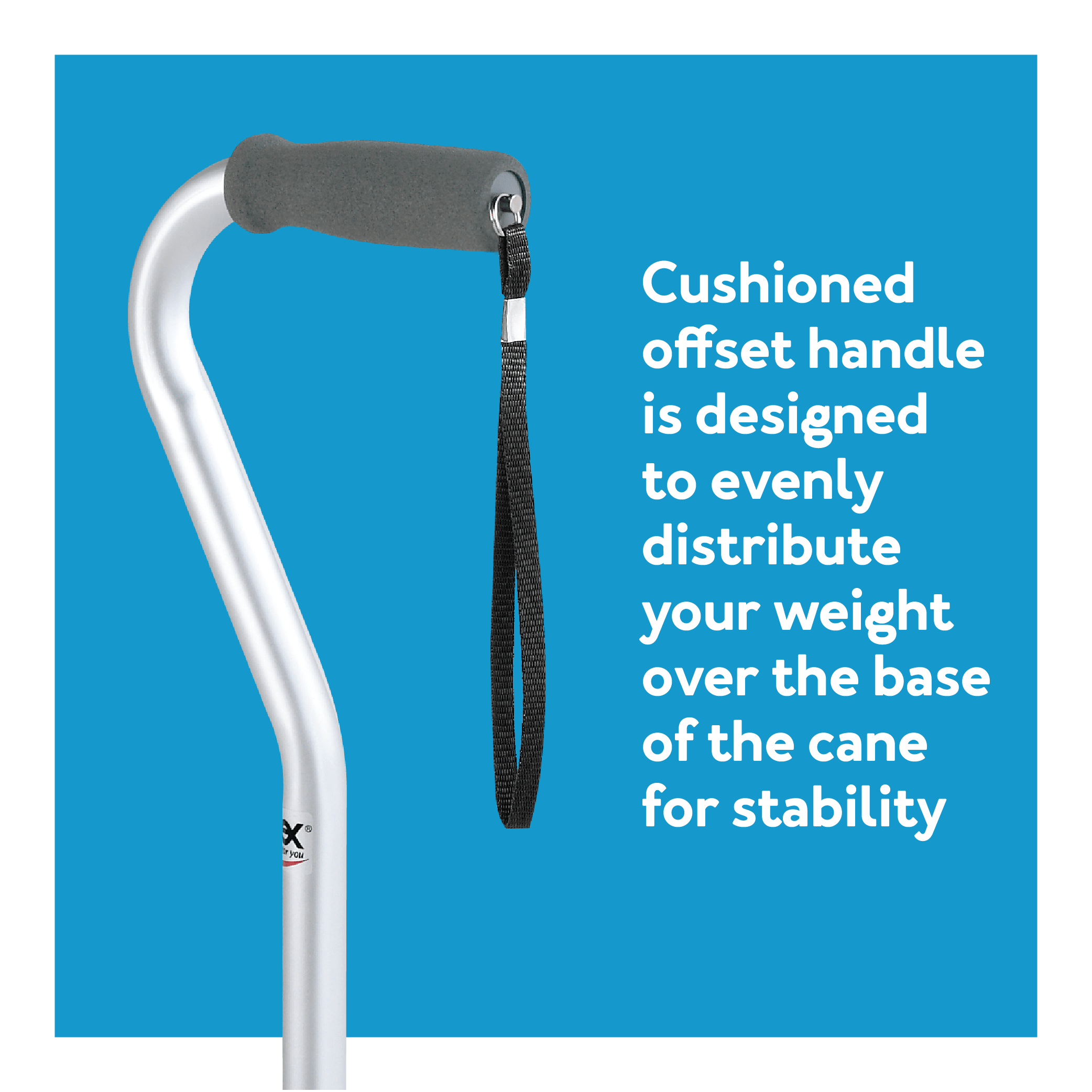
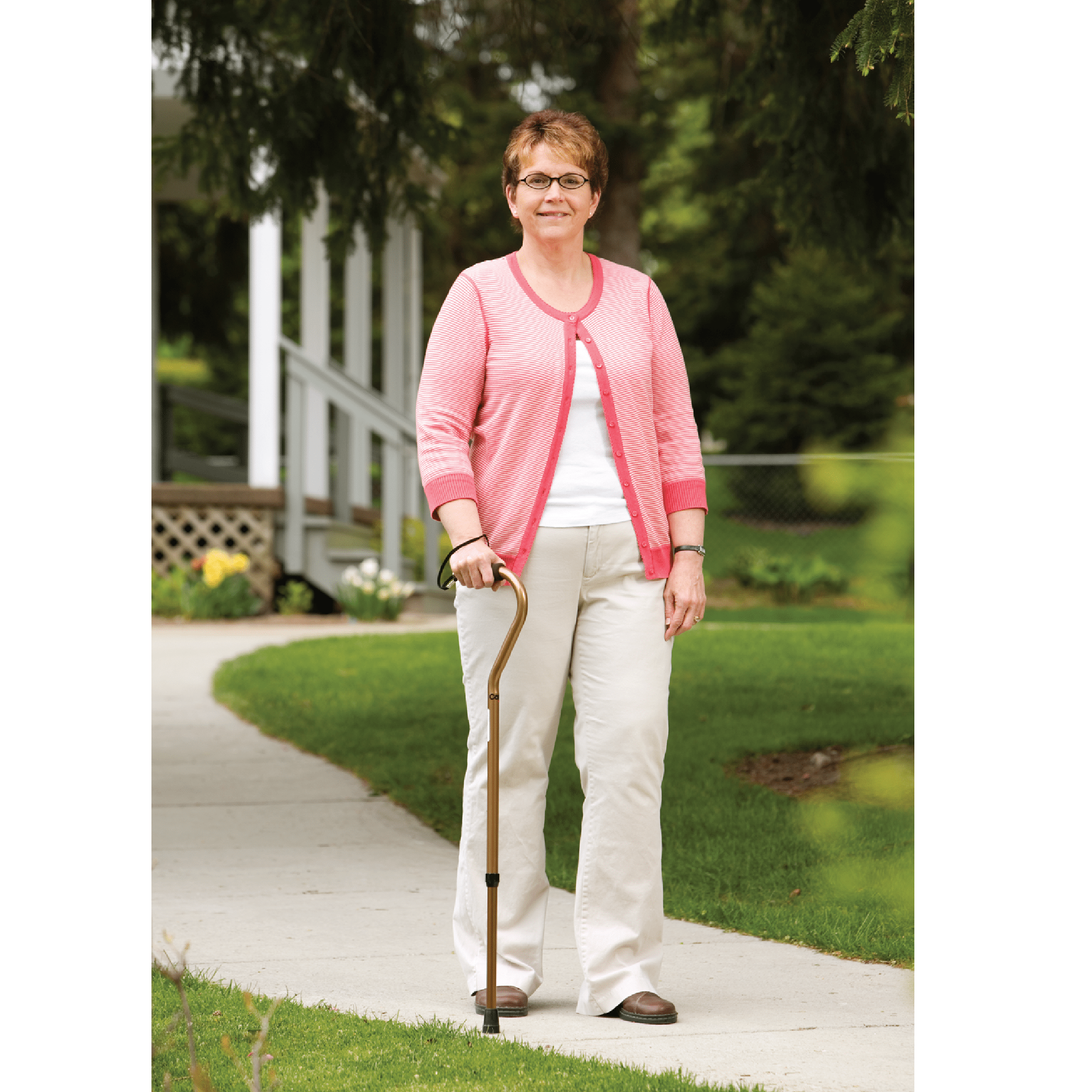
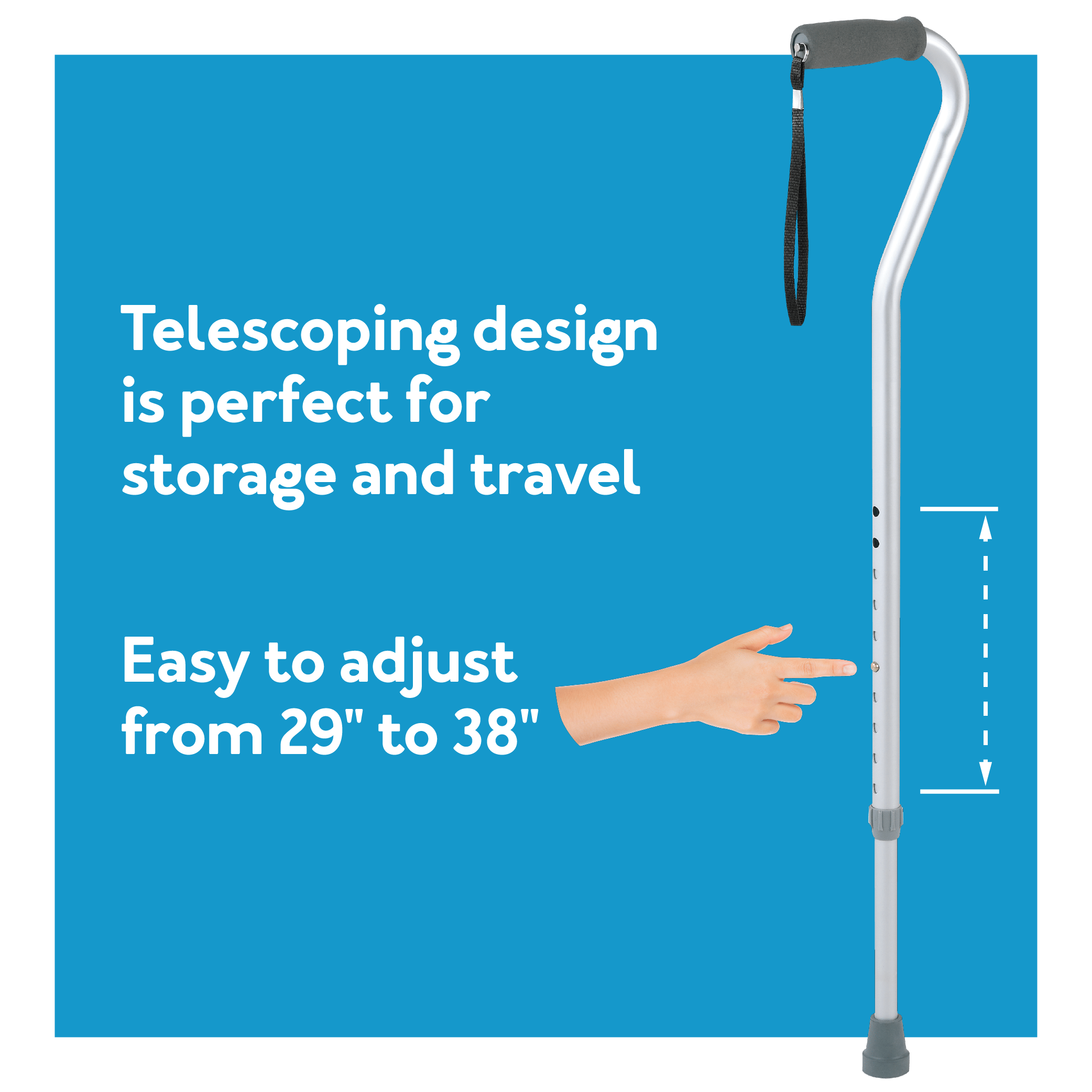
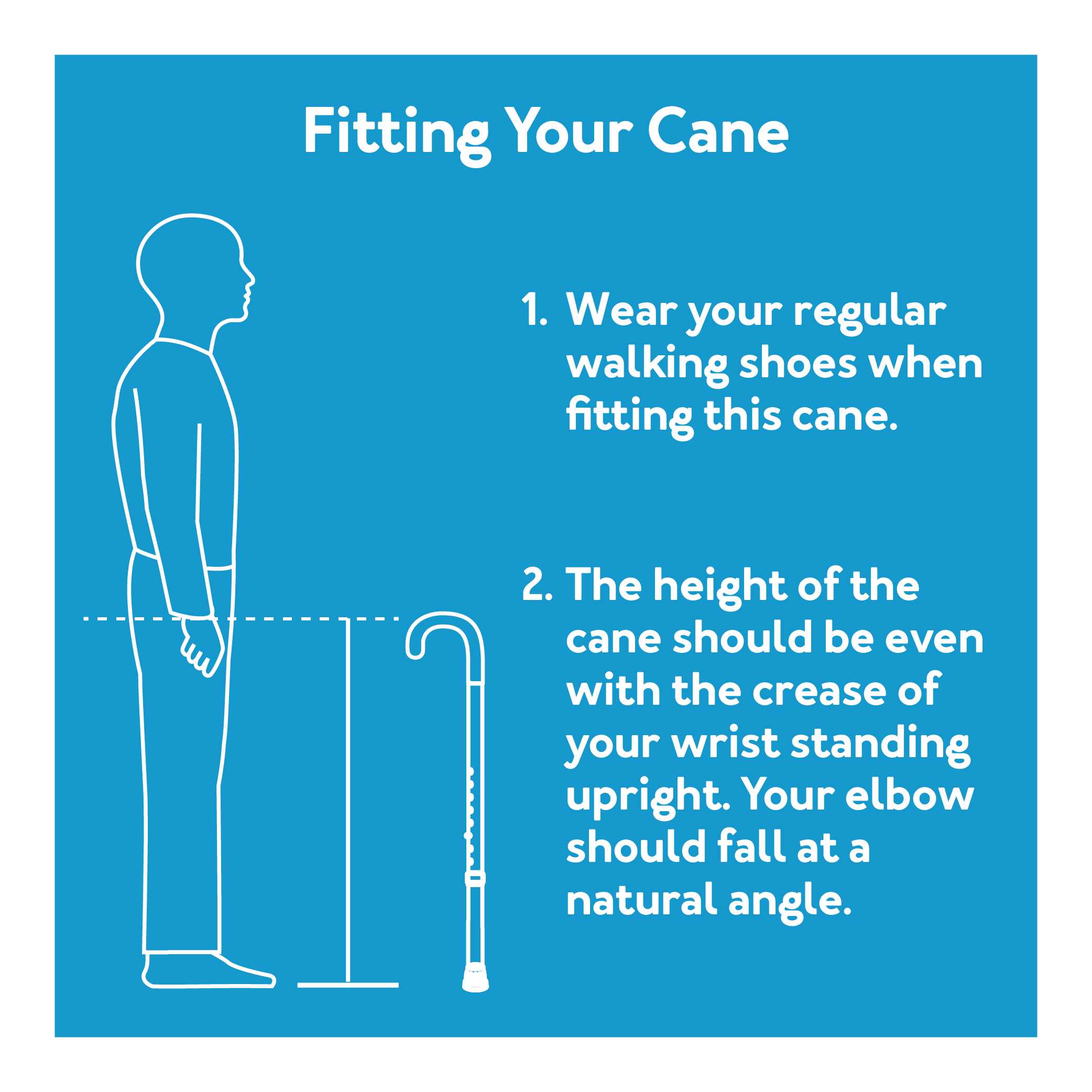
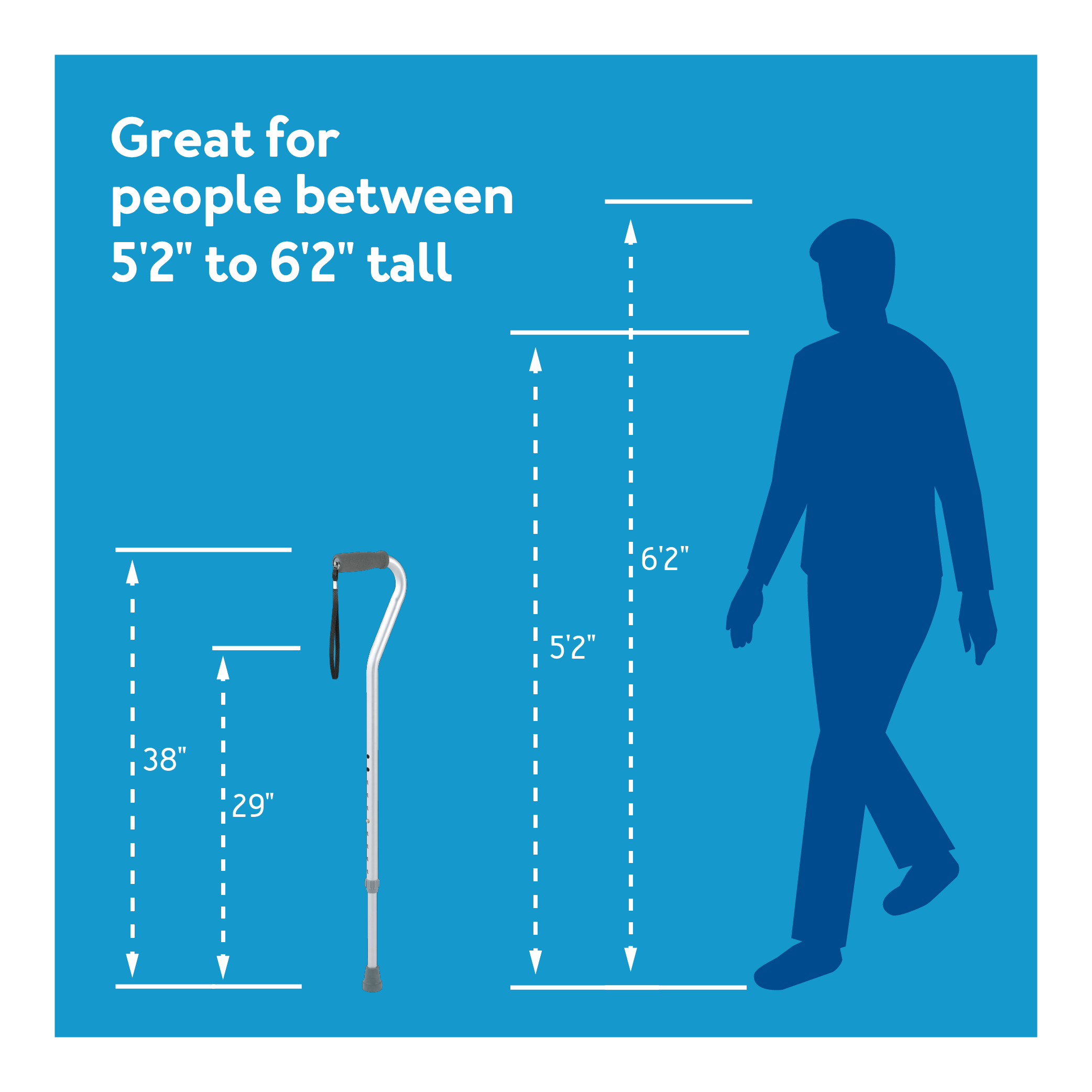
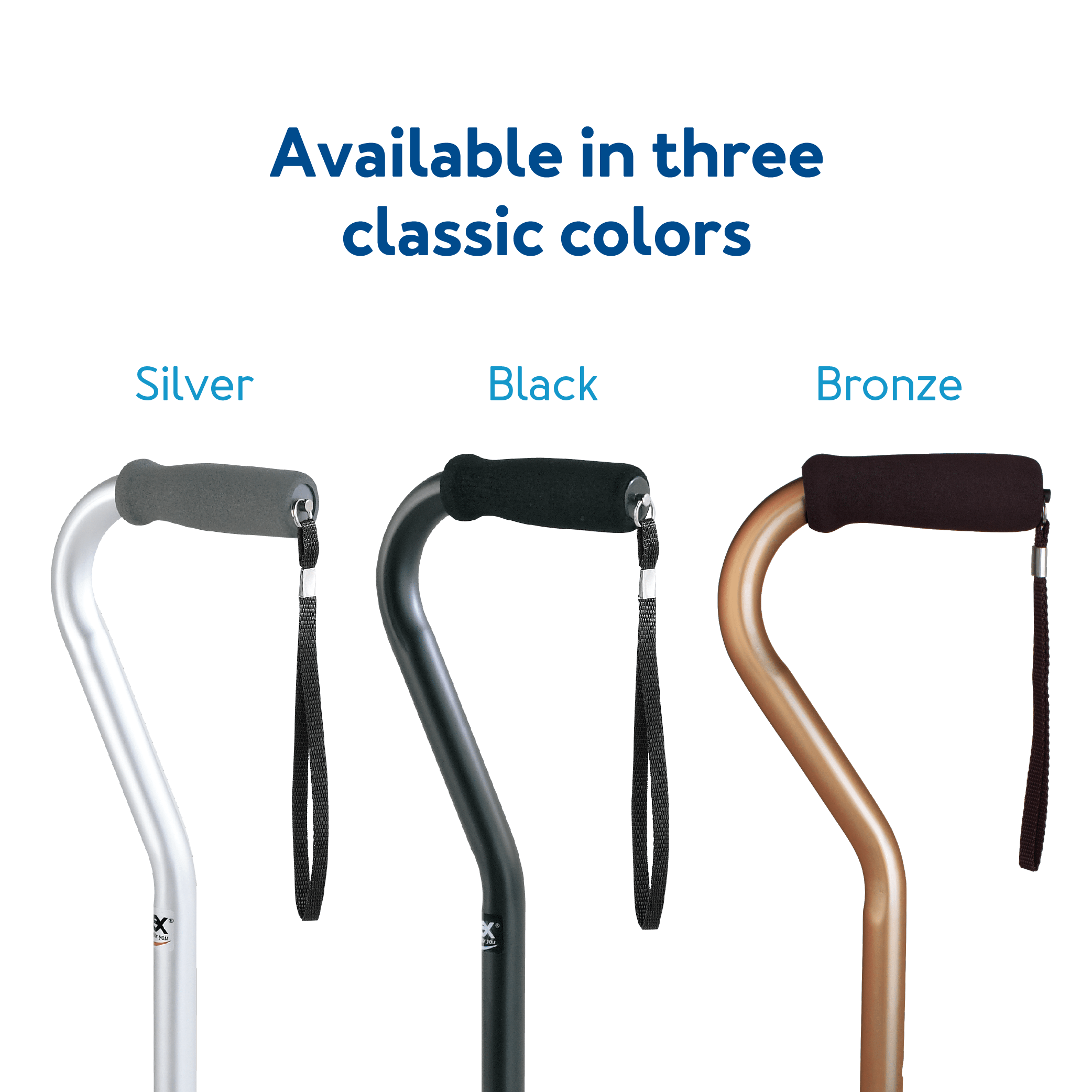
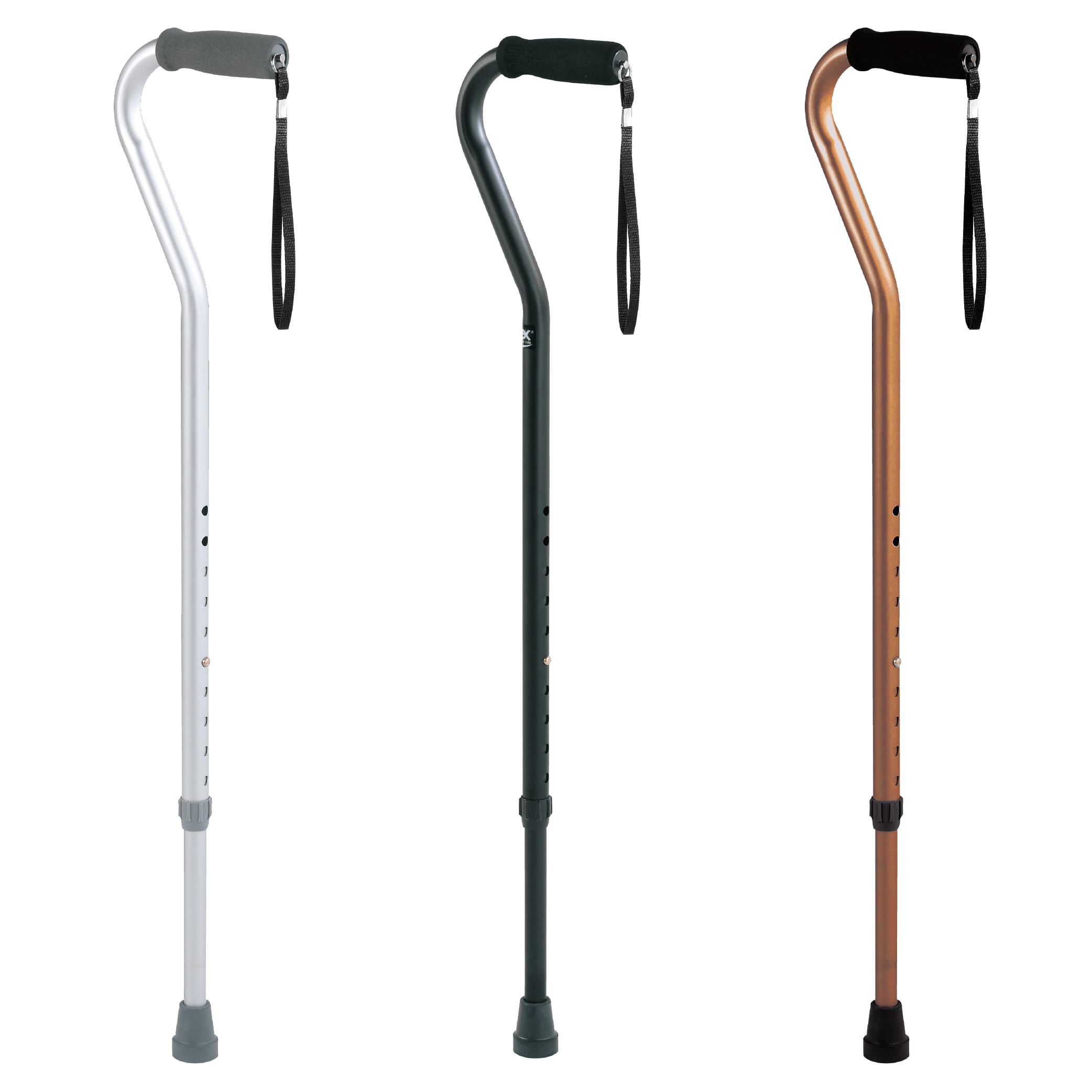
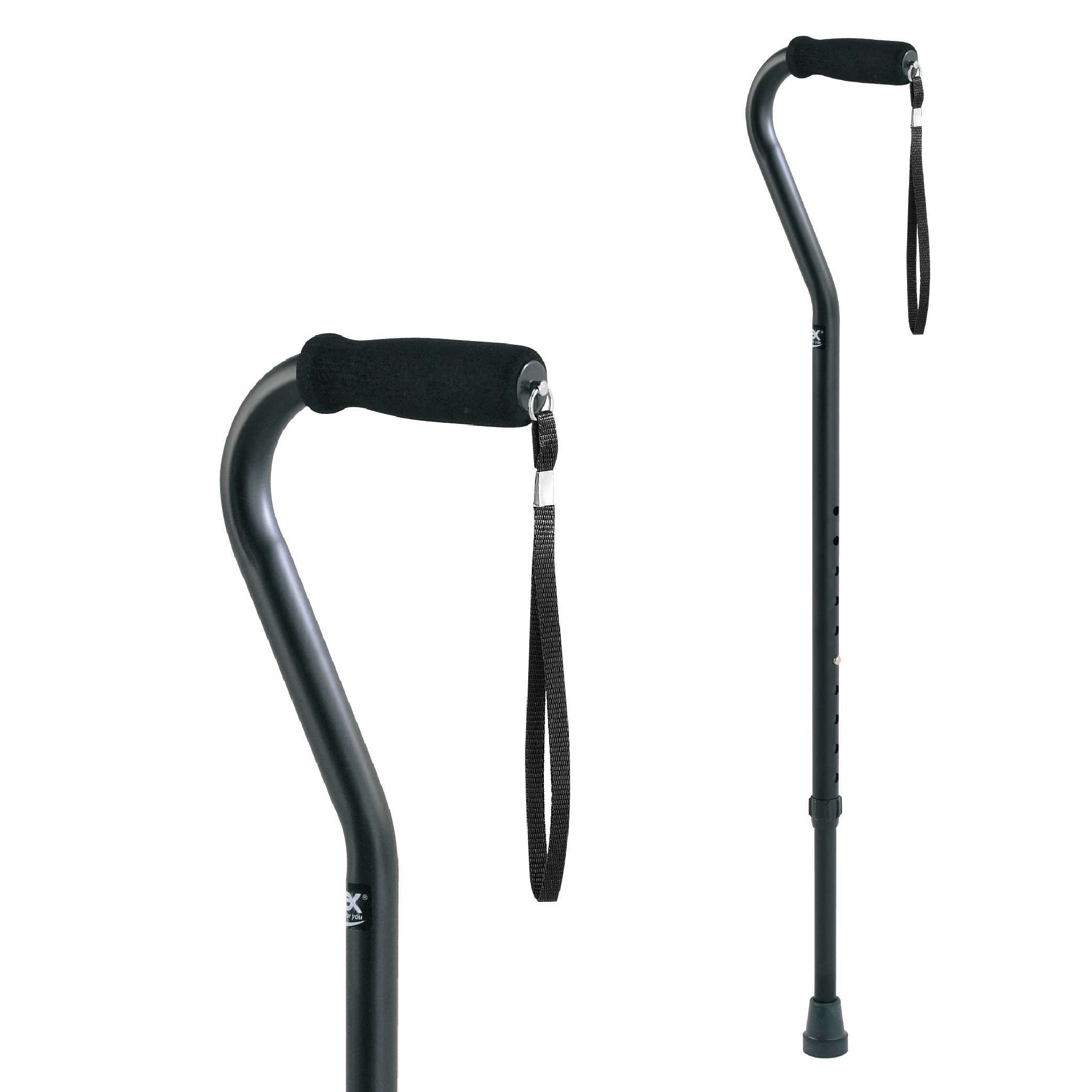
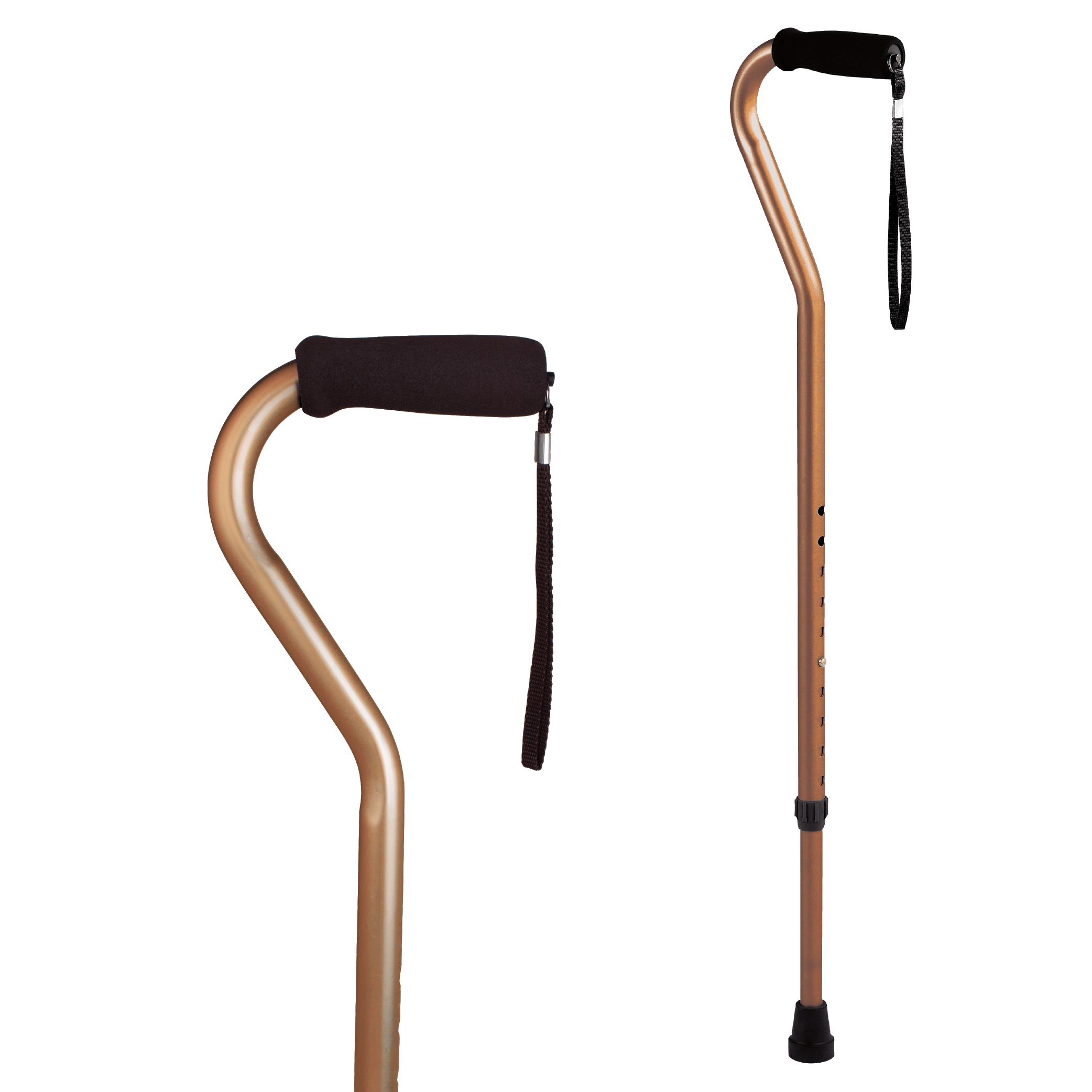
Carex Offset Aluminum Cane with Cushioned Grip and Wrist Strap
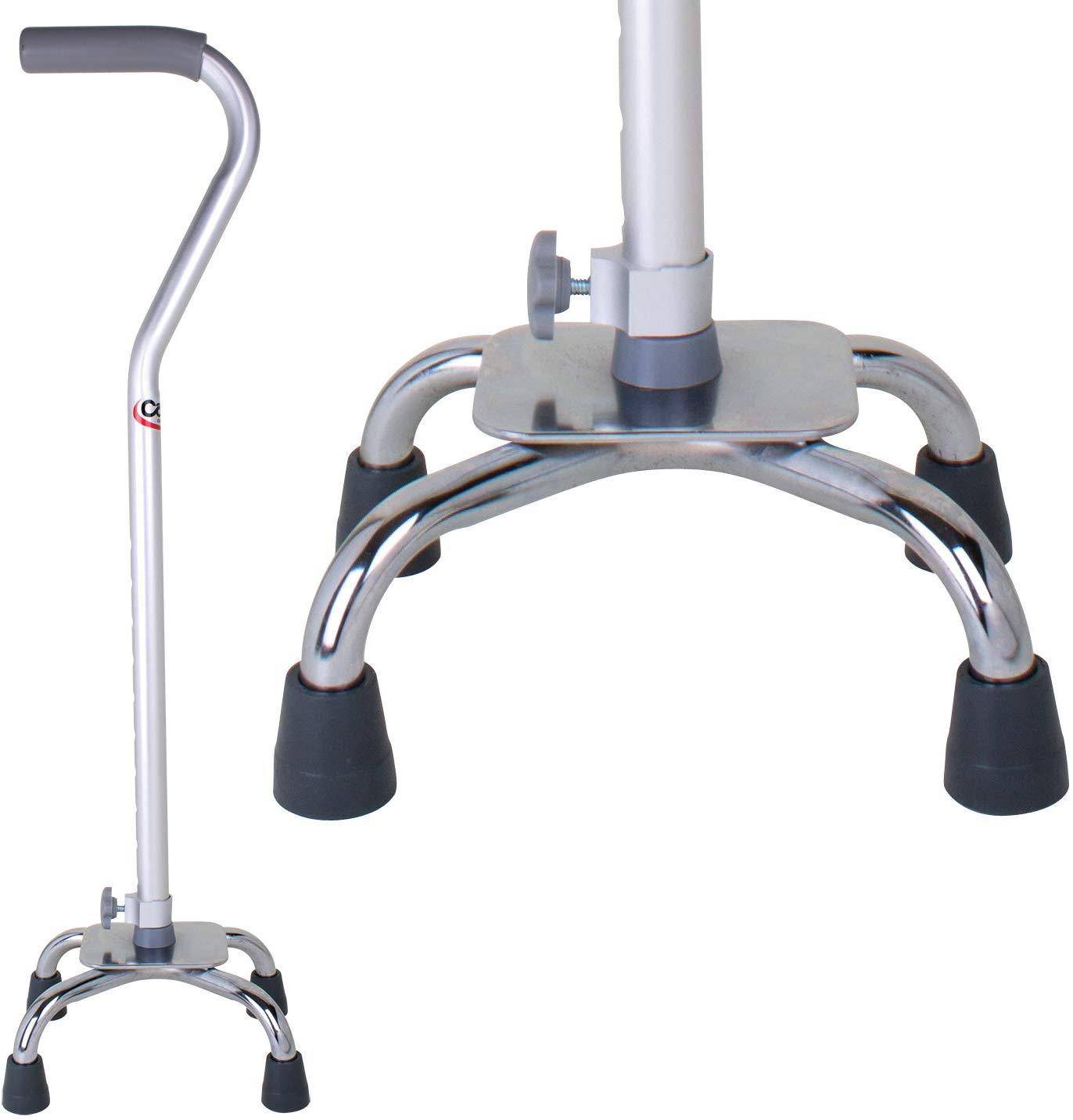

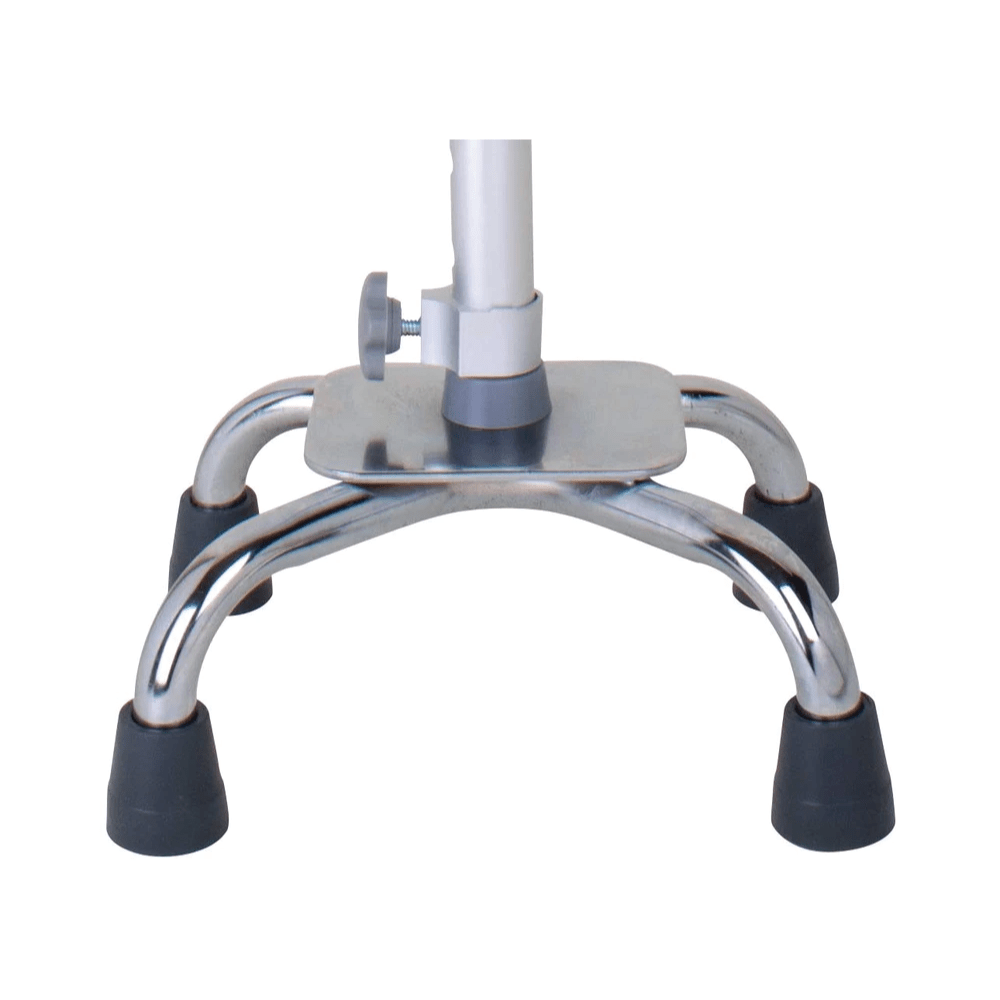
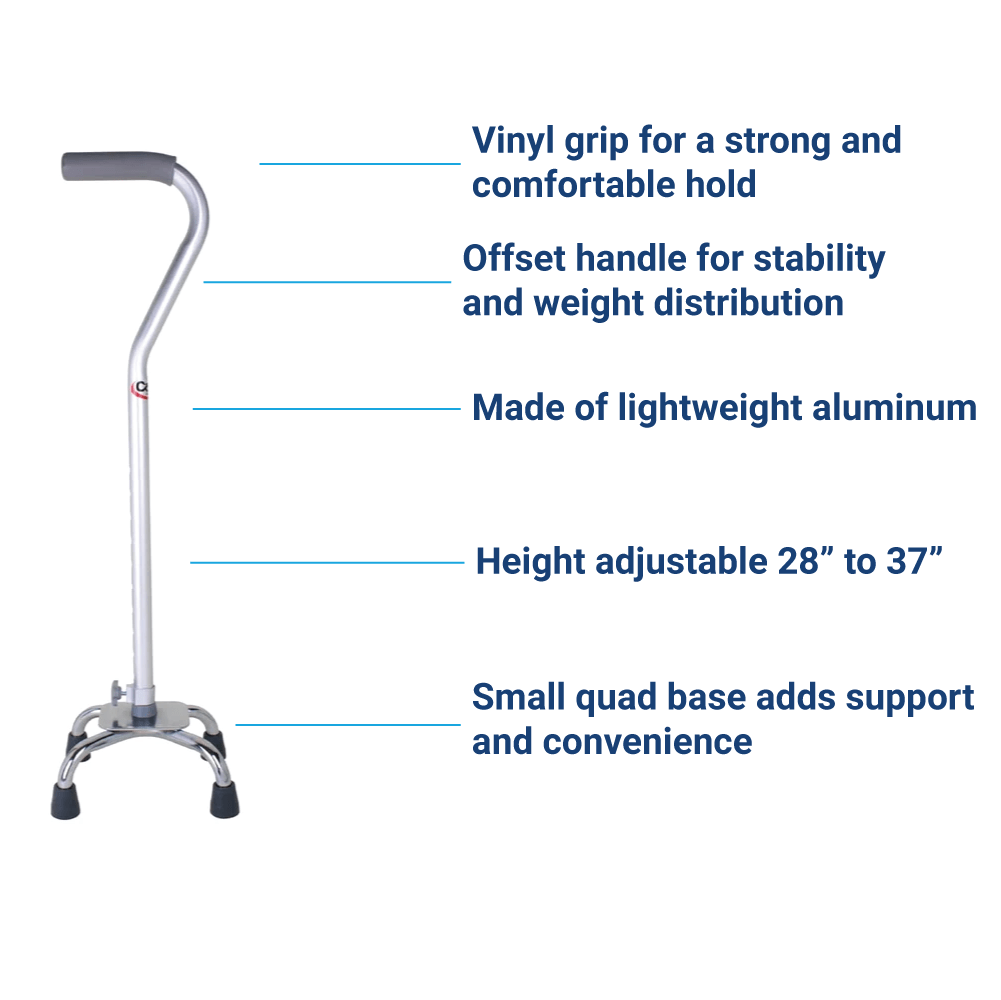
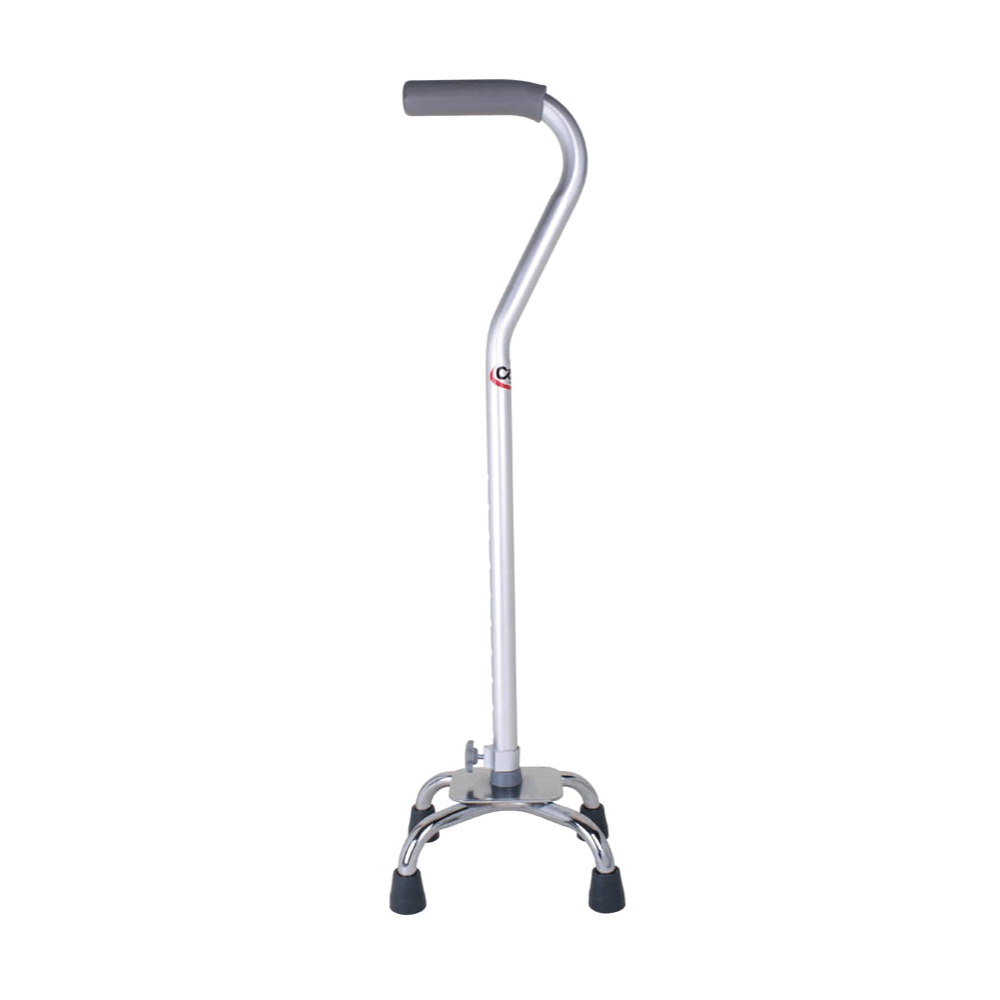
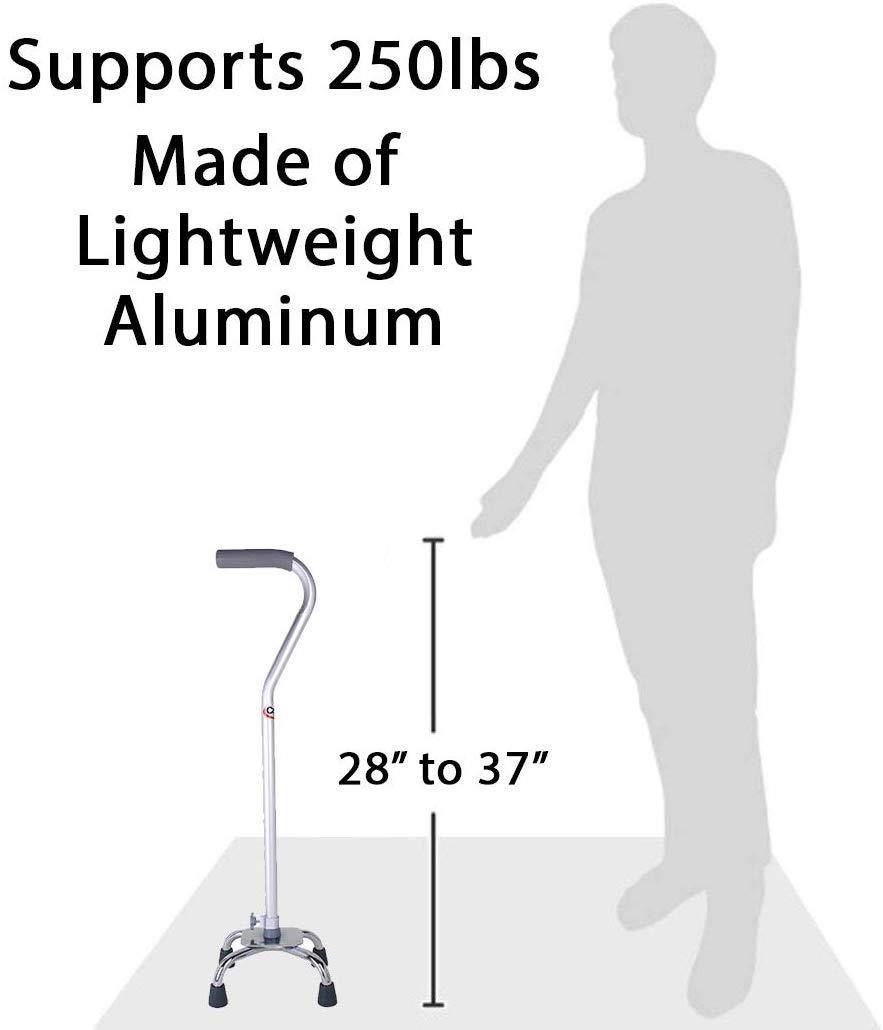
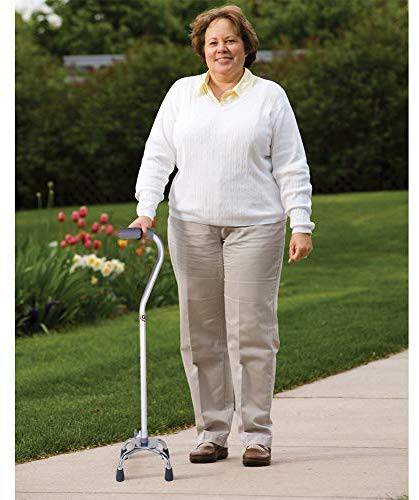
Carex Small Base Offset Quad Cane
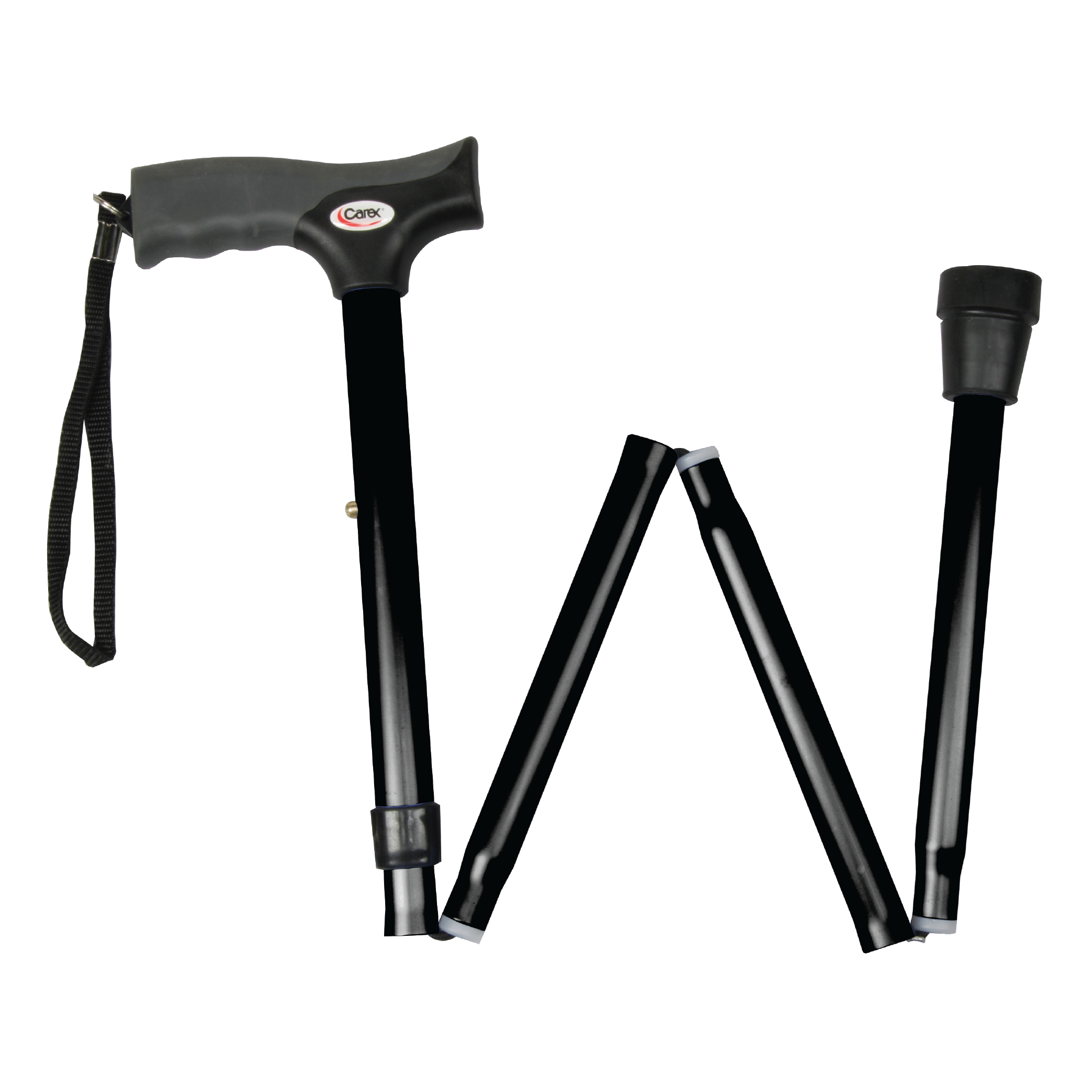

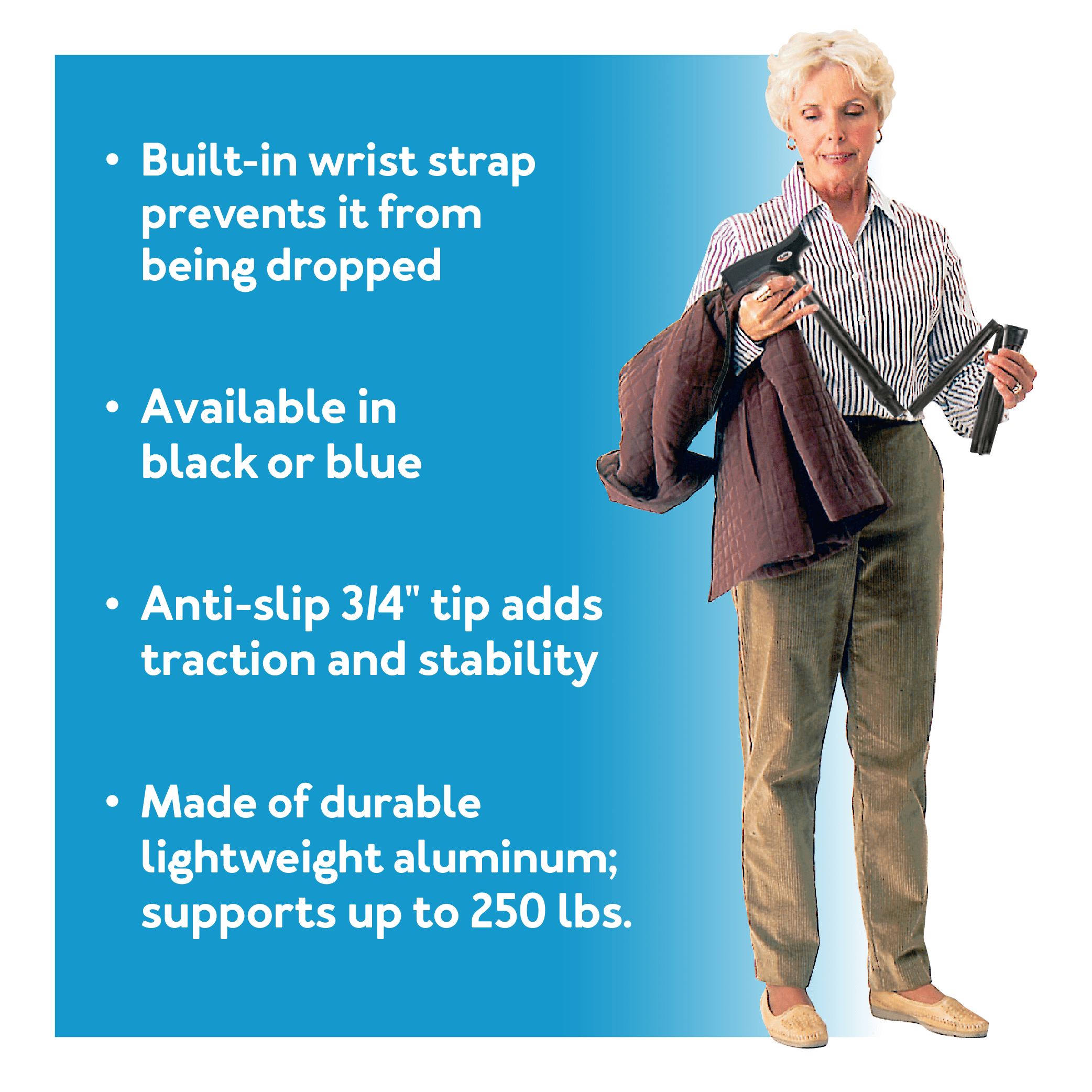
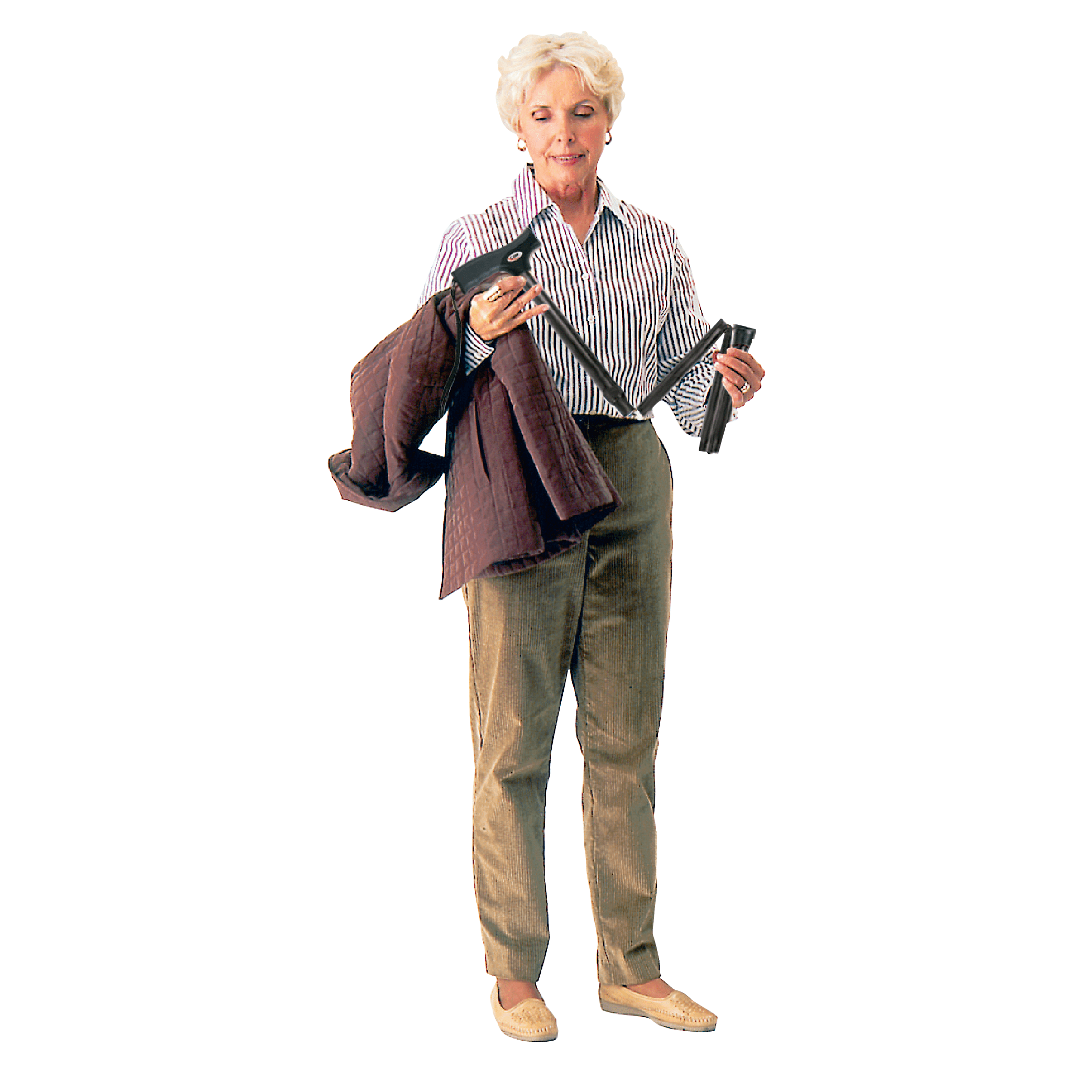
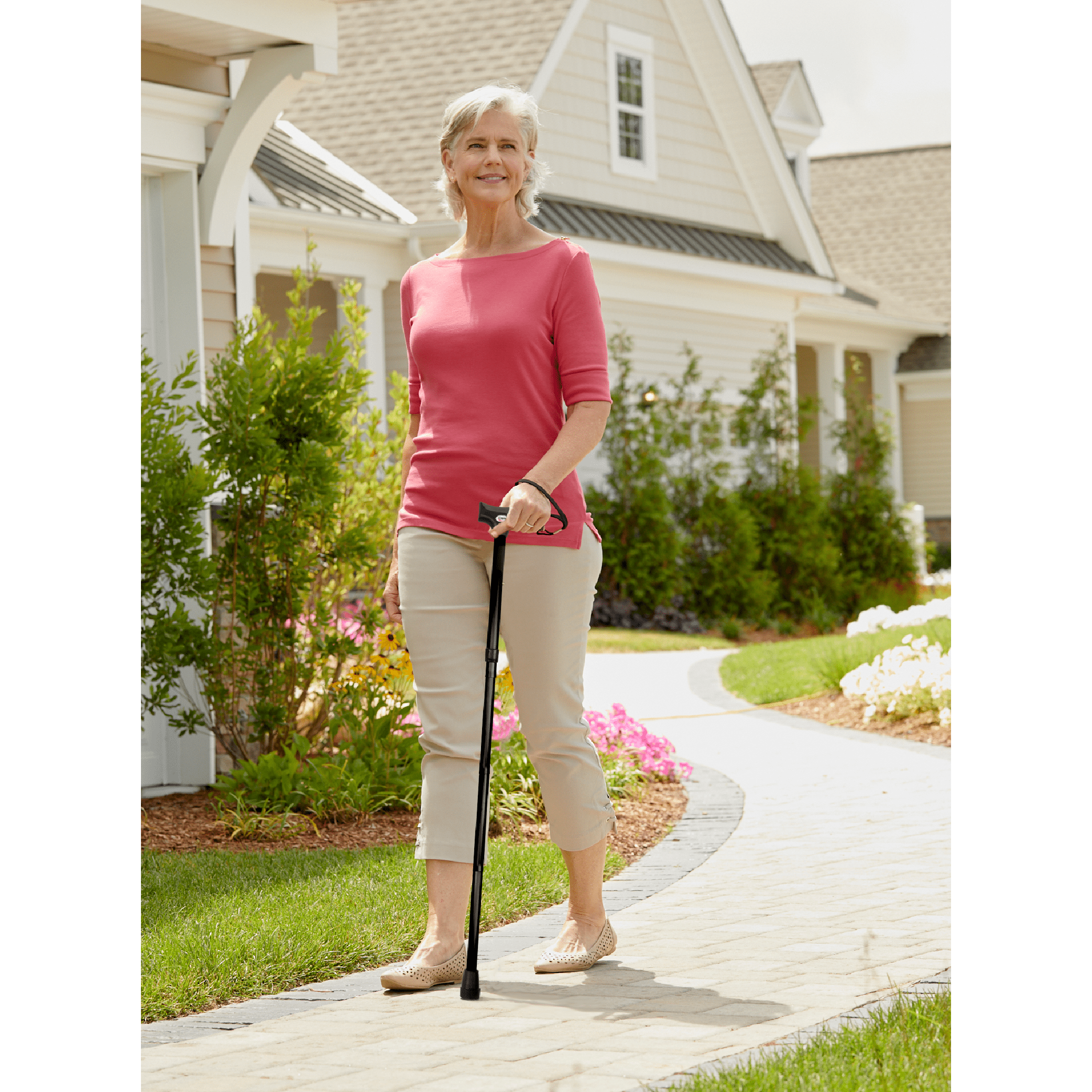
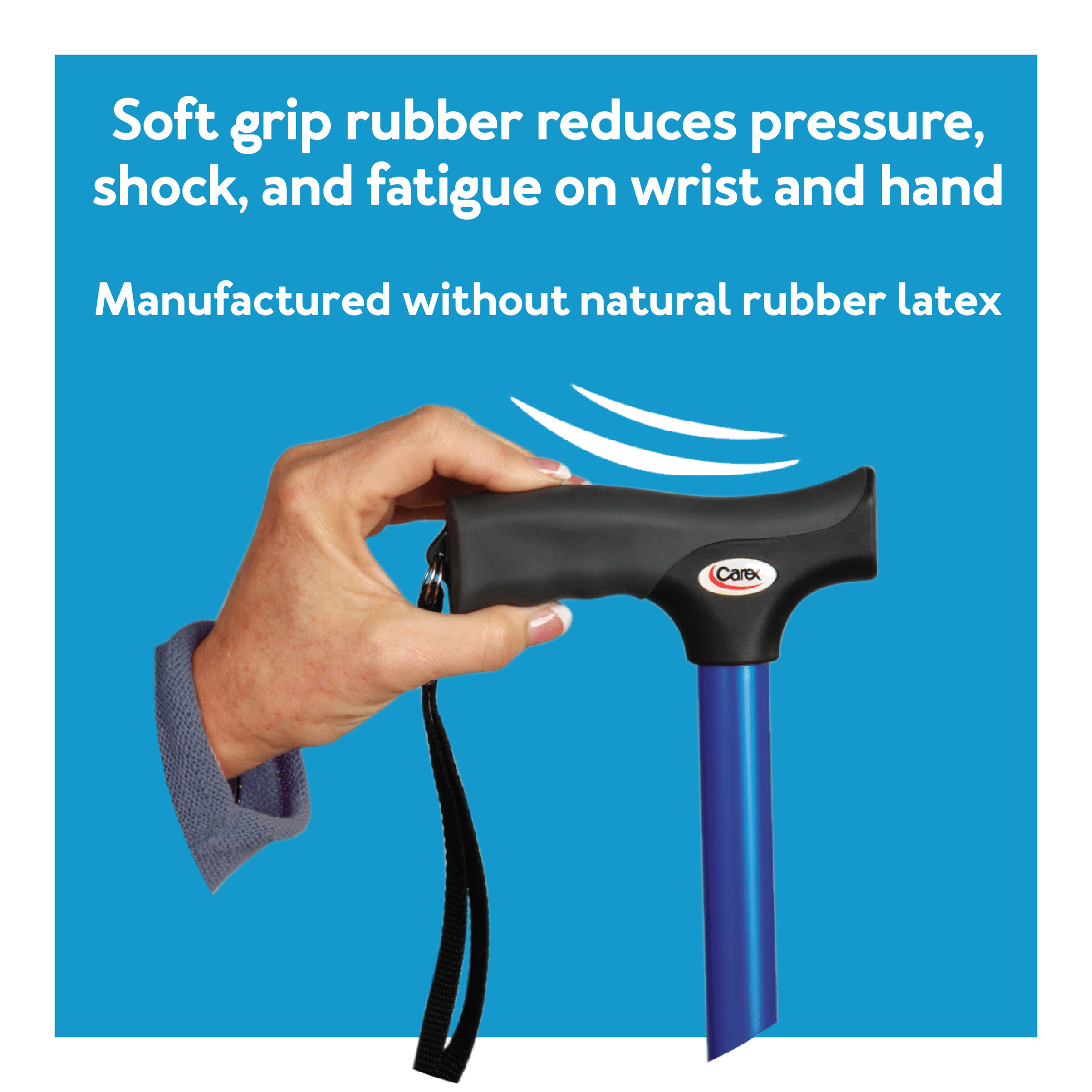
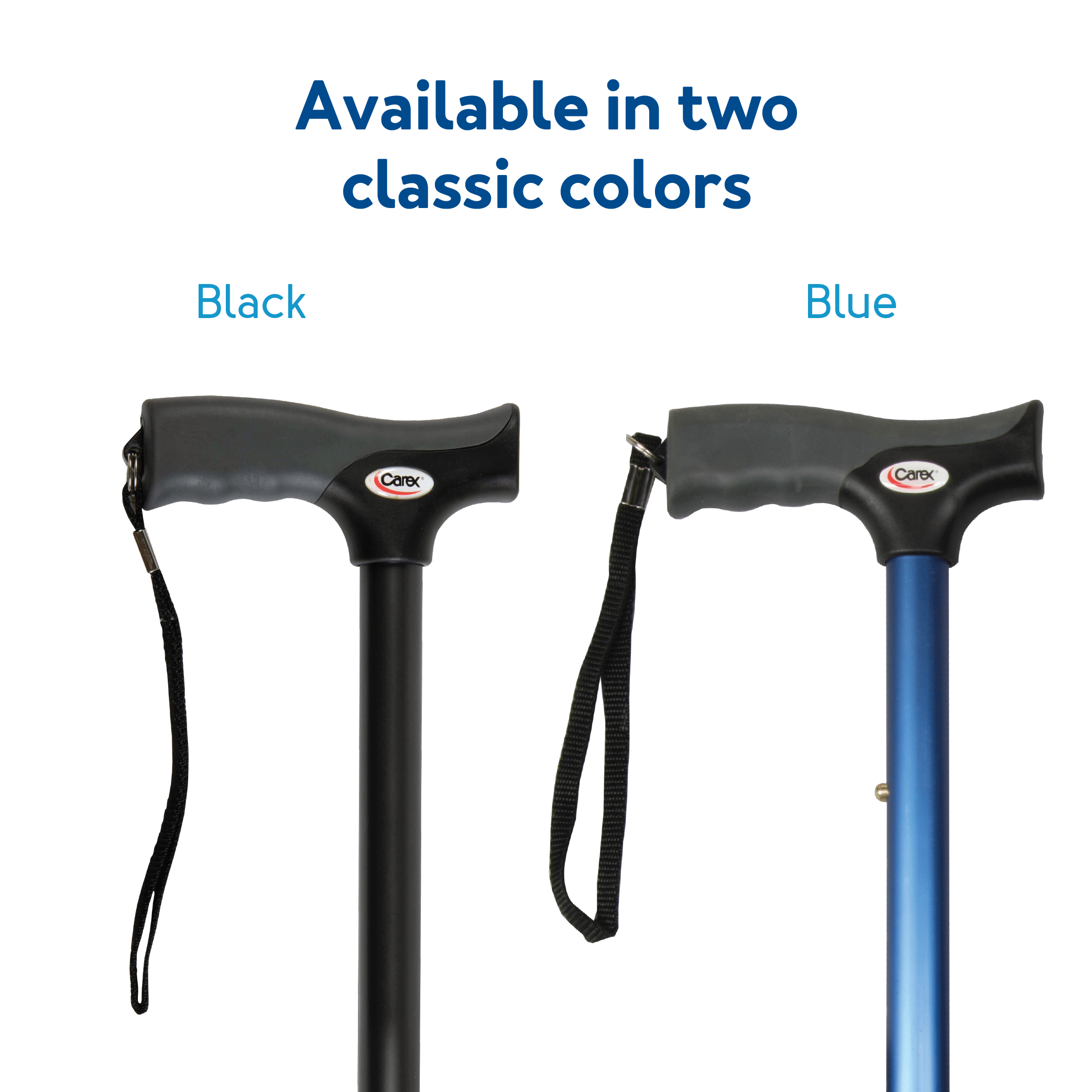
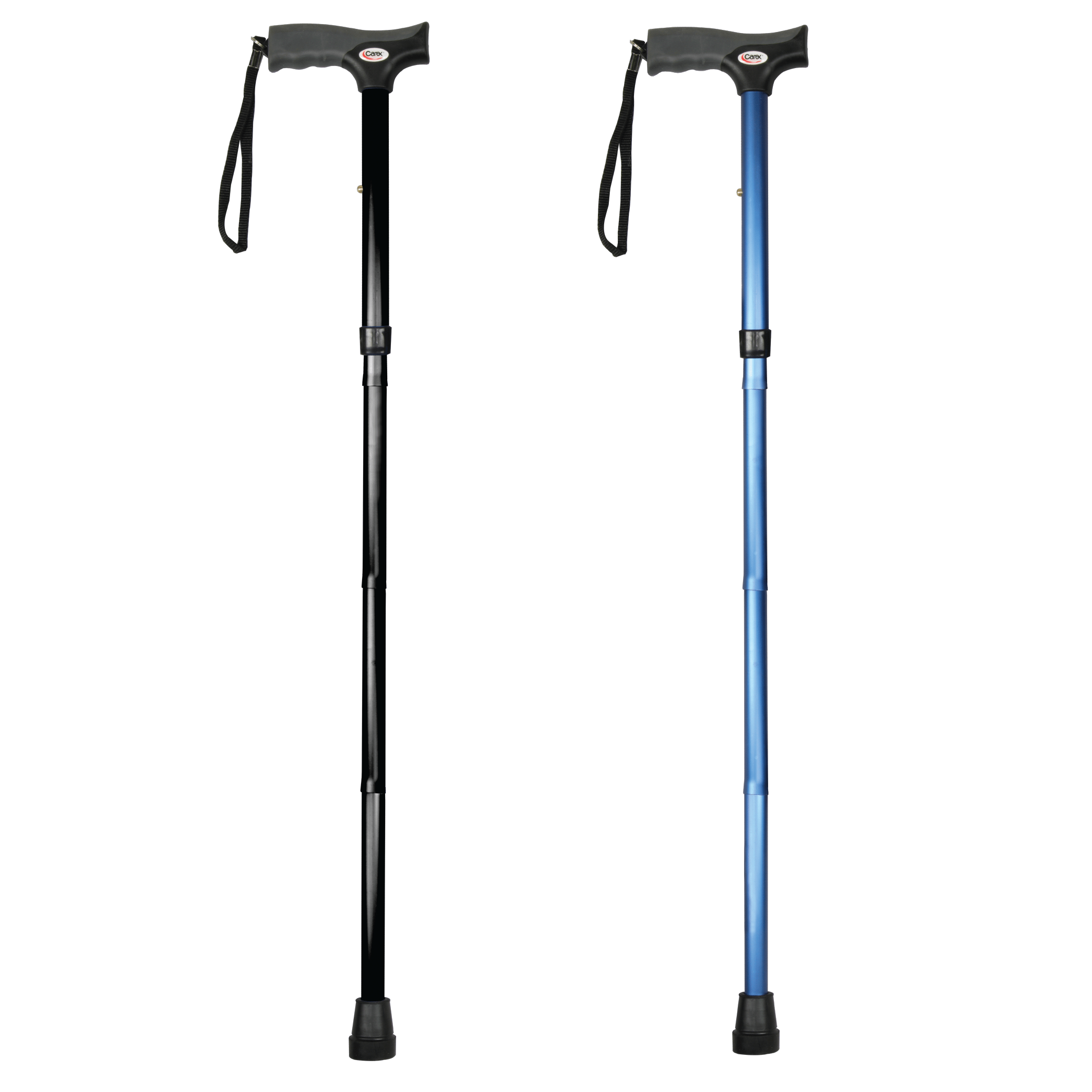
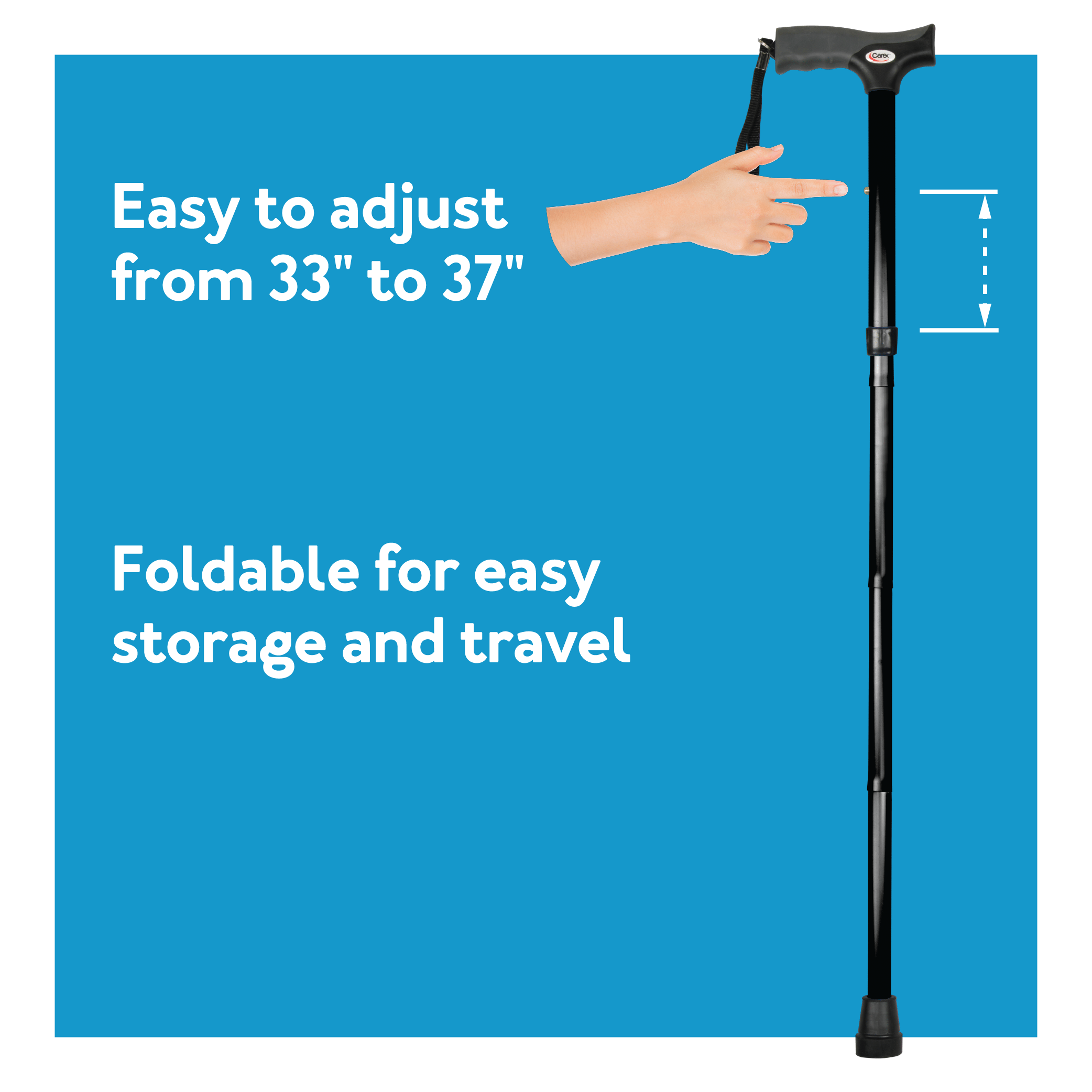
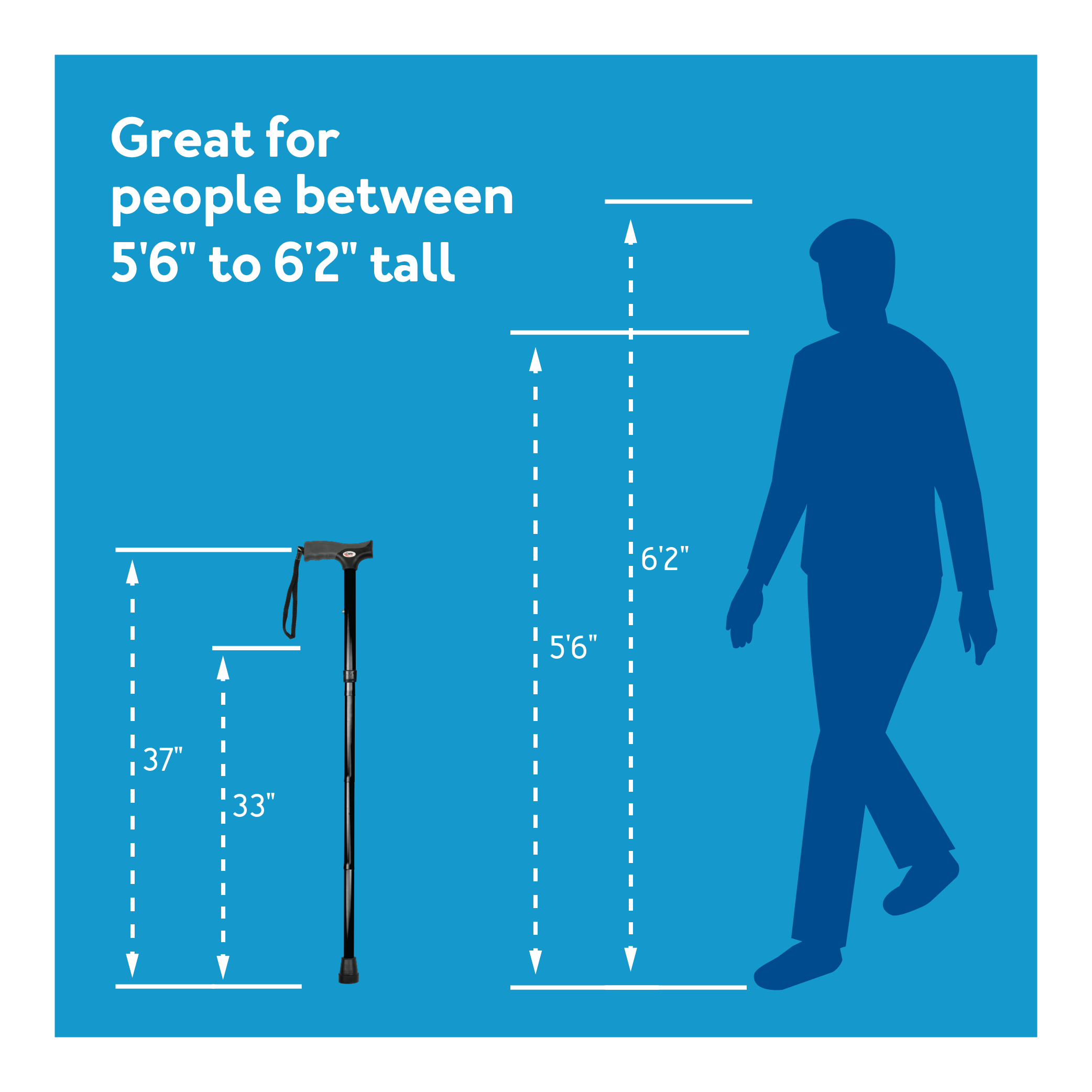
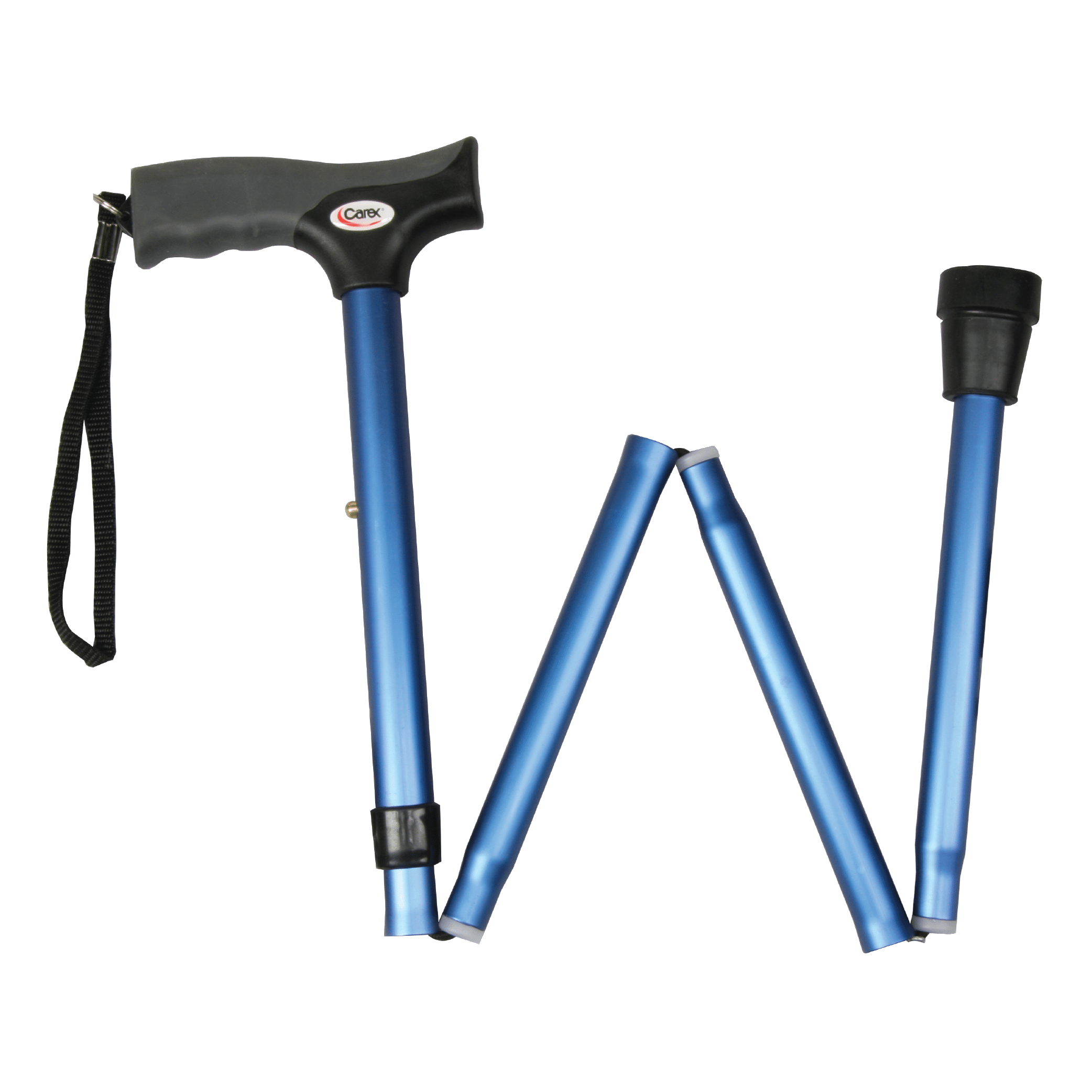
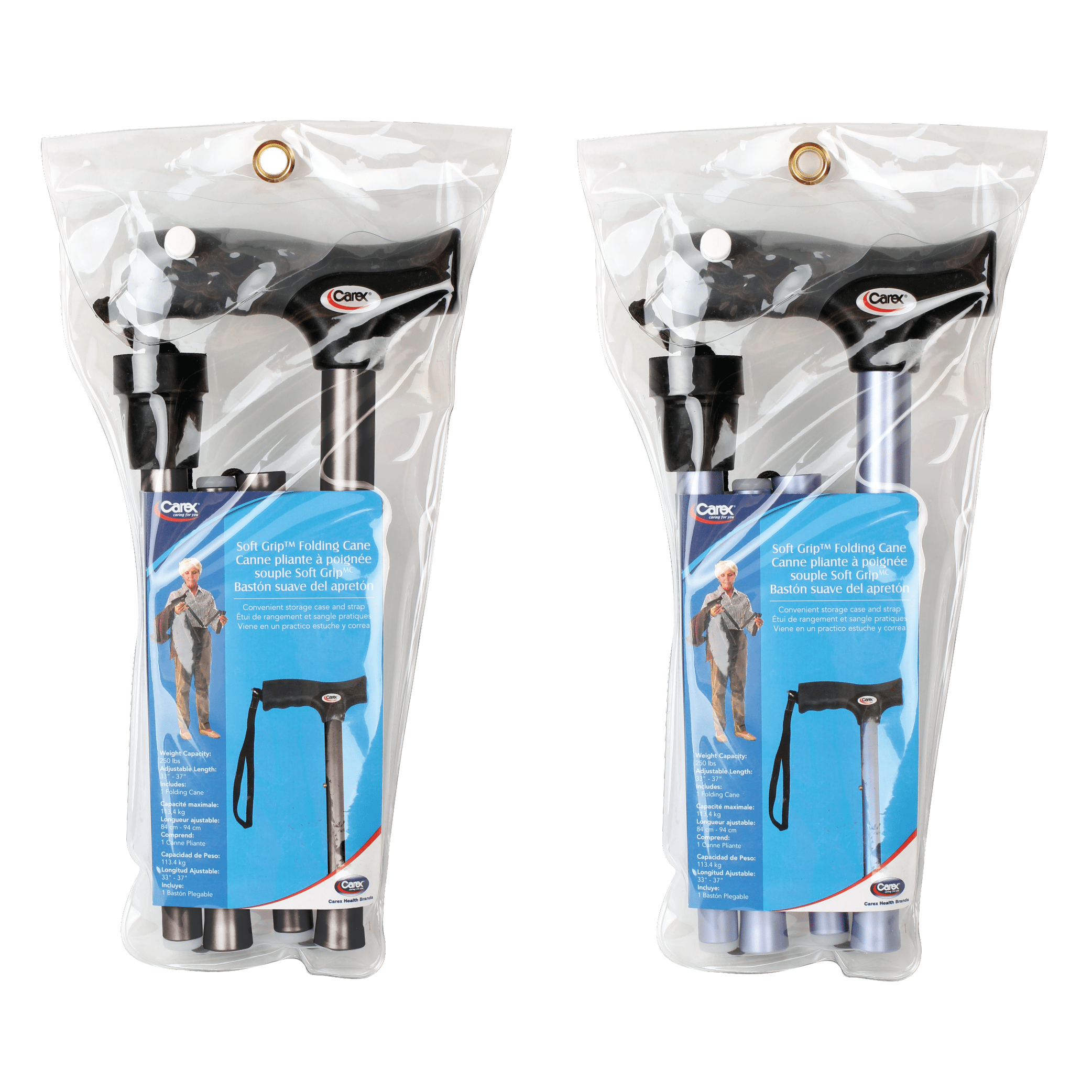
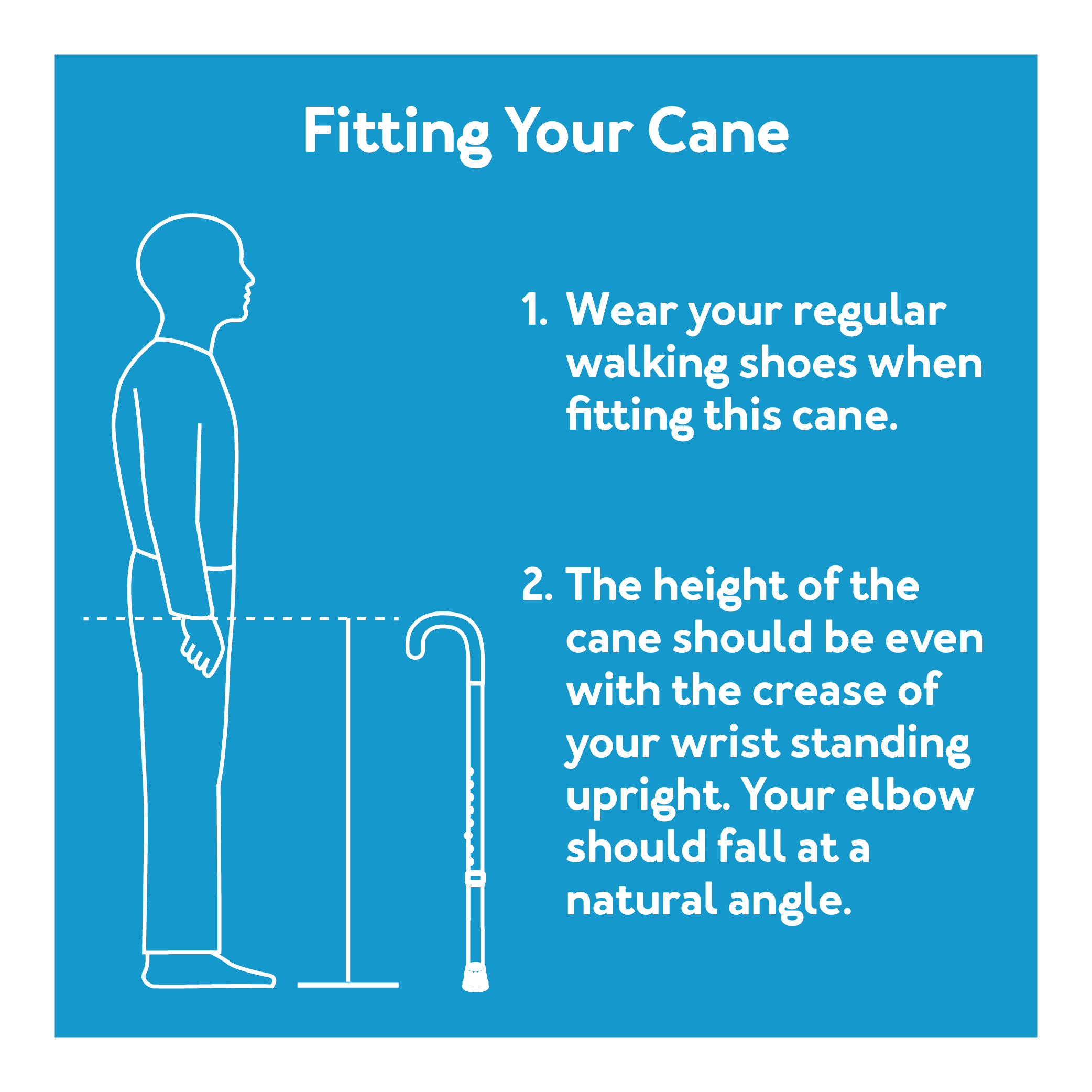
Carex Soft Grip Folding Cane with Derby Handle
Handle Types
When choosing a cane, you will also want to consider what type of handle you like the best and would be most comfortable for you. There are many types of cane handles, including round, derby, ergonomic, and more. Each type offers various benefits. The ideal handle type should be comfortable while providing the needed walking support.
Below, we go in-depth into each handle type while offering a few pros and cons.
Round
A round cane handle is the most classic style of handle, resembling that of a shepherd's crook. This simple design can easily be hooked on a chair or doorknob when not in use, and you may choose it due to its aesthetic appeal. However, these handles can be uncomfortable and hard to hold, so if you need additional comfort, this might not be the right handle for you.
| Pros | Cons |
|---|---|
| ✔️ The most classic style handle ✔️ Can be hung up easily ✔️ Can be used to grab items | ❌ Limited grip options - don't typically come in an ergonomic style ❌ Some tend to be heavier than other cane types ❌ Can be uncomfortable and hard to hold ❌ May not offer as much stability |
Derby
The thicker, curved derby handle is another classic style and one of the first handle designs created. It is easy to grip and more comfortable than the classic round handle, making it ideal for those with arthritis.
| Pros | Cons |
|---|---|
| ✔️ One of the most common and widely available handle types ✔️ Comfortable to hold with ergonomic fit, ideal for those with arthritis ✔️ A classic look that many find appealing | ❌ May not be comfortable for those with larger hands |
Offset
Through a bend in the cane shaft, offset cane handles are positioned over the length of the shaft. Their design evenly distributes your weight along with it and to the rubber tip. These padded handles reduce strain on your wrist and provide a comfortable grip.
| Pros | Cons |
|---|---|
| ✔️ Evenly distributes weight for better balance ✔️ Available in a variety of colors and ergonomic styles | ❌ Larger in width at the top, may be harder to store |
Ergonomic
Ergonomic handles are designed to be easy to hold and reduce shock and hand fatigue. Their design makes them a great choice if you have arthritis or carpal tunnel syndrome. Depending on the cane, a derby or offset cane may have an ergonomic handle.
| Pros | Cons |
|---|---|
| ✔️ Comfortable to hold ✔️ Reduces shock and fatigue, great for arthritis or carpal tunnel ✔️ Available in a variety of handle types, including derby and offset ✔️ | ❌ May be more expensive than non-ergonomic handle types |
Knob
Knob handles are a sophisticated and stylish option. They fit comfortably in the palm of your hand and make your cane an elegant accessory in a way other handle options cannot. However, if you need something that is more weight-bearing like a quad-tip cane, this type of handle will not provide you with the support you need.
| Pros | Cons |
|---|---|
| ✔️ More stylish and sophisticated than traditional styles ✔️ Fit comfortably in the palm of your hand | ❌ Do not provide as much support ❌ May be hard to hold ❌ Can be dropped more easily |
Decorative
Decorative handles come in many different shapes, like the shape of an animal, and can be great to have for a stylish look at a party or function. However, they can be awkward and uncomfortable to hold and aren't meant to be used regularly.
| Pros | Cons |
|---|---|
| ✔️ More stylish and sophisticated than traditional styles ✔️ Available in a variety of options | ❌ Can be awkward and uncomfortable to hold ❌ Aren't meant to be used regularly |
Secondary
Canes with secondary handles can be useful for those who may have trouble sitting or standing. The secondary handle flips out for added support when transitioning to and from a seated position.
| Pros | Cons |
|---|---|
| ✔️ Available in a variety of handle types ✔️ Add support for sitting or standing | ❌ Extra handle adds weight and makes it more bulky |
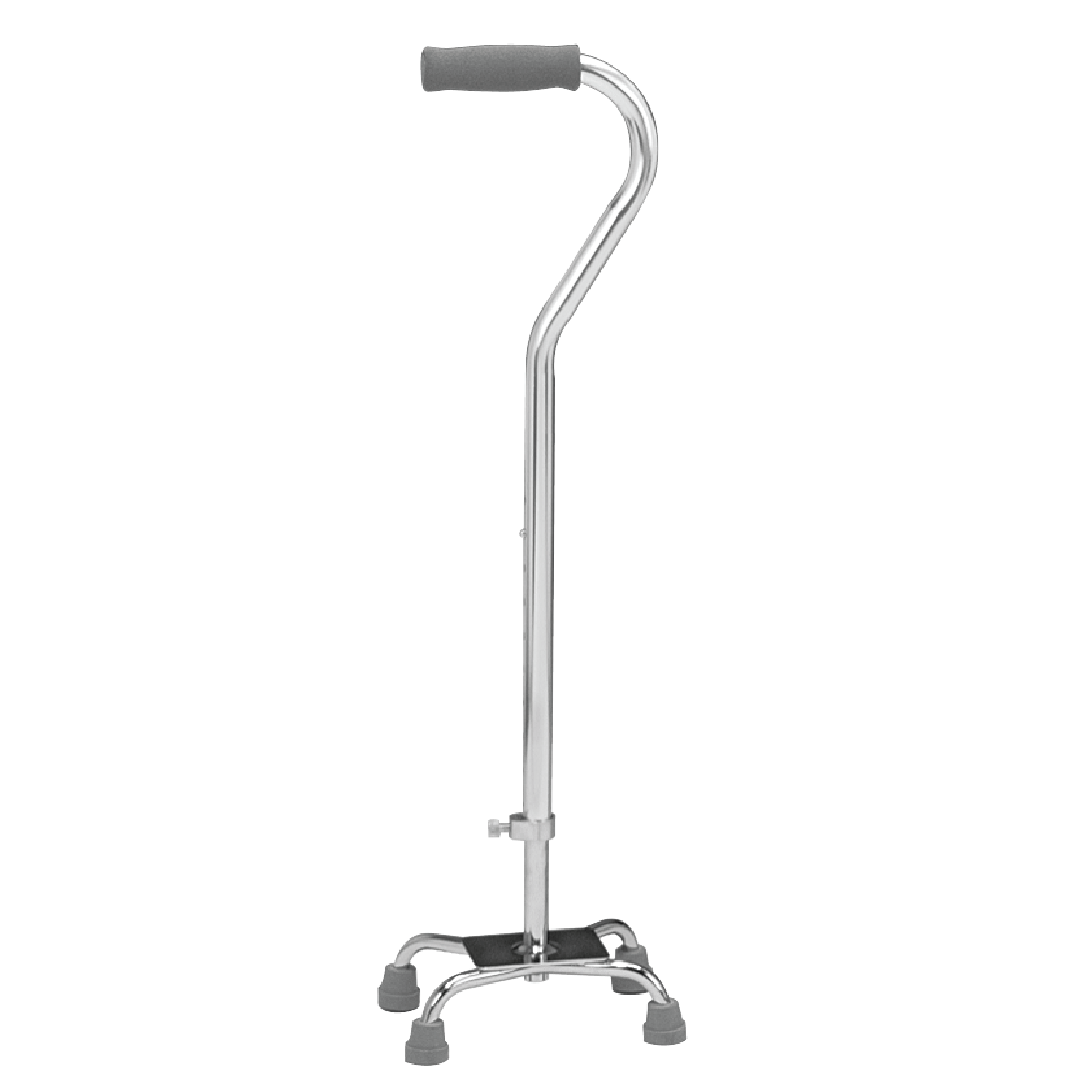

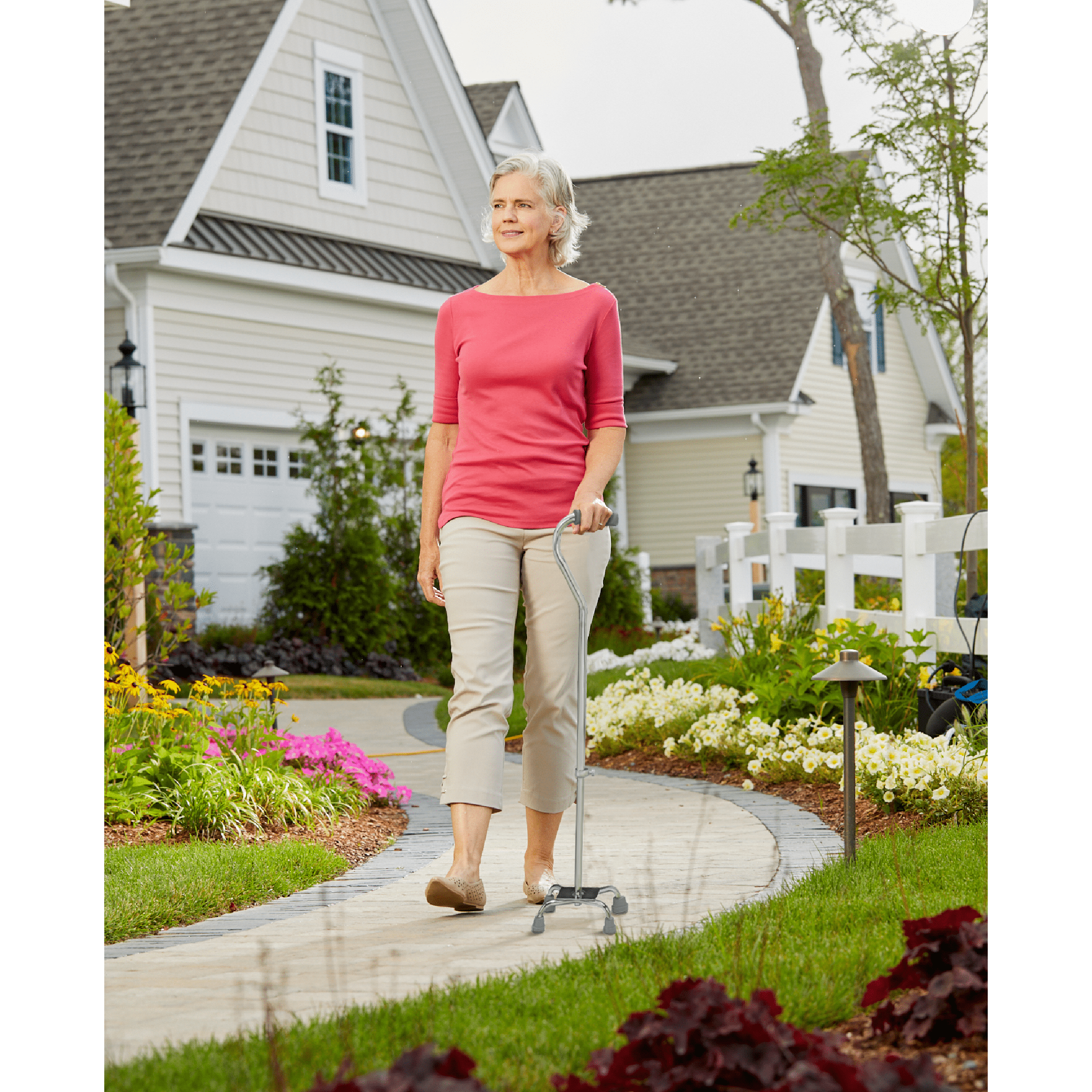
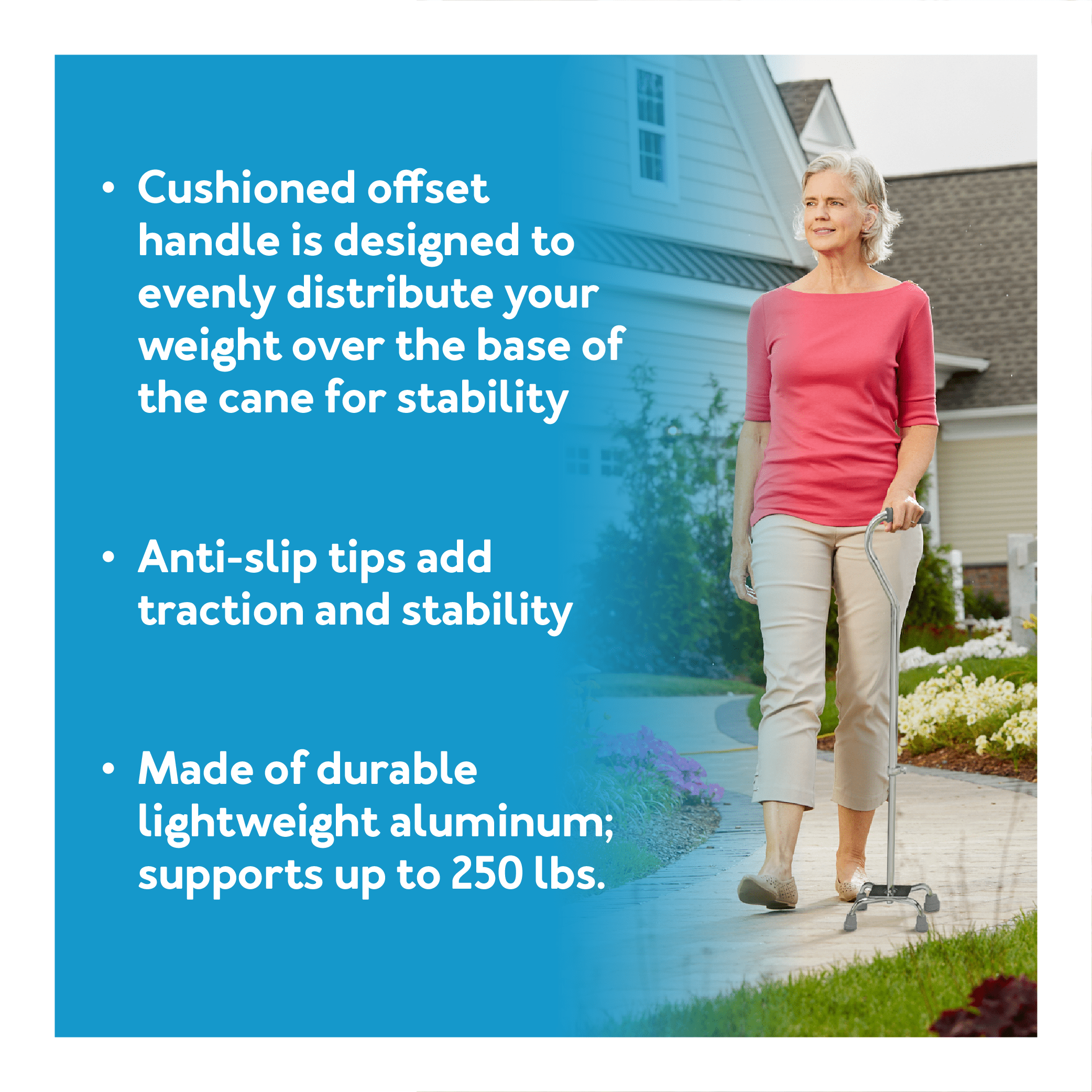
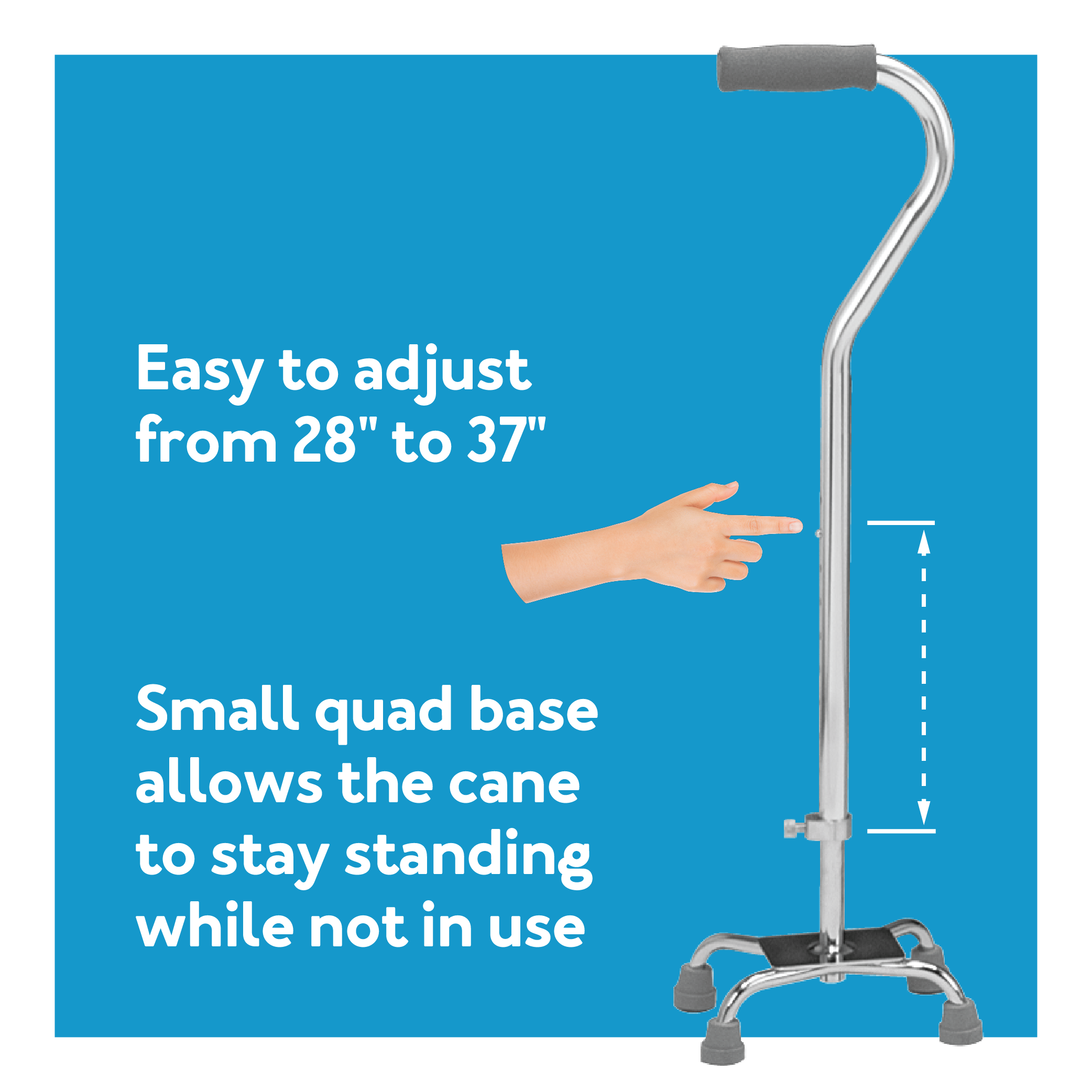
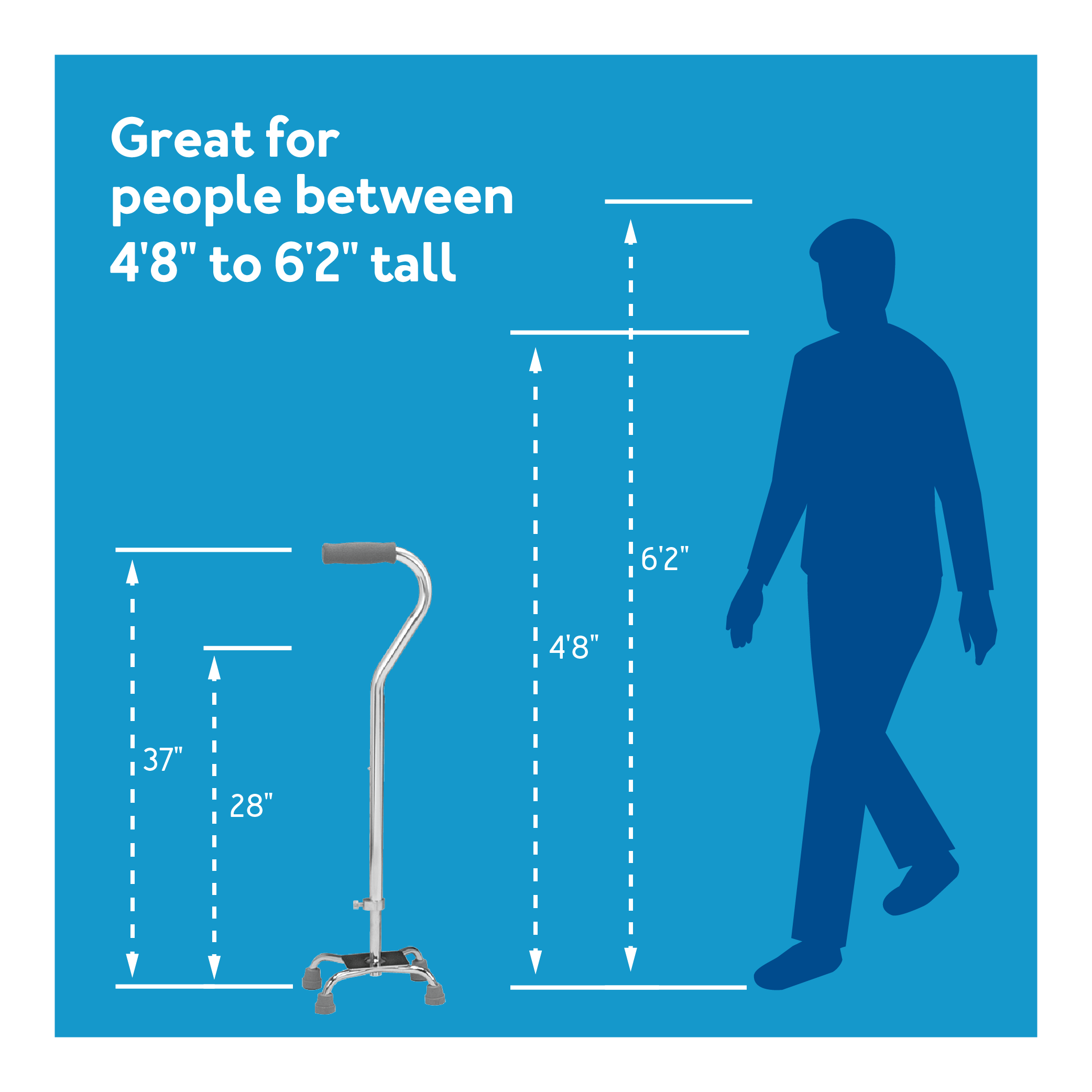
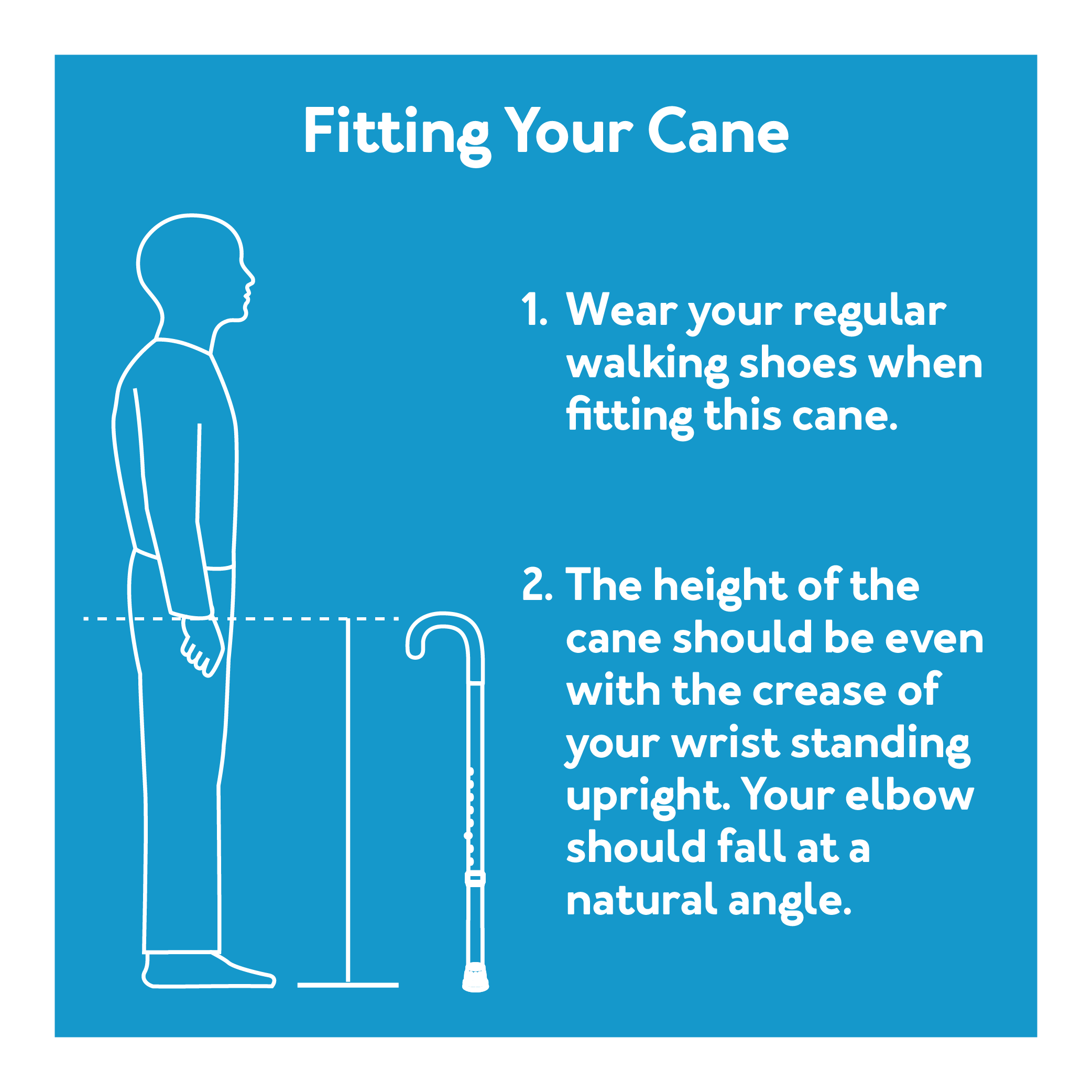
Carex Small Base Offset Quad Cane - Silver
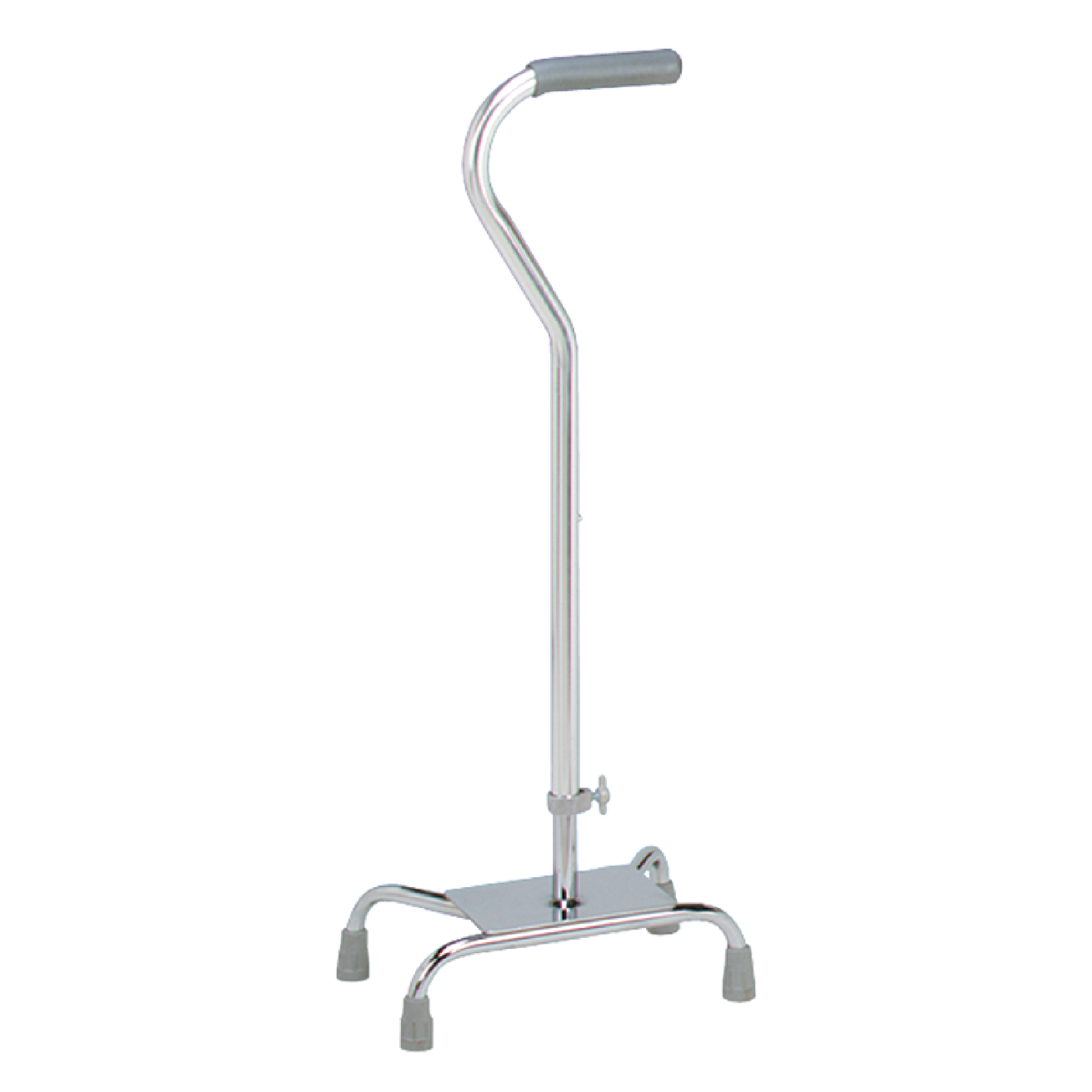

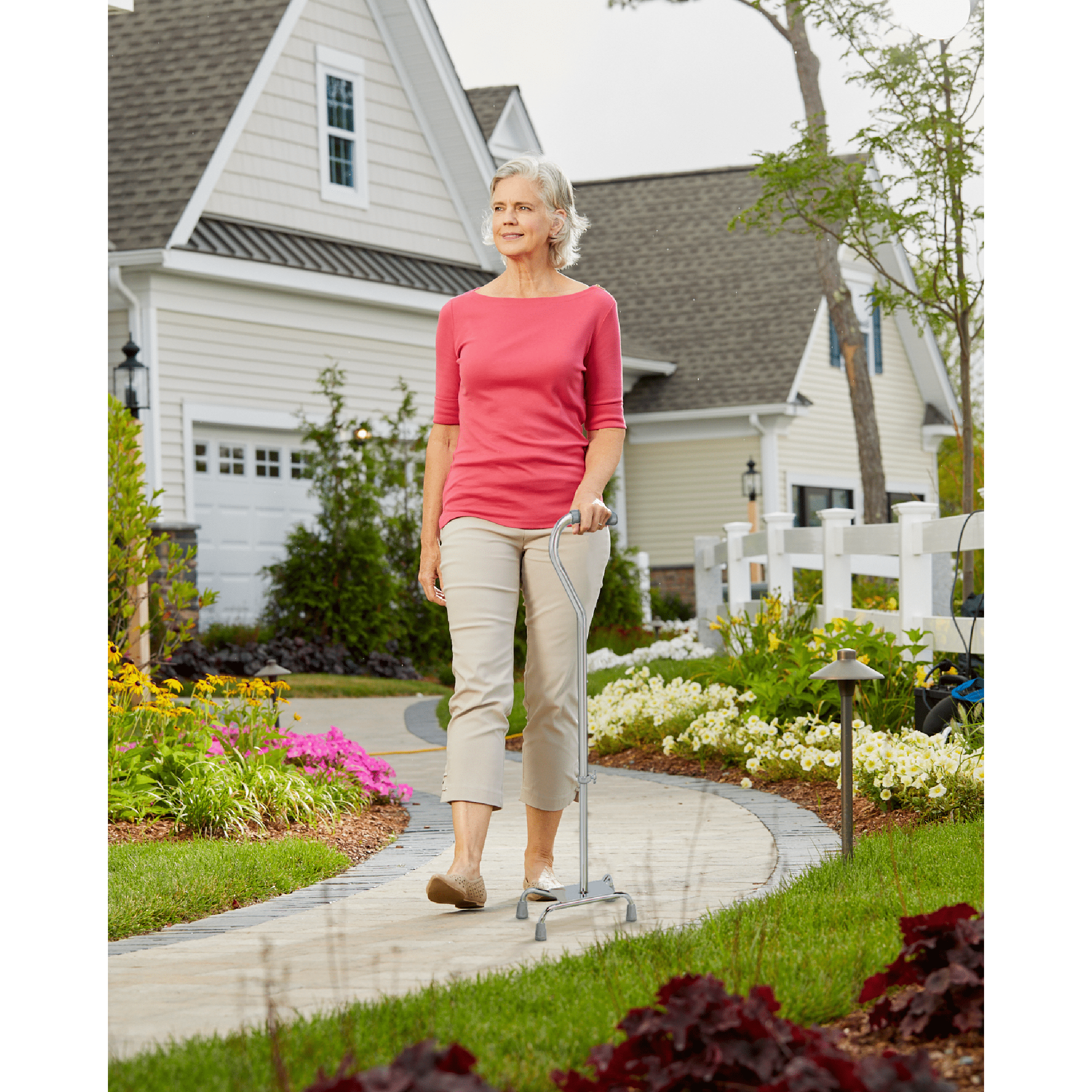
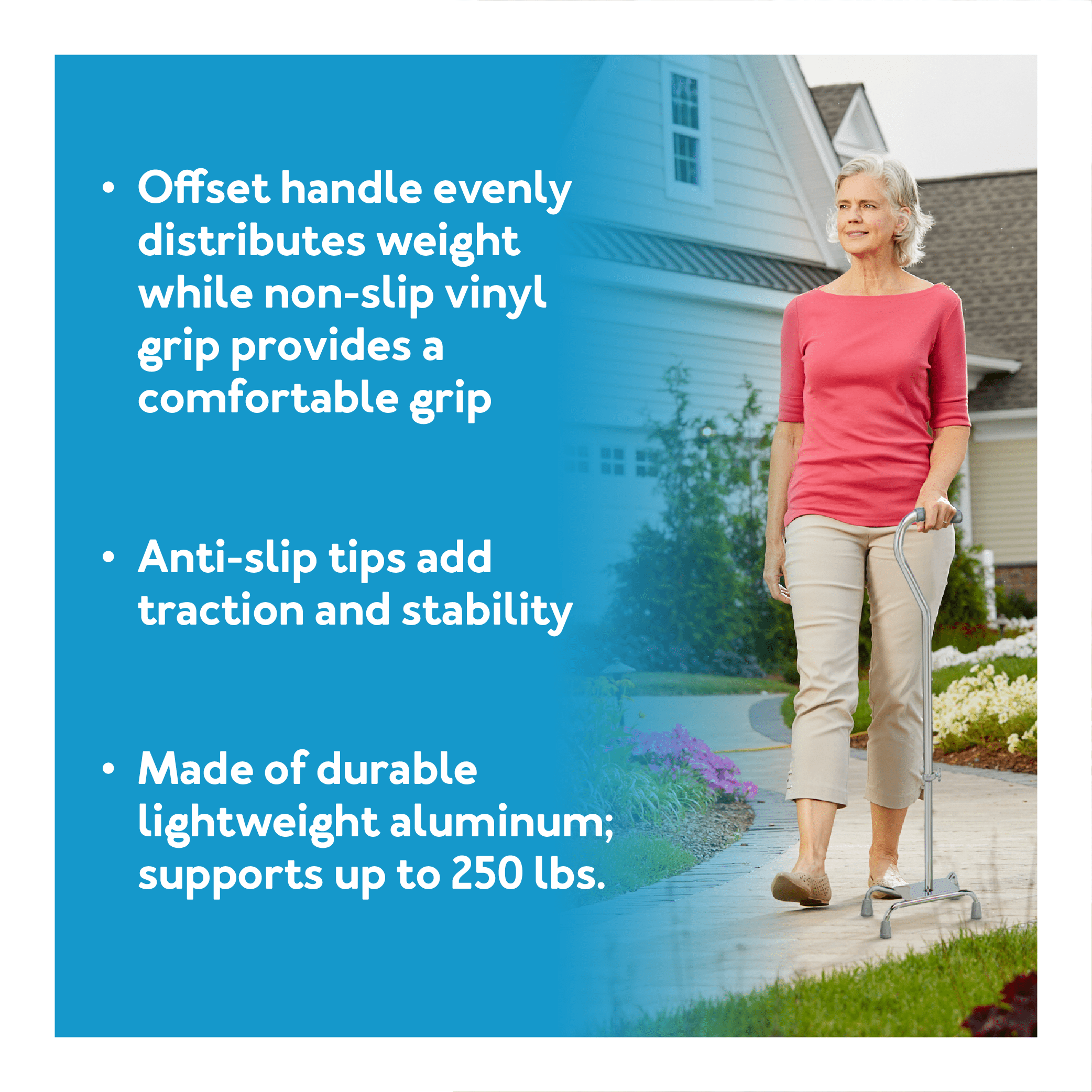
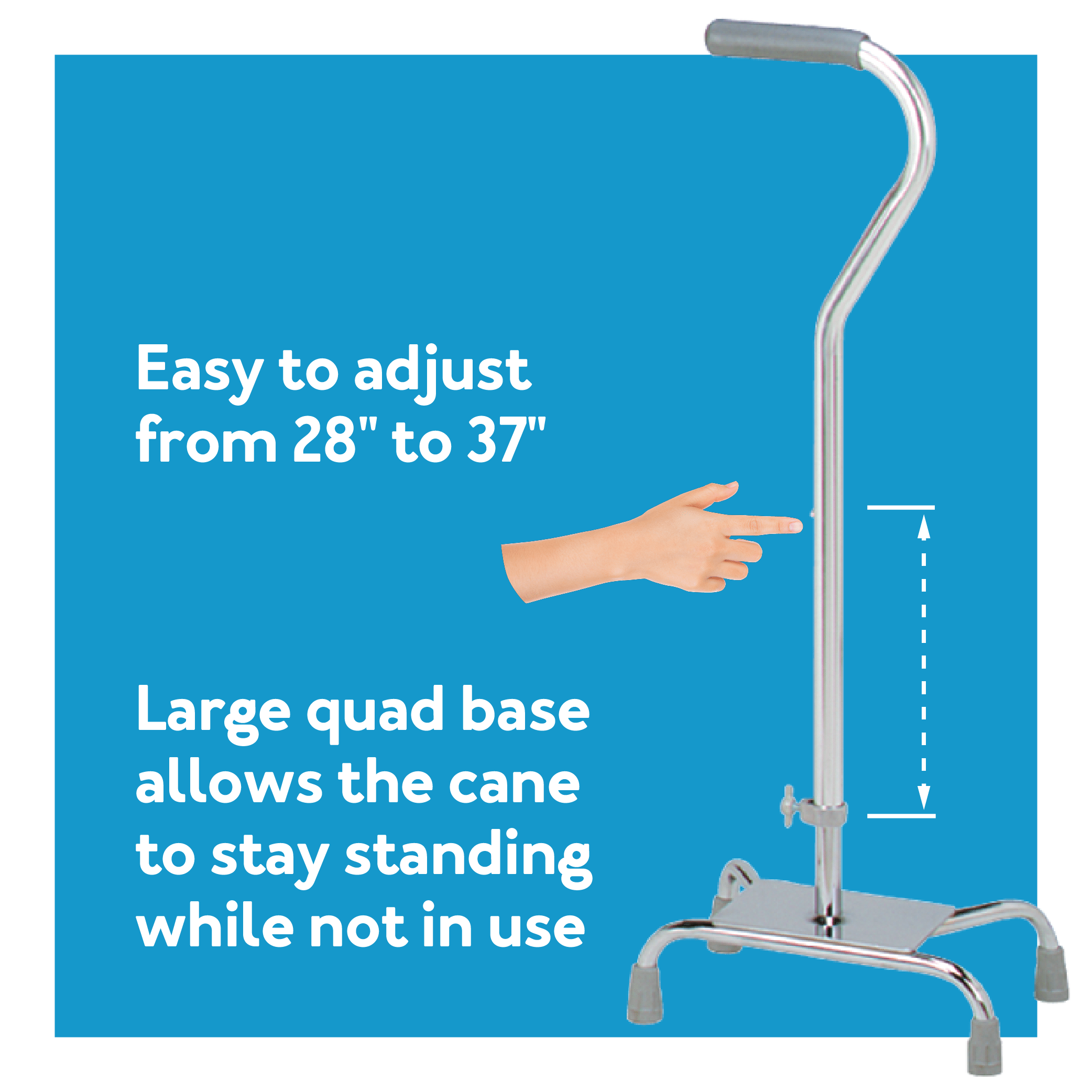
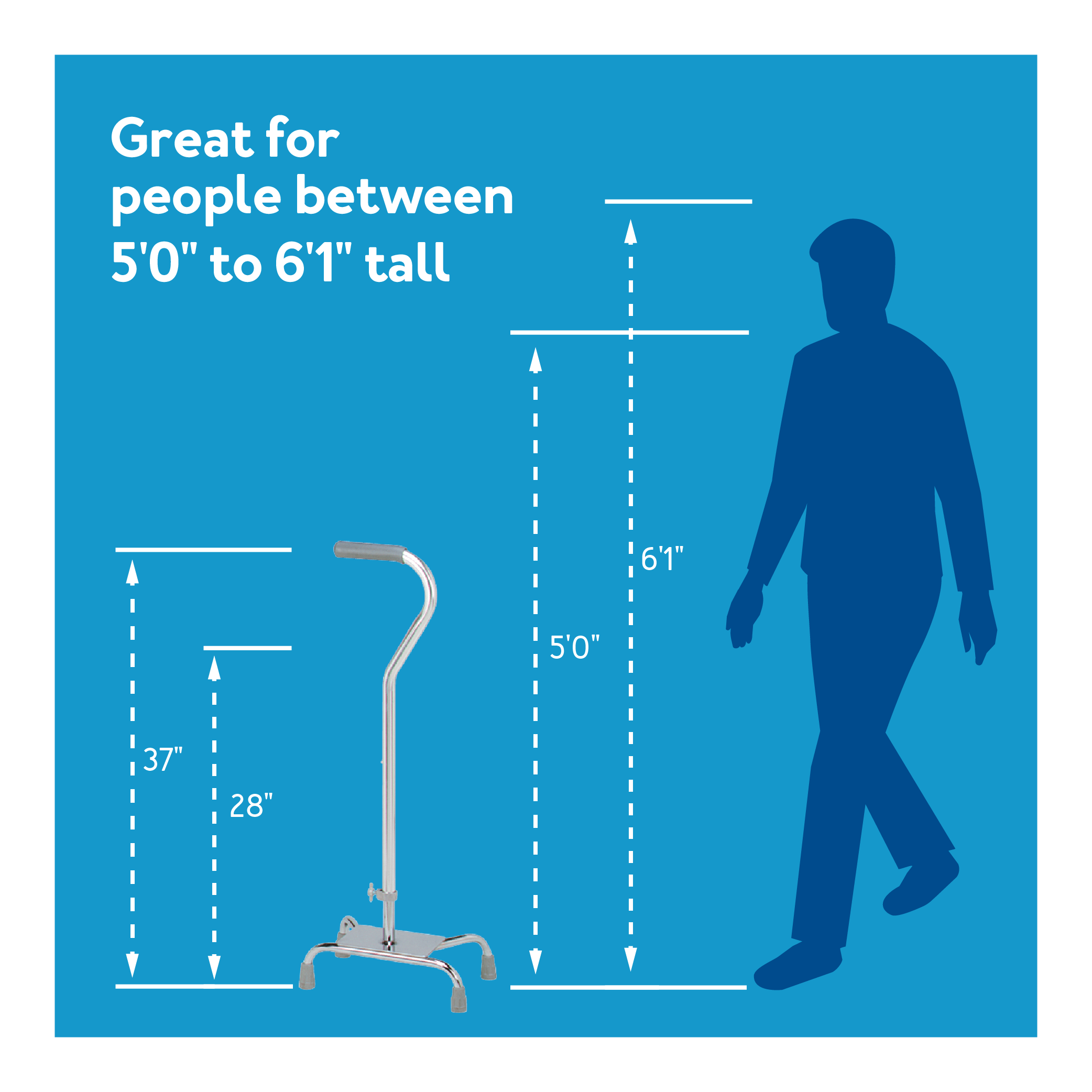
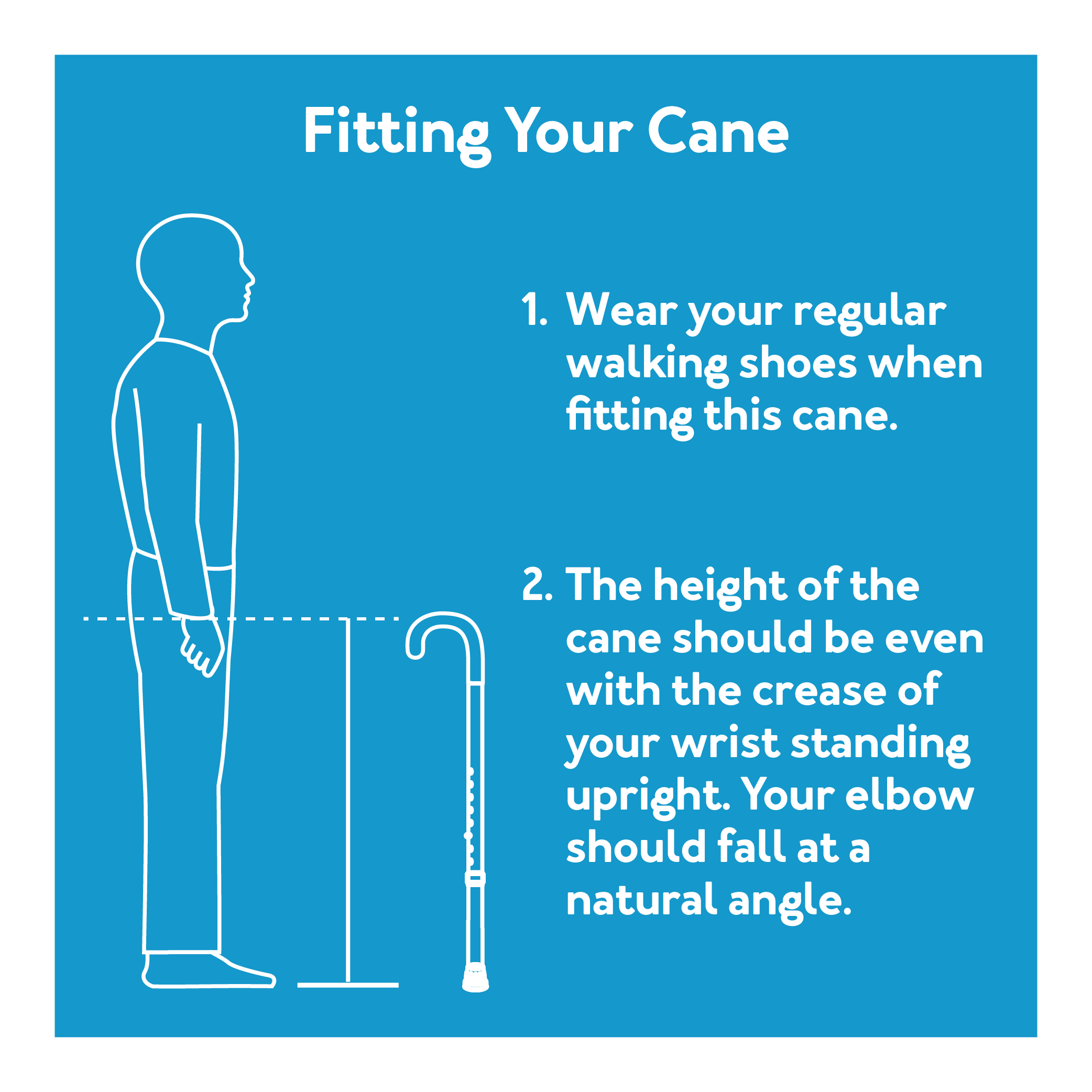

Carex Offset Quad Cane with Large Base
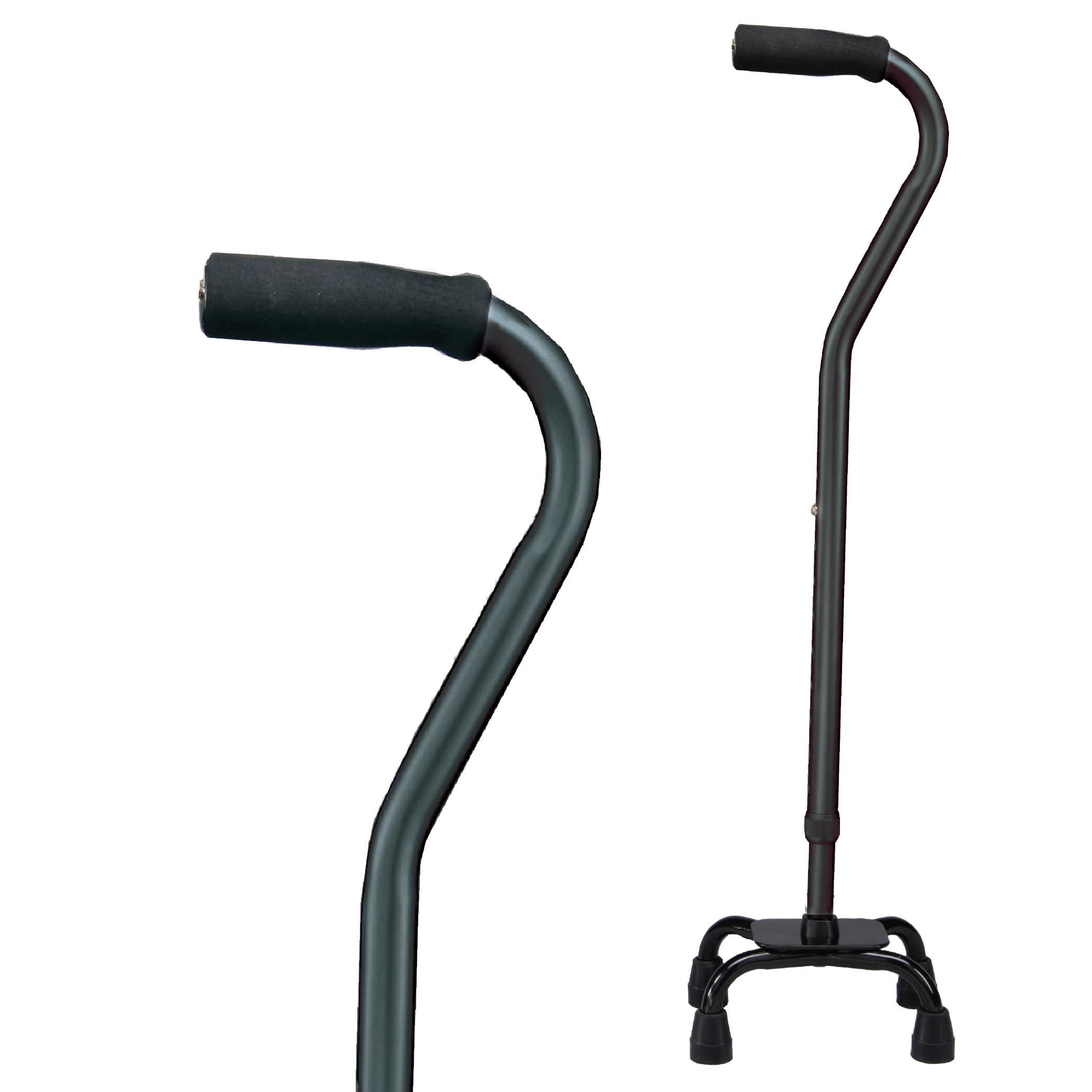

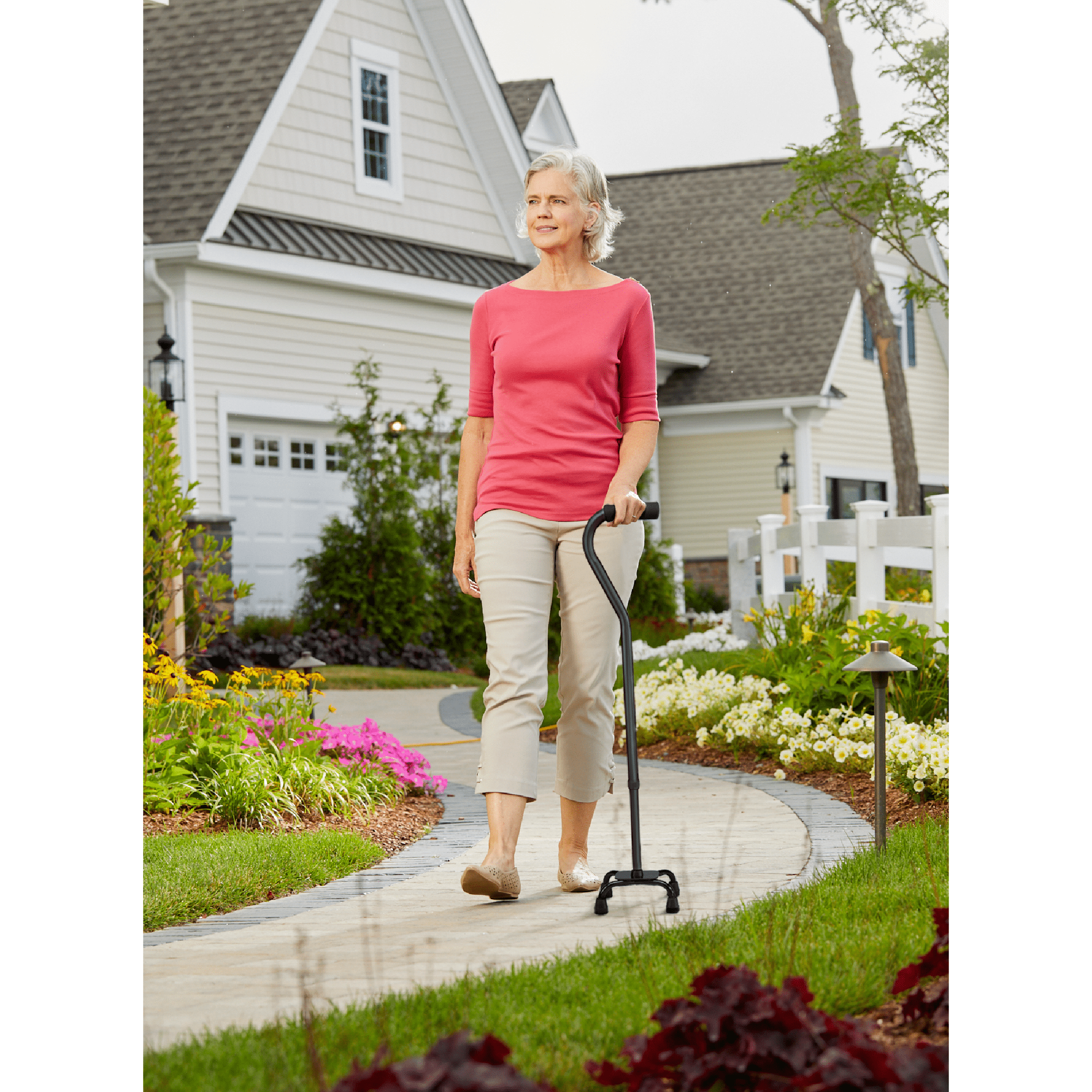
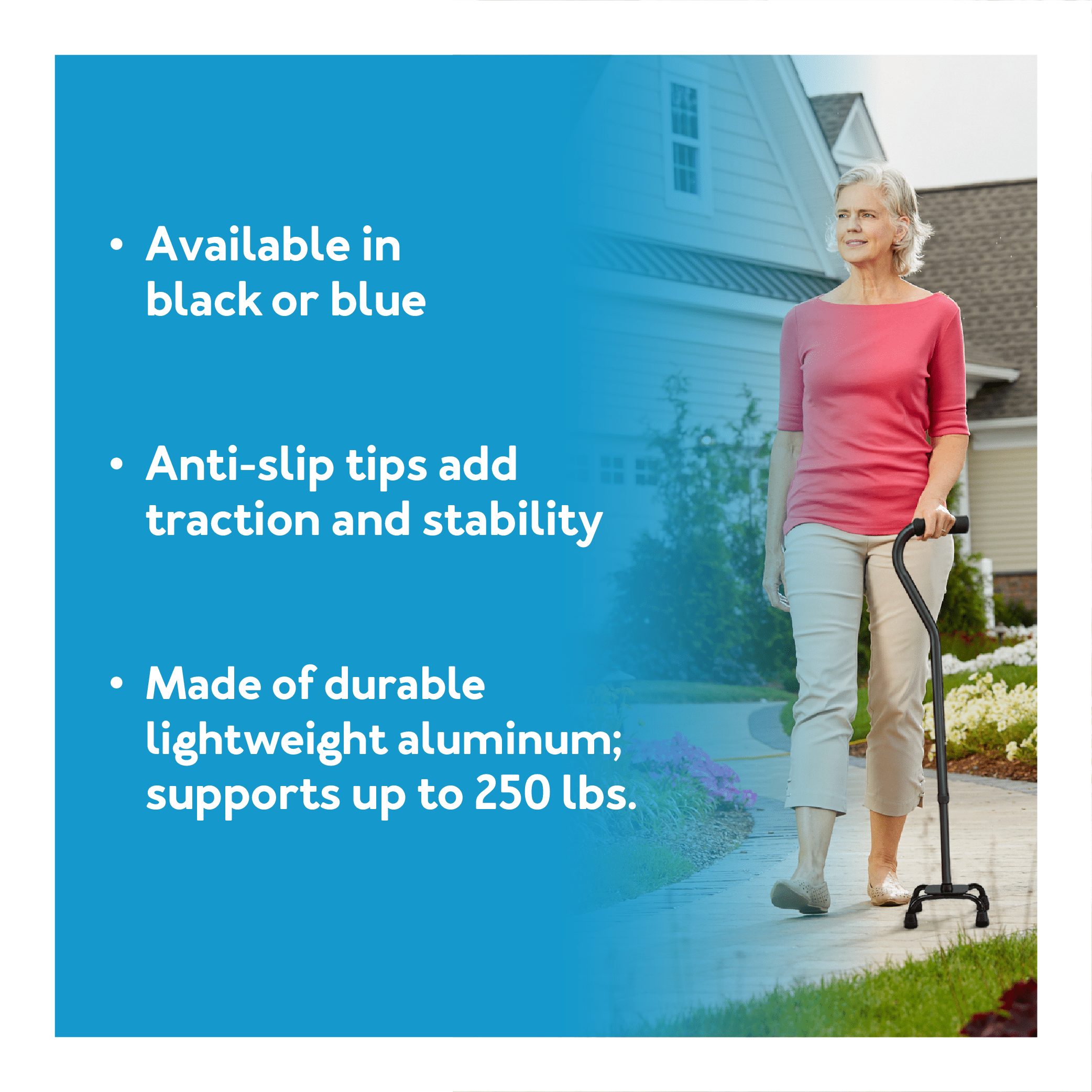
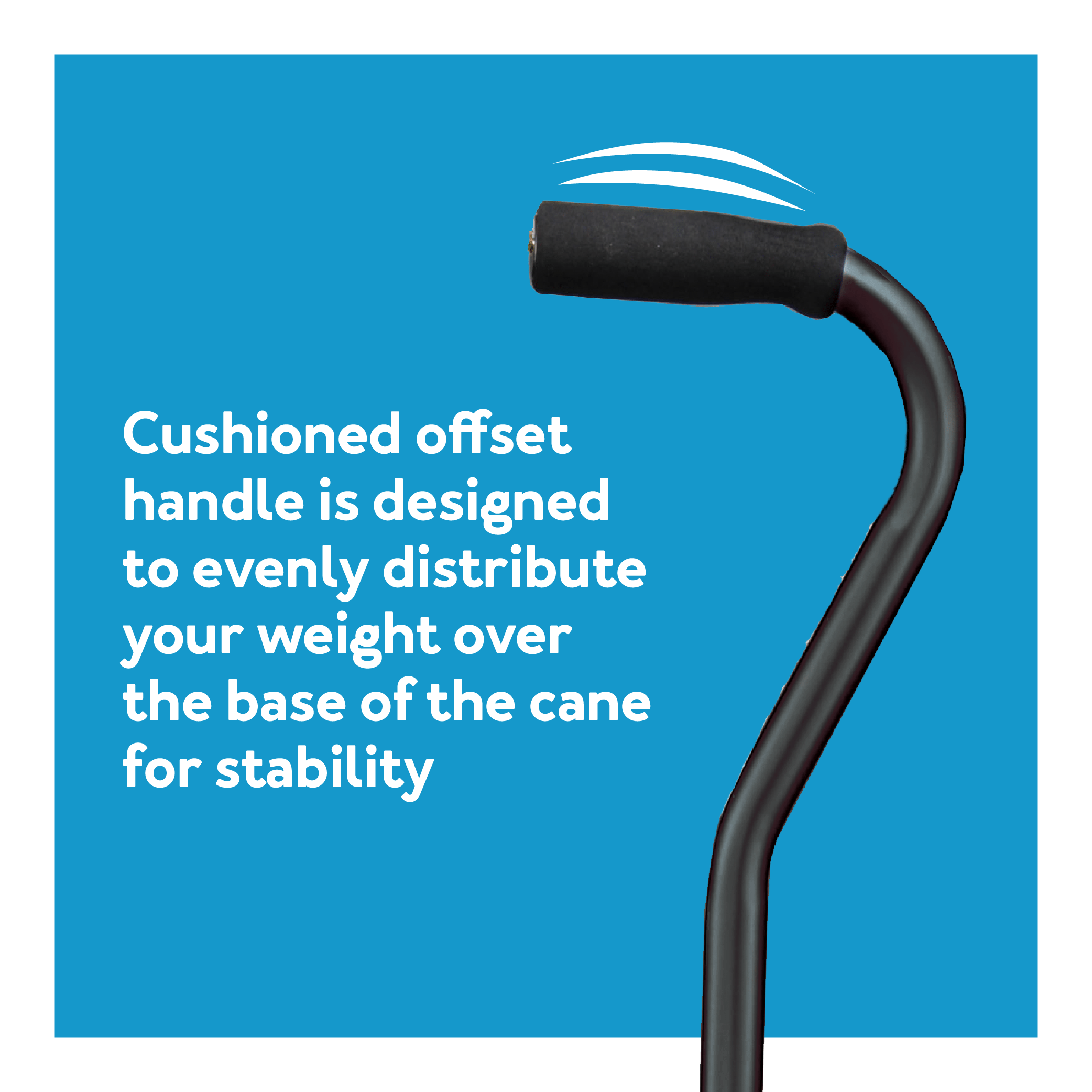
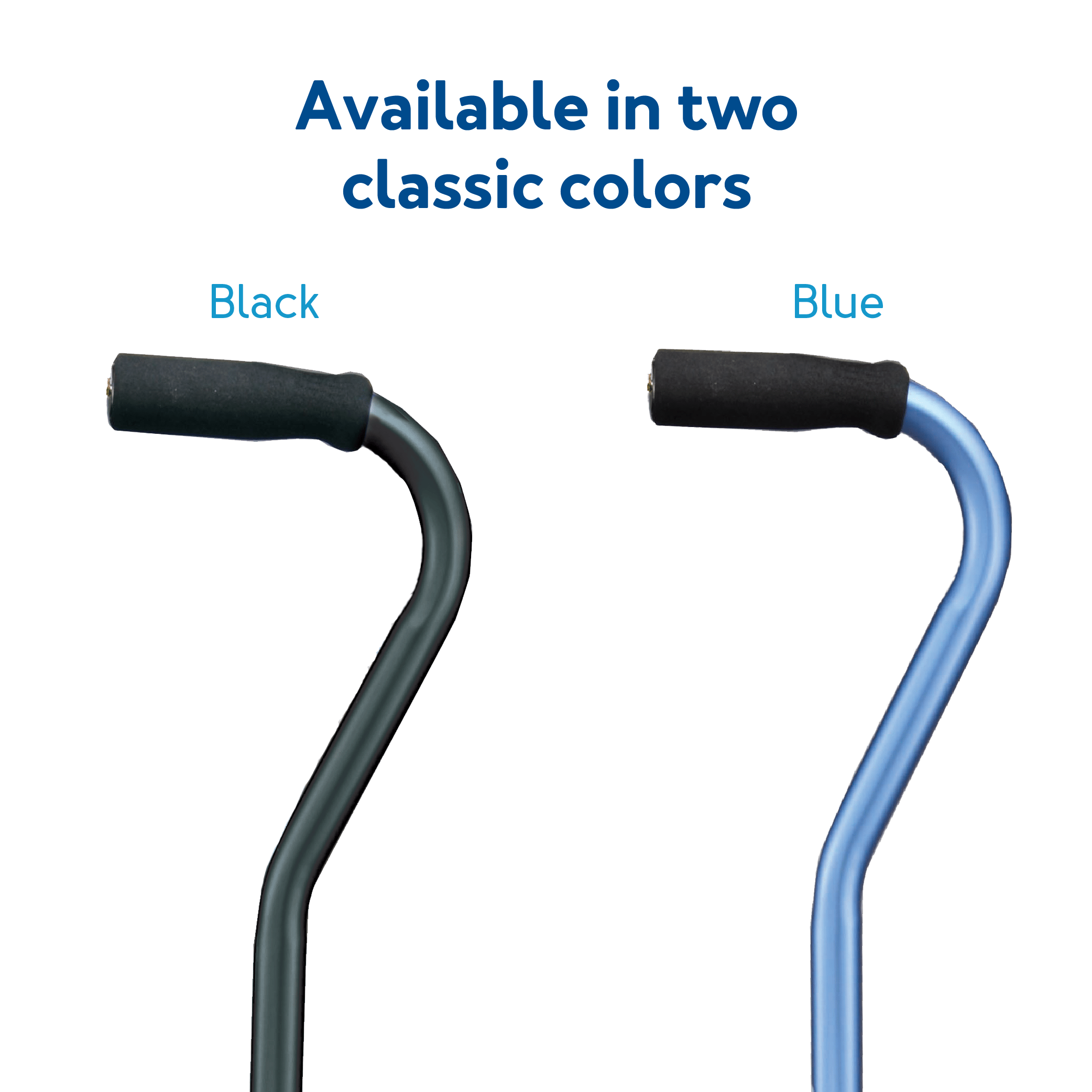
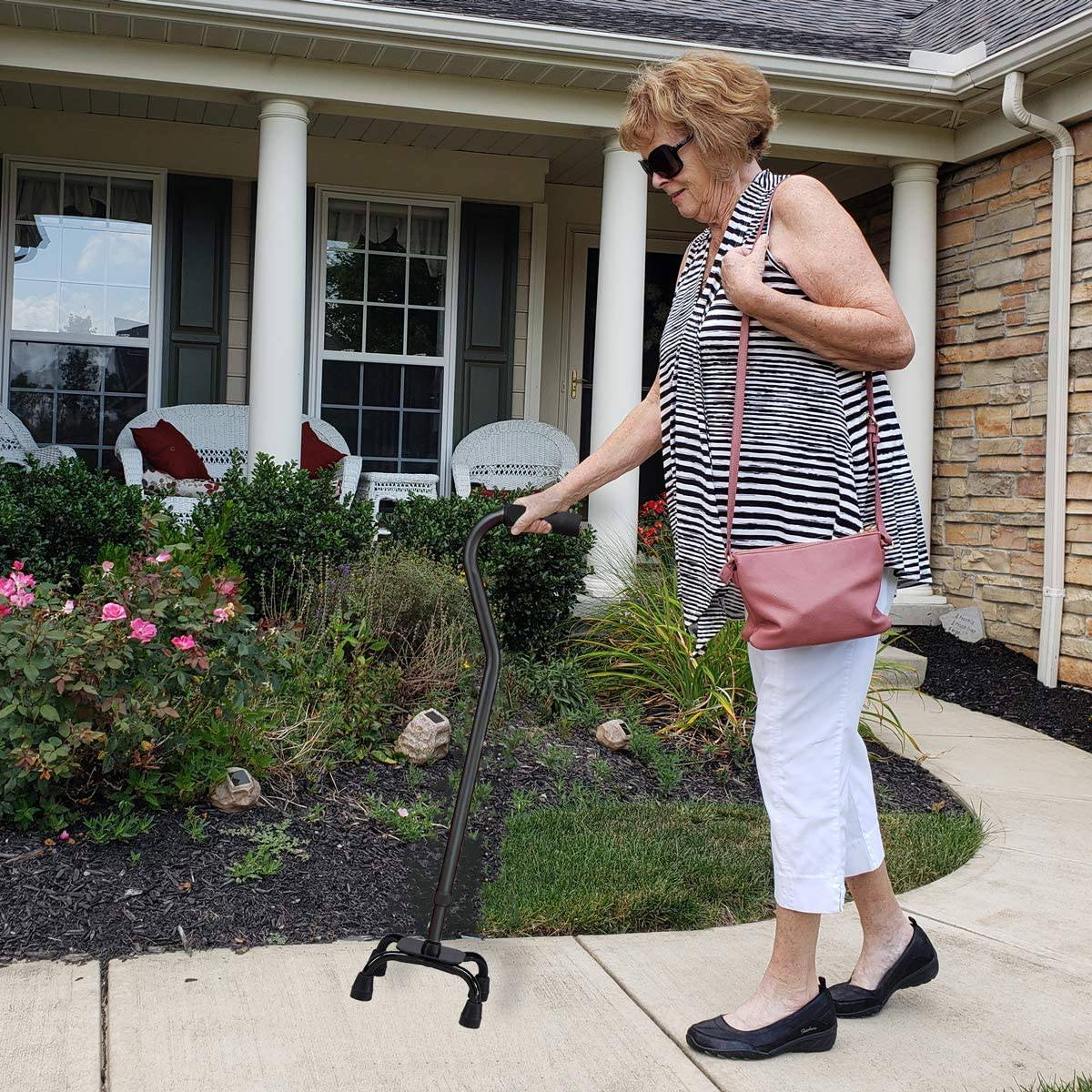
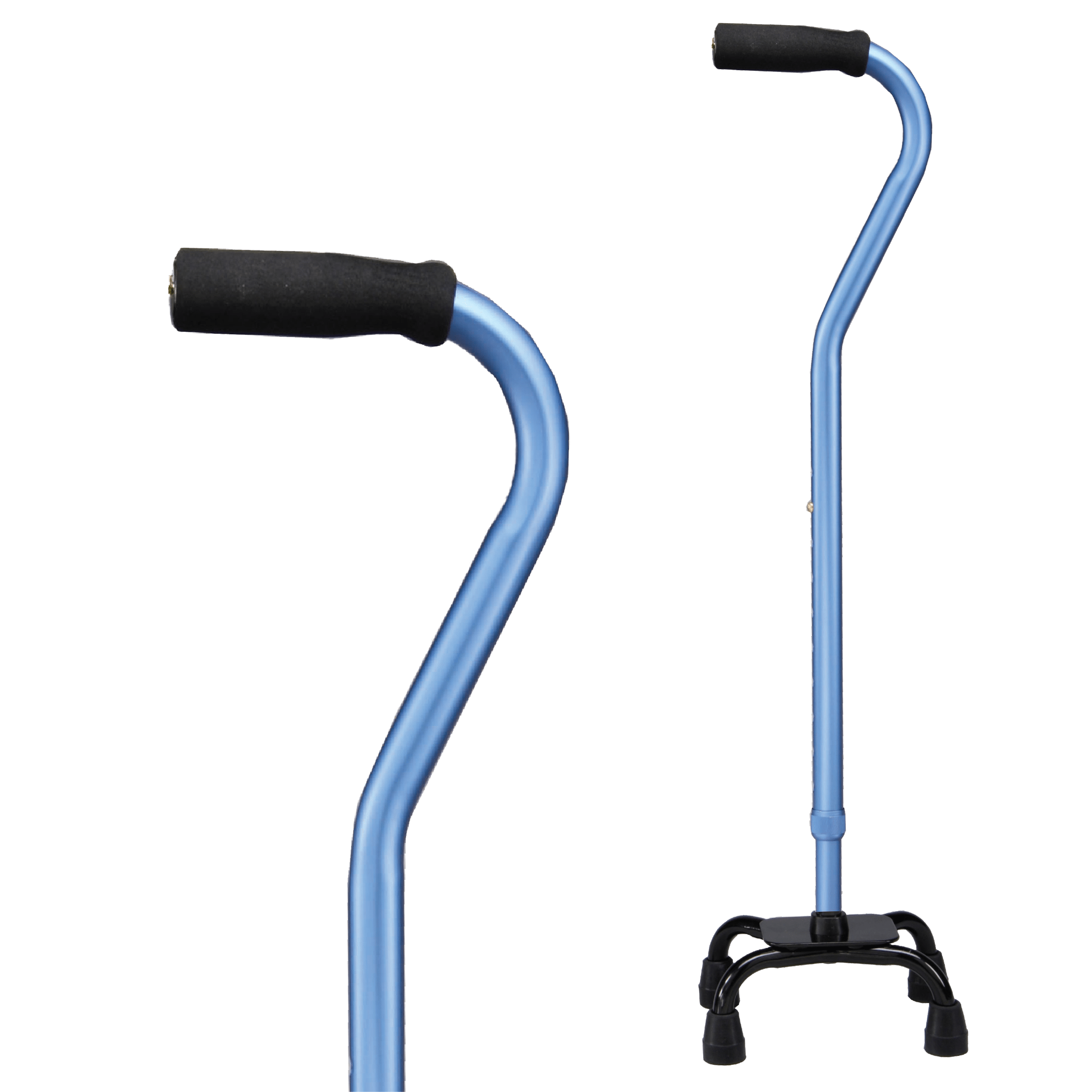
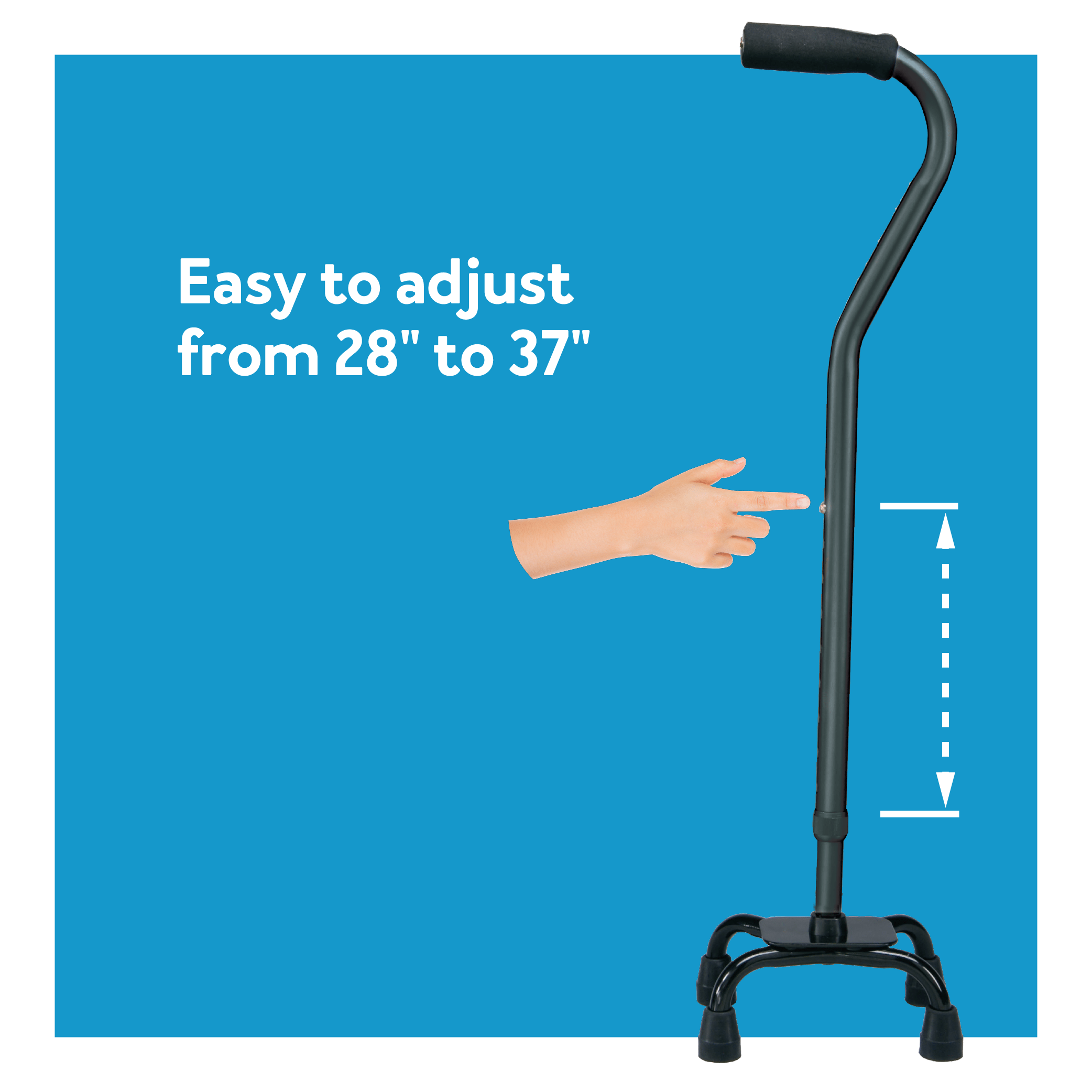
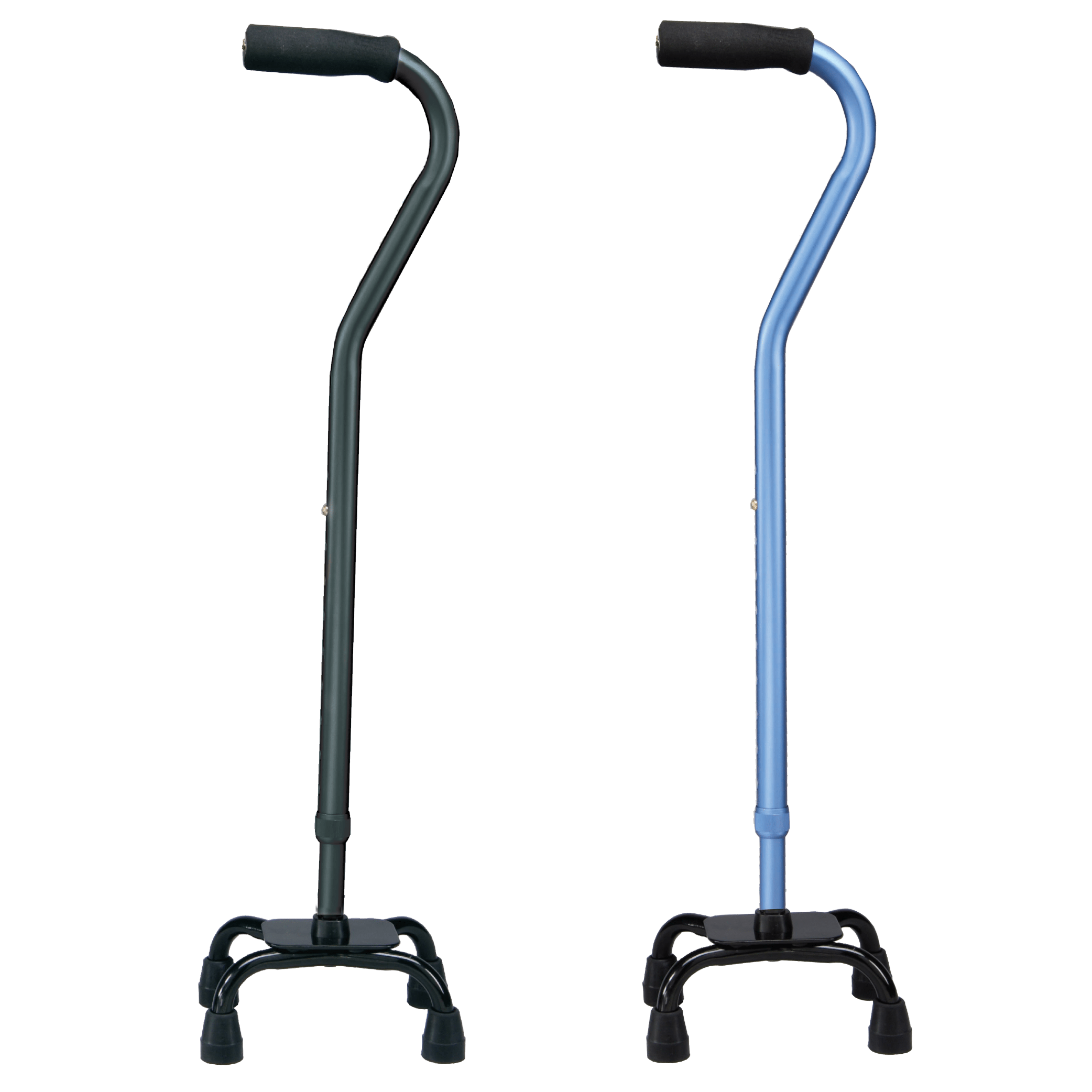
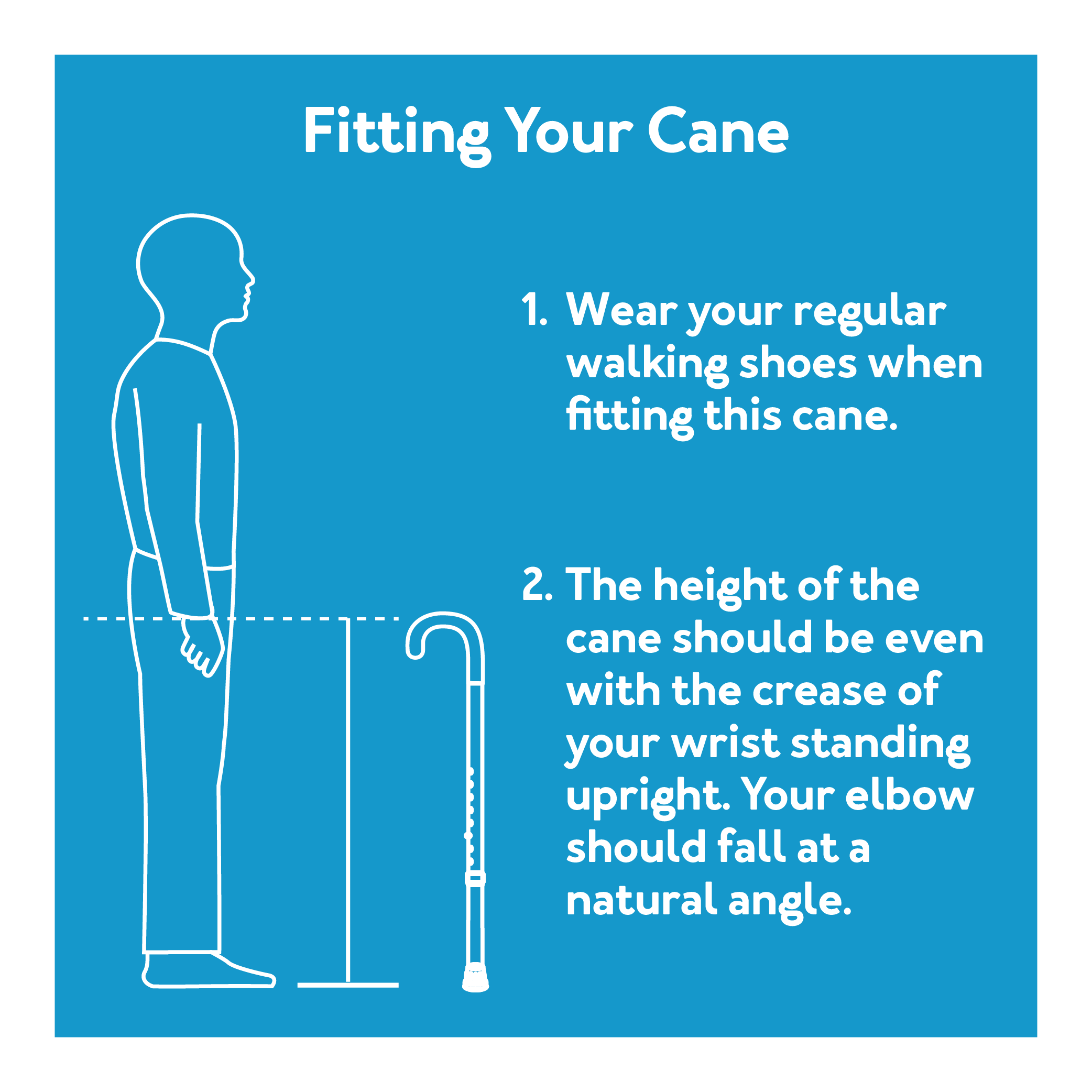
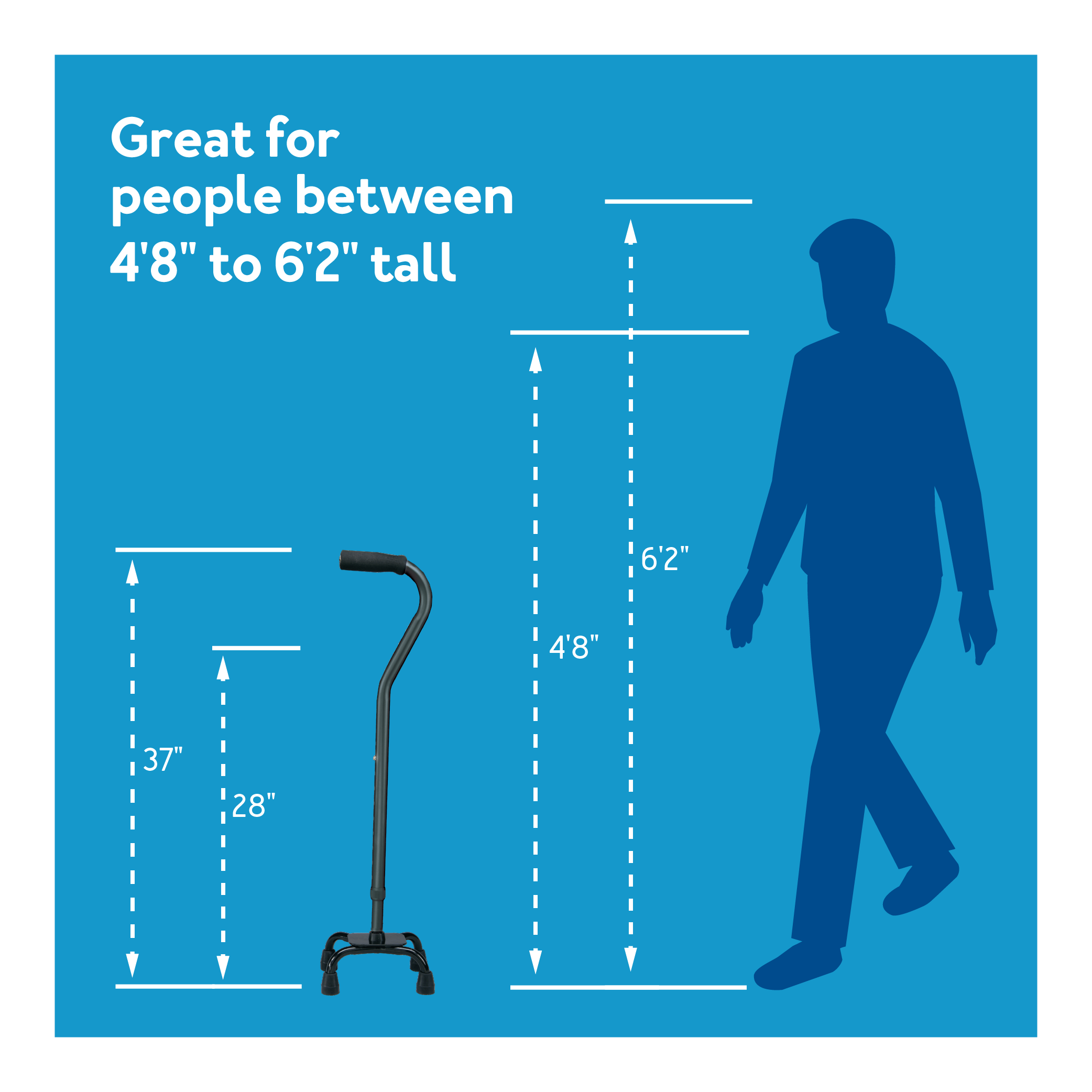
Carex Small Base Designer Quad Cane
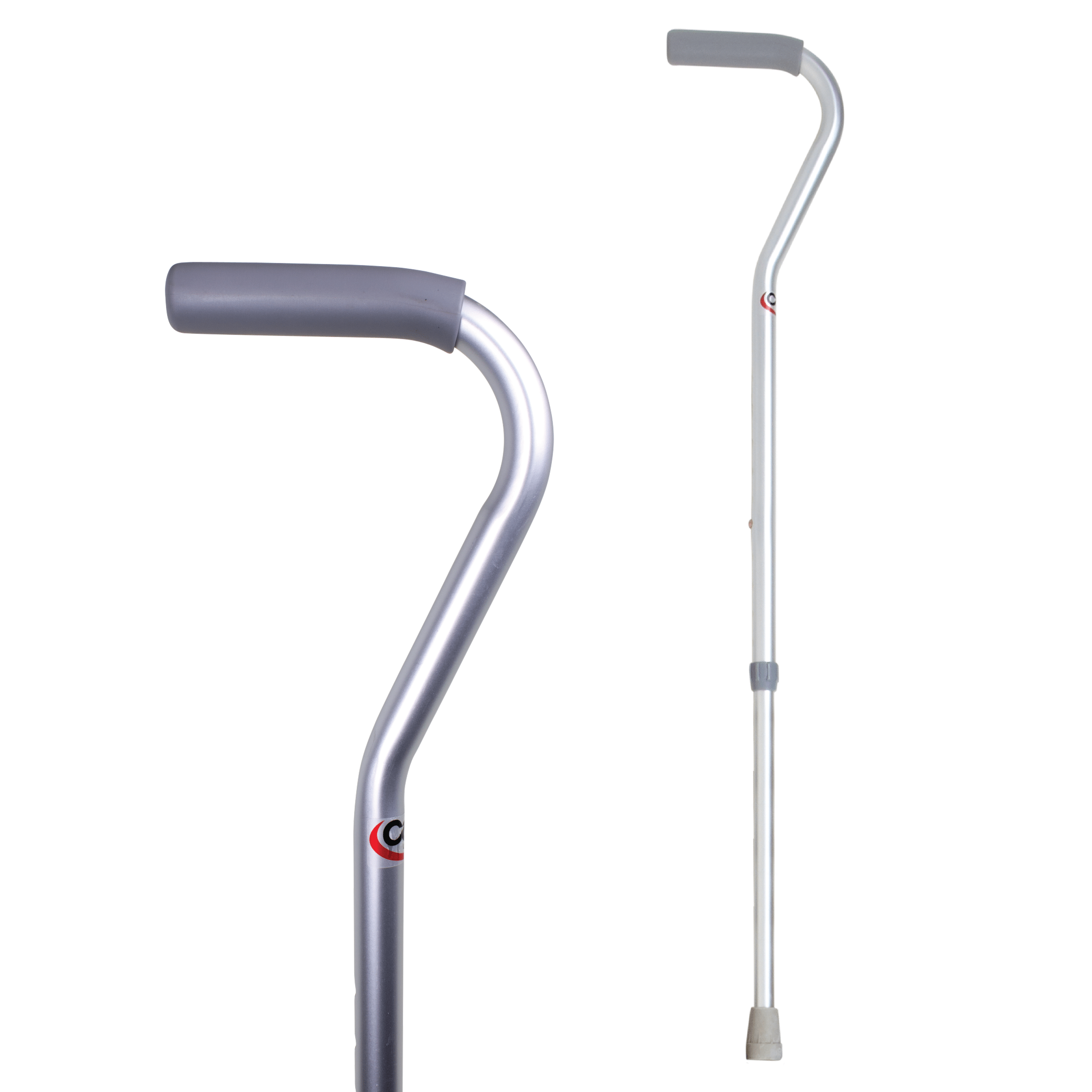

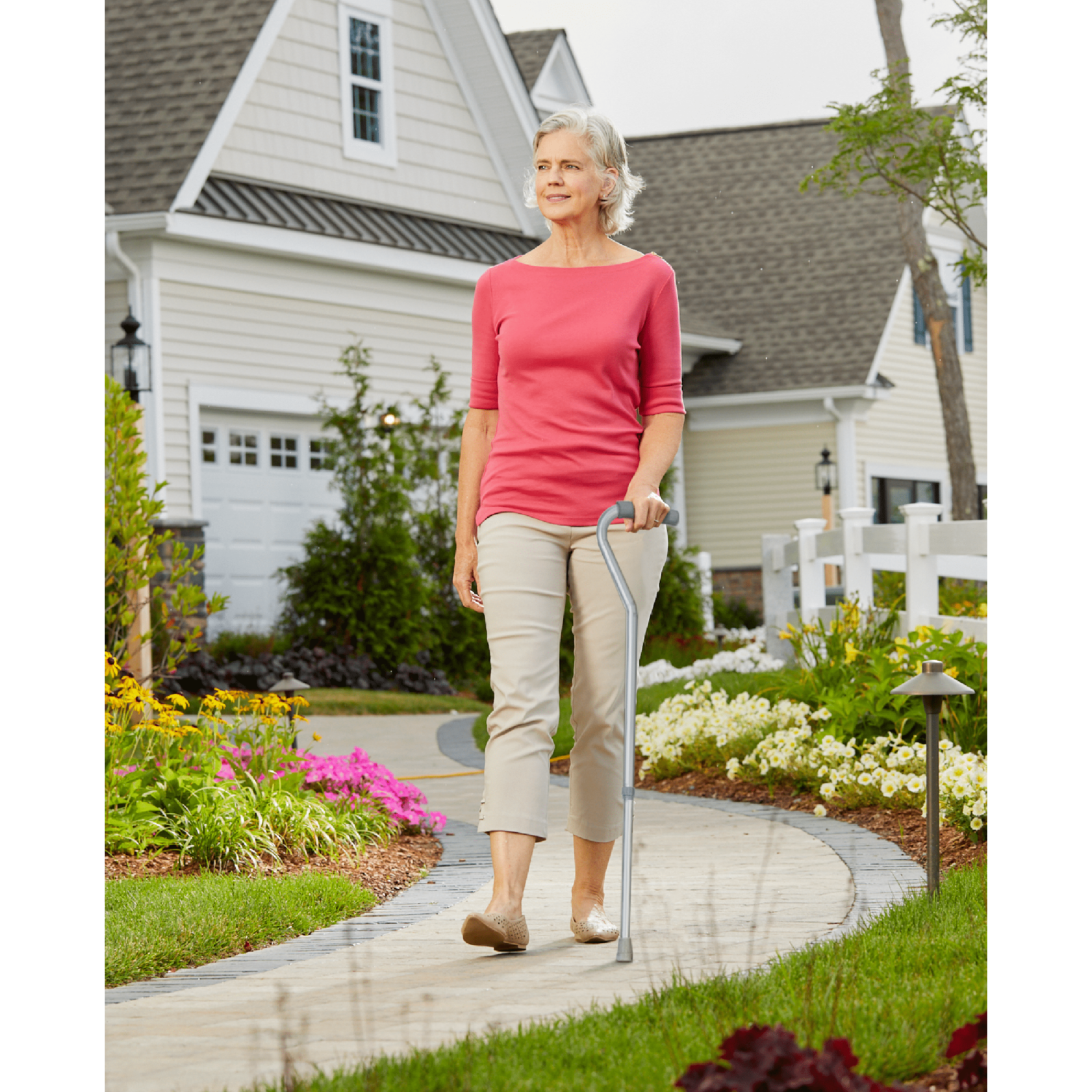
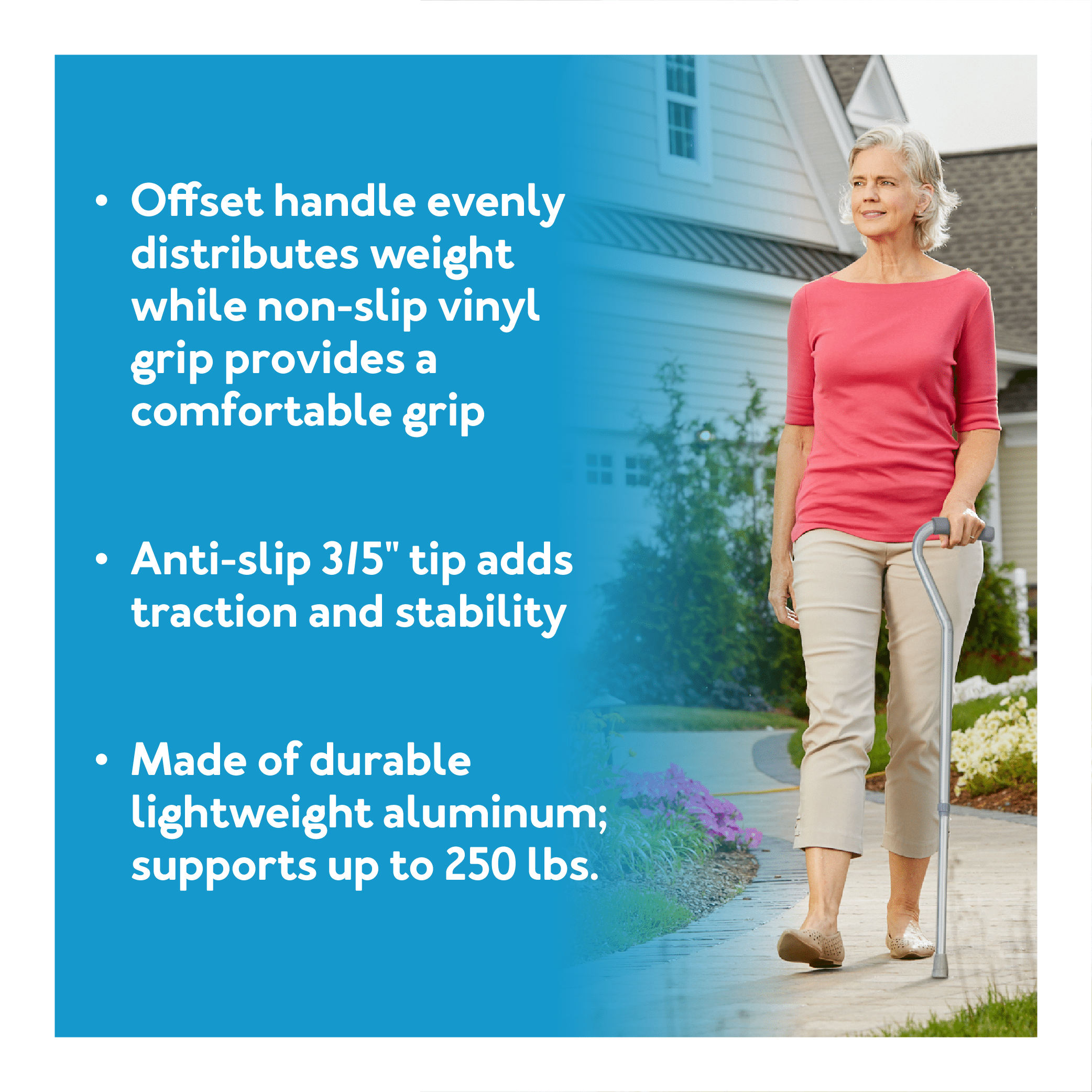
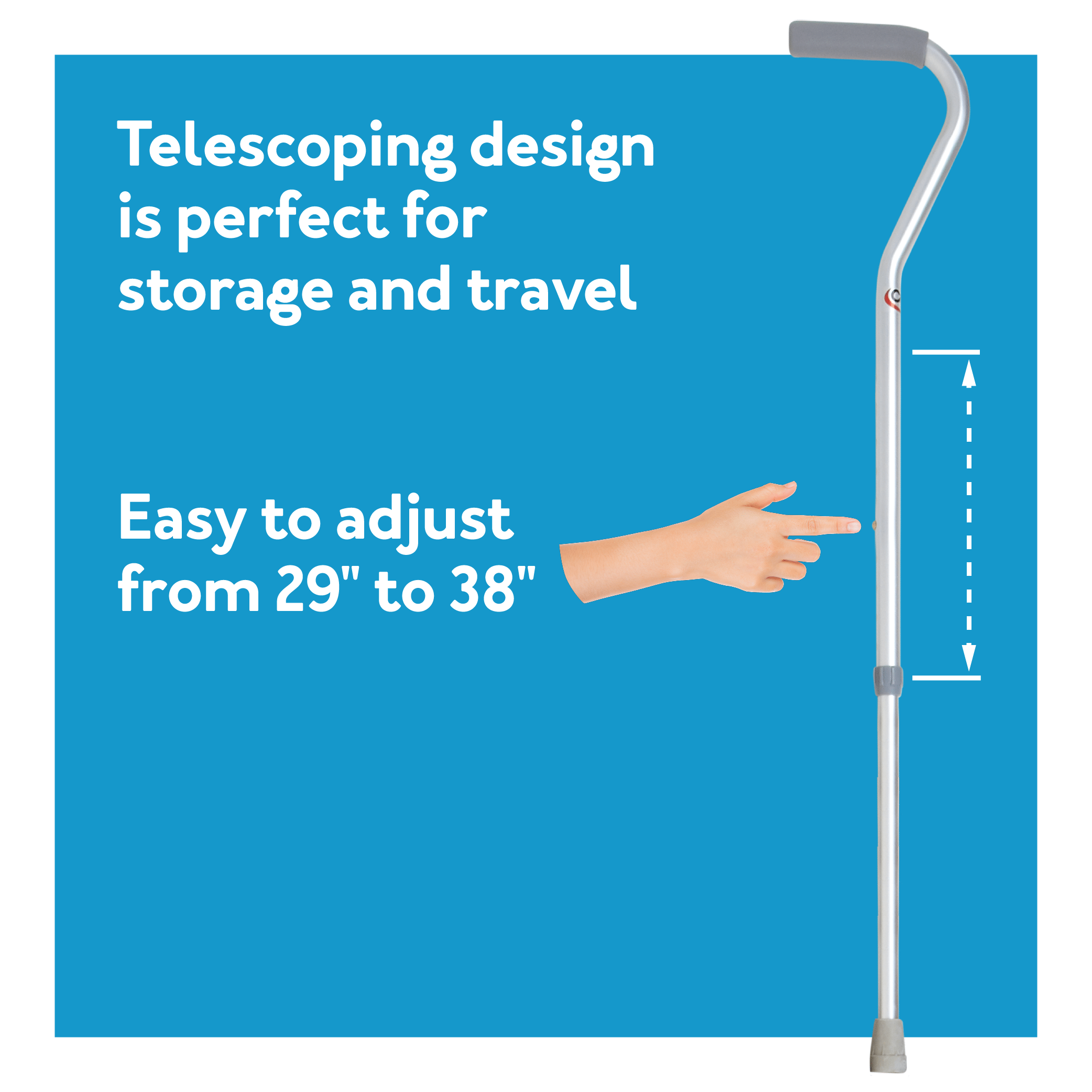
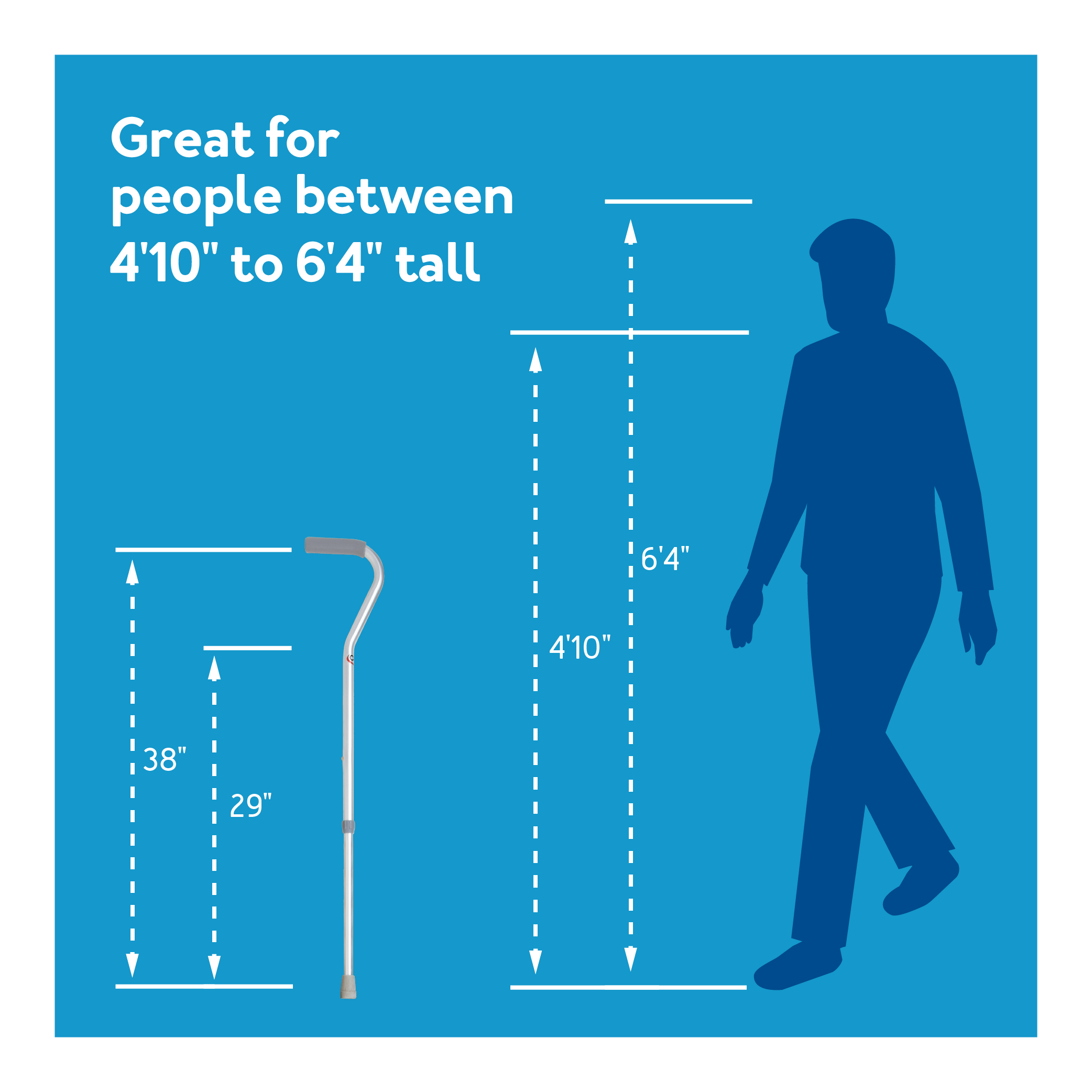
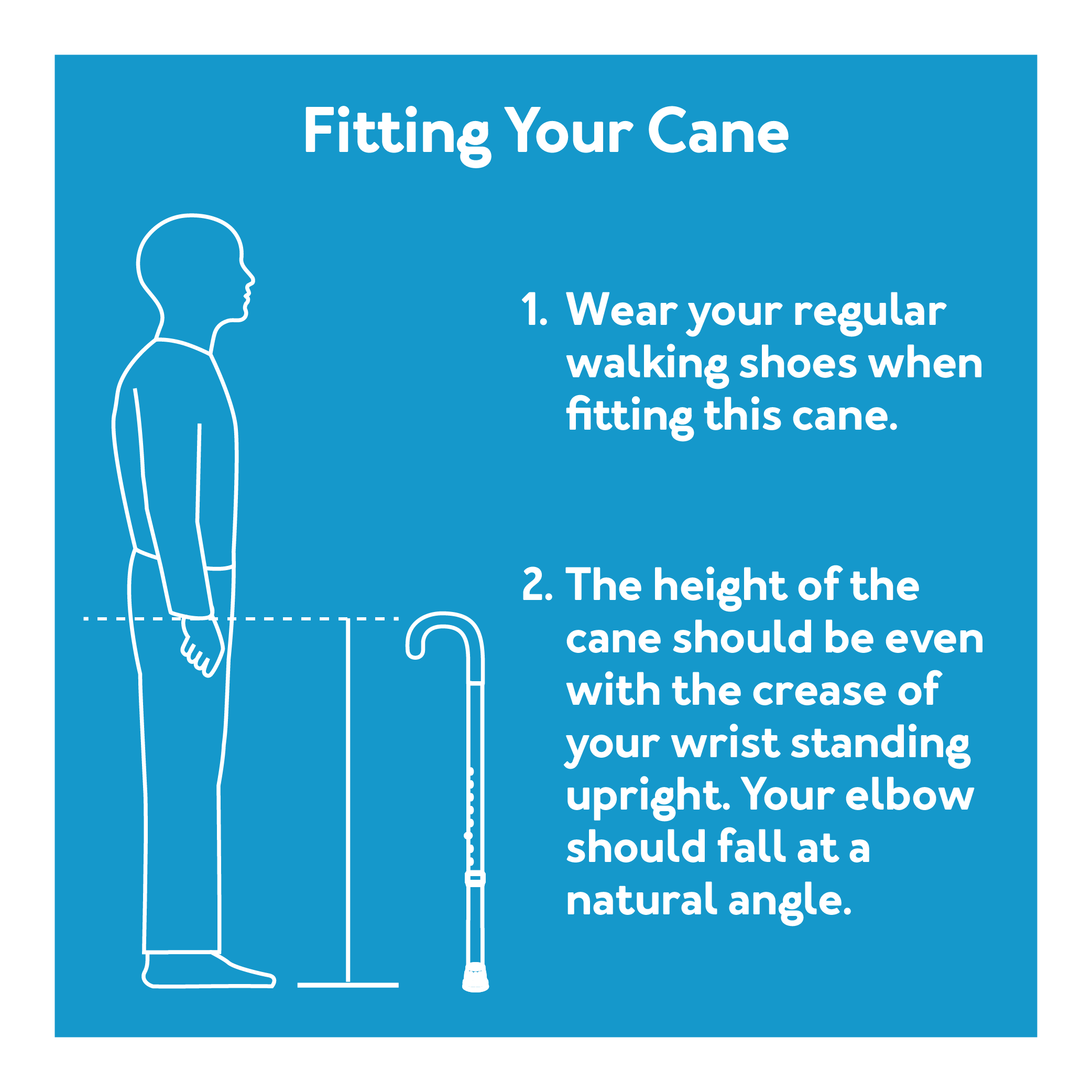
Carex Offset Aluminum Cane with Non-Slip Vinyl Grip
Material and Design
Wood vs Metal Canes
Once you've determined the cane and handle types that are right for you, you'll notice that canes on the market can come in a variety of materials. Most often, though, your choice will be between wood or metal, such as aluminum or steel.
Wood Canes
A wooden cane has a classic and sleek look to it, and you may consider it to be more aesthetically appealing. It can also be much easier to cut than a metal cane if the cane needs to be resized to a proper height. However, solid wood canes can be heavier to use and carry and are typically only available as a single tip cane.
Shop Wooden CanesMetal Canes
Metal canes, usually made from aluminum or steel, have the impressive combination of being both lightweight and durable. If you need a heavy-duty or quad-tip cane, this is likely the material option you will go with. Metal canes can be harder to cut to size, but some are height adjustable.
Shop Metal CanesDecorative Canes
While purchasing a plain wooden or gray metal cane can be the easiest choice to make, those aren't your only options. There are many designer canes on the market that come in different colors and designs to make your cane a fashion statement in addition to being a mobility aid.
Shop around for your favorite color or pattern and have fun with it! Needing a little assistance getting around doesn't have to be boring, especially if you plan on using the cane regularly.

Height
Once you've chosen the type, handle, materials, and design of your cane, you should make sure the cane you're considering can accommodate your height. A cane that is too short or too tall for you can not only be uncomfortable to use but can also be less supportive and stable than a properly sized cane.

How to Measure for a Walking Cane
Measuring Wrist to Floor
To determine the cane size best for your height, recruit a friend or family member, and try the following:
- Put on your usual walking shoes and stand naturally upright.
- Let your arms fall to your sides with a natural, relaxed bend of the elbow of about 15 to 20 degrees. Bend your elbow slightly more (up to 30 degrees) if you will be using a cane for balance.
- Have your friend or family member measure the height from your wrist joint to the floor.
The height of your chosen cane should be the closest half-inch to this measurement. For example, if your measurement is 31.8 inches, you will want a cane with a height of 32 inches.
While it is easier, this method is often less accurate than taking a specific measurement. To find the best size cane for you, we highly recommended taking the wrist to floor measurement.
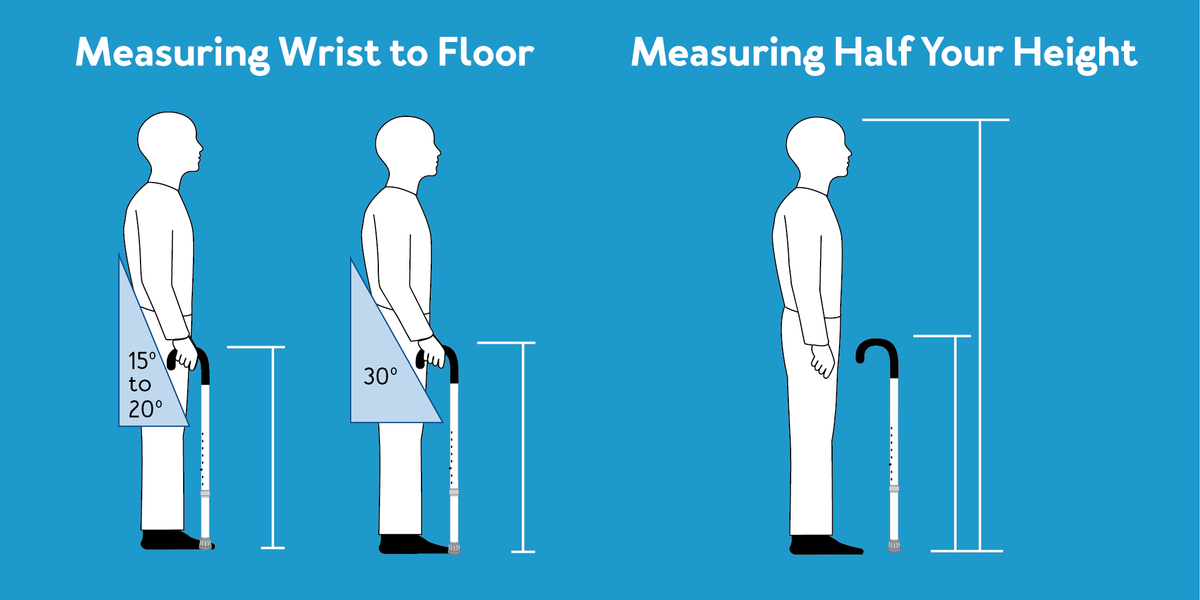
Cutting Your Cane
If you can't find a cane of the proper height for you, you may find it easiest to purchase an adjustable cane with a height range that your measurement falls under. These canes don't require any cutting and can instead be easily adjusted using a knob or push button.
However, if your ideal cane isn't height-adjustable, walking canes made of wood, lucite, carbon fiber, or aluminum can be cut to size.
If you decide to cut your cane, be sure to do the following:
- Make sure your cane can be sized. Some canes may state on a label or in the product description that they should not be. If that is the case, do not cut the cane.
- Use one of the measurement methods stated above to find the proper cane height for you.
- Measure the length of your cane from the top of the handle to the bottom of the rubber tip.
- Subtract your proper cane height (#1) from the cane length (#2) to determine how much of the cane should be cut off.
- Twist off the rubber tip from the end of the cane.
- Measure and mark the cane shaft where the cut is to be made.
- Cut cane at a flat angle with a hacksaw or fine tooth blade. If you don’t have the necessary tools, you can also take your cane to a local hardware store that cuts wood and other materials to have it cut for you.
- Return rubber tip to cut end and secure.
Remember to measure and cut carefully, as canes can be cut short but not lengthened.
How do I know if my cane is the right height?
To check the fit of a cane you own, have cut, or are considering purchasing, check that the following are true:
- When you stand naturally upright, the cane handle is level with the crease of your wrist.
- When holding the cane, you can relax your arm with your elbow bent at a comfortable angle (about 15 to 20 degrees).
If you have to bend your elbow more than 15 to 20 degrees to hold your cane, it is likely too tall. If you have to slouch or lean toward the cane, it is likely too short.

Weight Capacity
In addition to your height, you will want to make sure that your cane can accommodate your body weight. Be sure to check for a weight capacity in the product description or on the label of the cane you are considering to ensure your body weight is safely supported.
Cane Accessories

Rubber Tip
When you purchase your cane, it will come with an attached rubber tip to provide you with necessary traction and stability. However, these tips can become worn out over time and can cause you to trip or fall if not replaced. If you notice the tip of your cane is worn out, you will find it much easier to replace the tip rather than the entire cane!
To replace worn cane tips, remove the worn tip from the cane and measure the width (or diameter) of the shaft in inches. Typical widths are ¾" or 1". Replace with new tips in measured size and ensure that the tip is pushed onto the cane completely.

Wrist Strap
A wrist strap can be helpful if you often find yourself dropping or misplacing your cane. It allows you to hook your cane to your wrist to help you get a better grip of the handle and allow you to use two hands without needing to set your cane down. Wrist straps also allow you to easily hang your cane up when not in use.

Ice Tip
Ice tips are great to have during the cold winter months to keep you safe in the case of inclement weather. These tips are typically made with durable steel and feature sturdy, pointed prongs to help better stabilize you while walking over snow or ice. They also can often be conveniently flipped out of the way when they are not needed.
How to Walk with a Cane
Once you've found the right cane for you, learning how to use a cane properly should be relatively easy. To properly walk with a cane:
- Hold the cane on your uninjured or stronger side to best support the affected leg.
- Step forward with your affected leg and move the cane forward at the same time. Your affected leg and the cane should be moving together as you walk.
- Lean your weight through your arm and onto the cane for support as needed.
- Always move the cane the same distance as an average step. You do not want to step ahead of it or feel like you have to "catch up" with it.
- Always step with the affected leg and cane first on level surfaces.

To walk upstairs:
- Stand close to the first step and step up with your stronger leg.
- Lean forward and step up to the first step with your affected leg and cane.
To walk downstairs:
- Step down with your affected leg and cane.
- Step down to the same step with the stronger leg.
- Try to keep your back erect and lean forward as little as possible.

Buying a new cane can be stressful and confusing, especially if this is your first time needing a mobility aid. We hope this guide has alleviated some of the stress and made it easy to pick the best cane for you so you can continue to walk safely and happily.
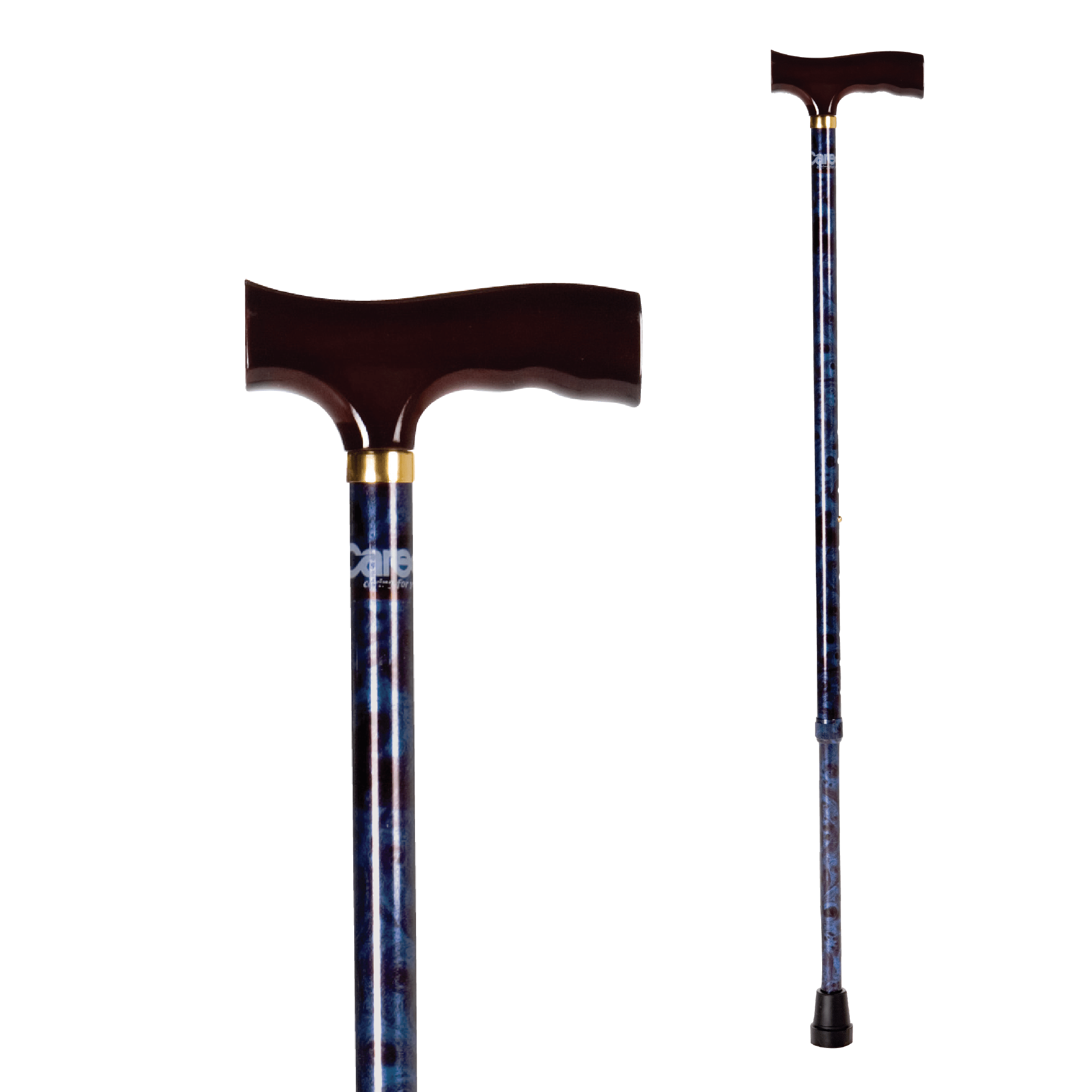

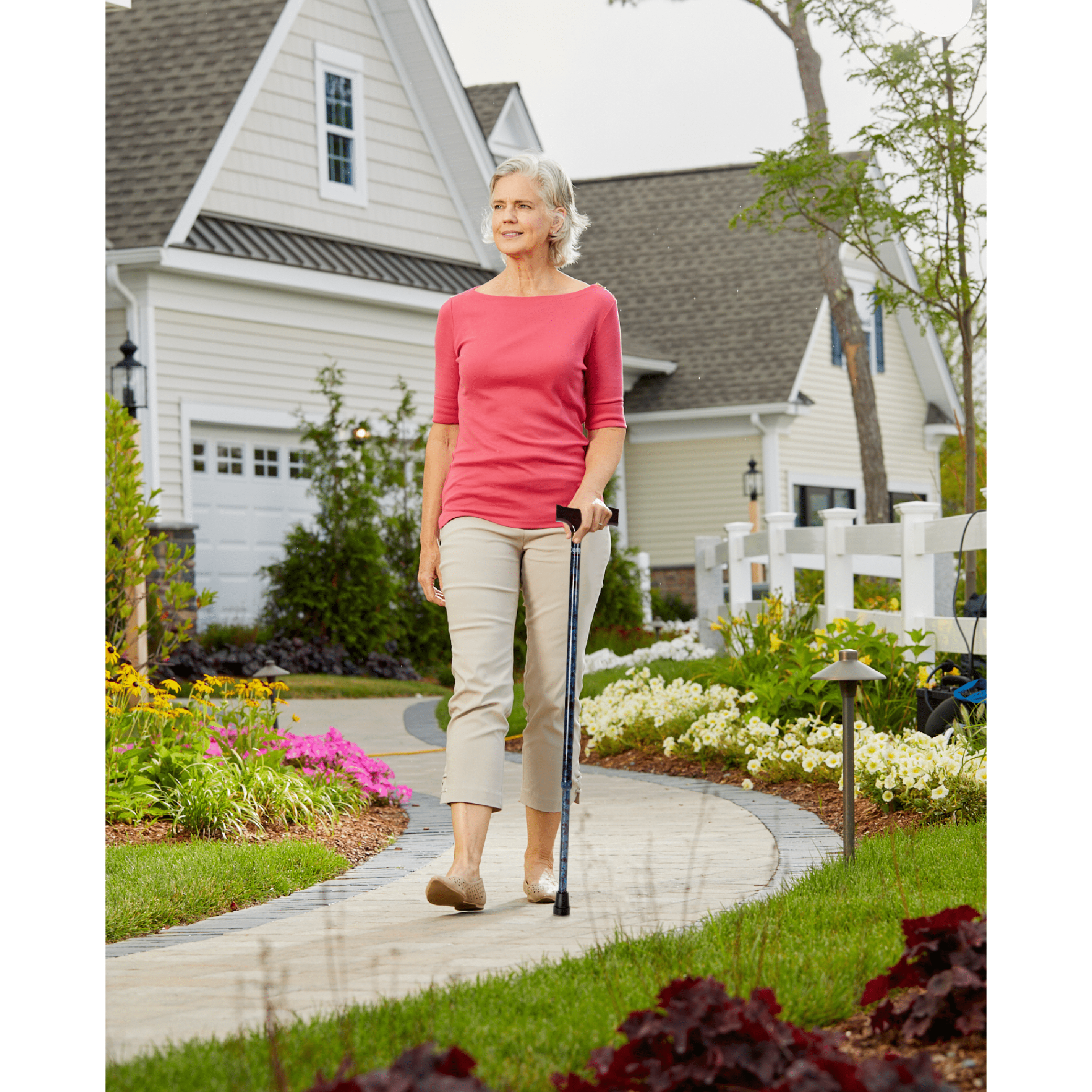
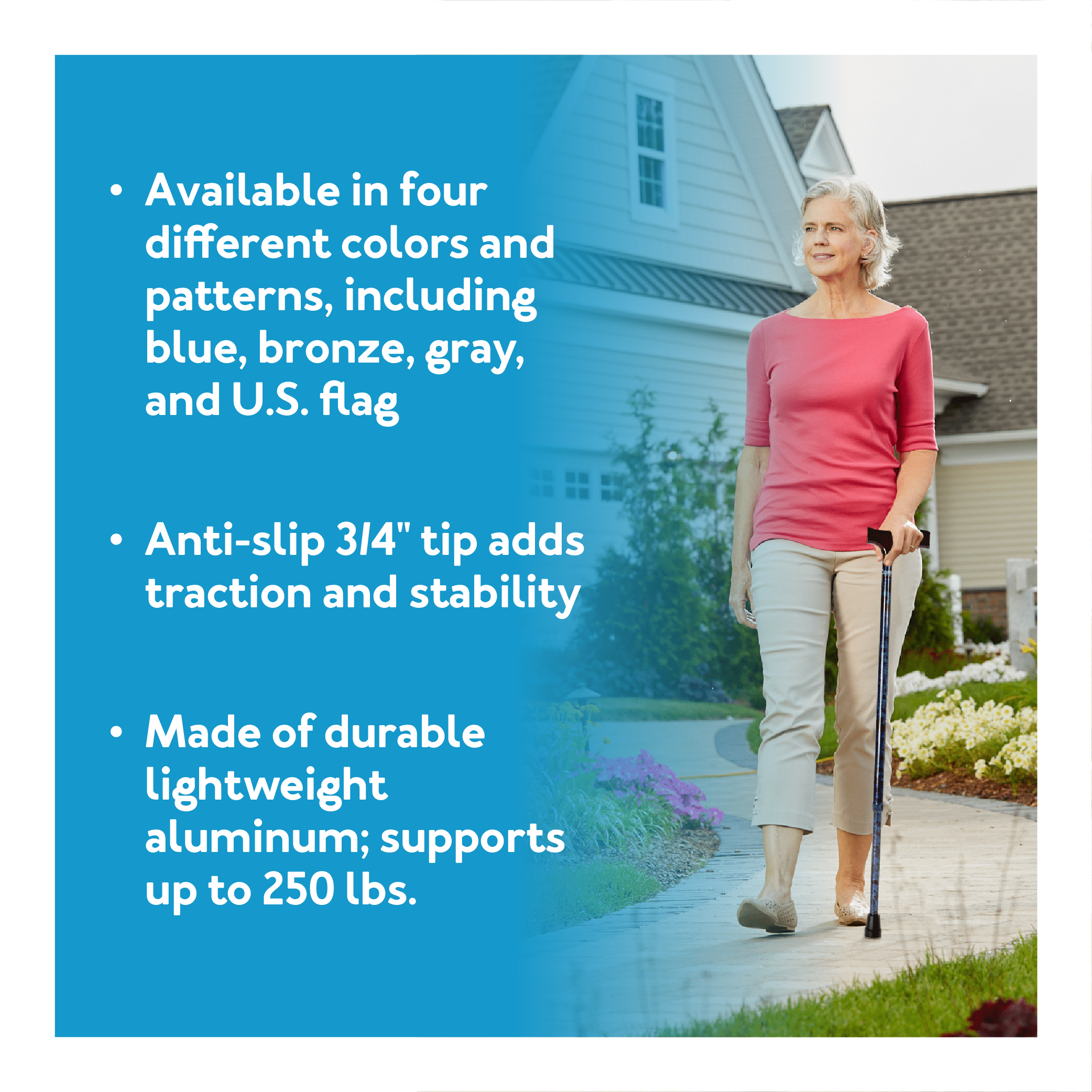
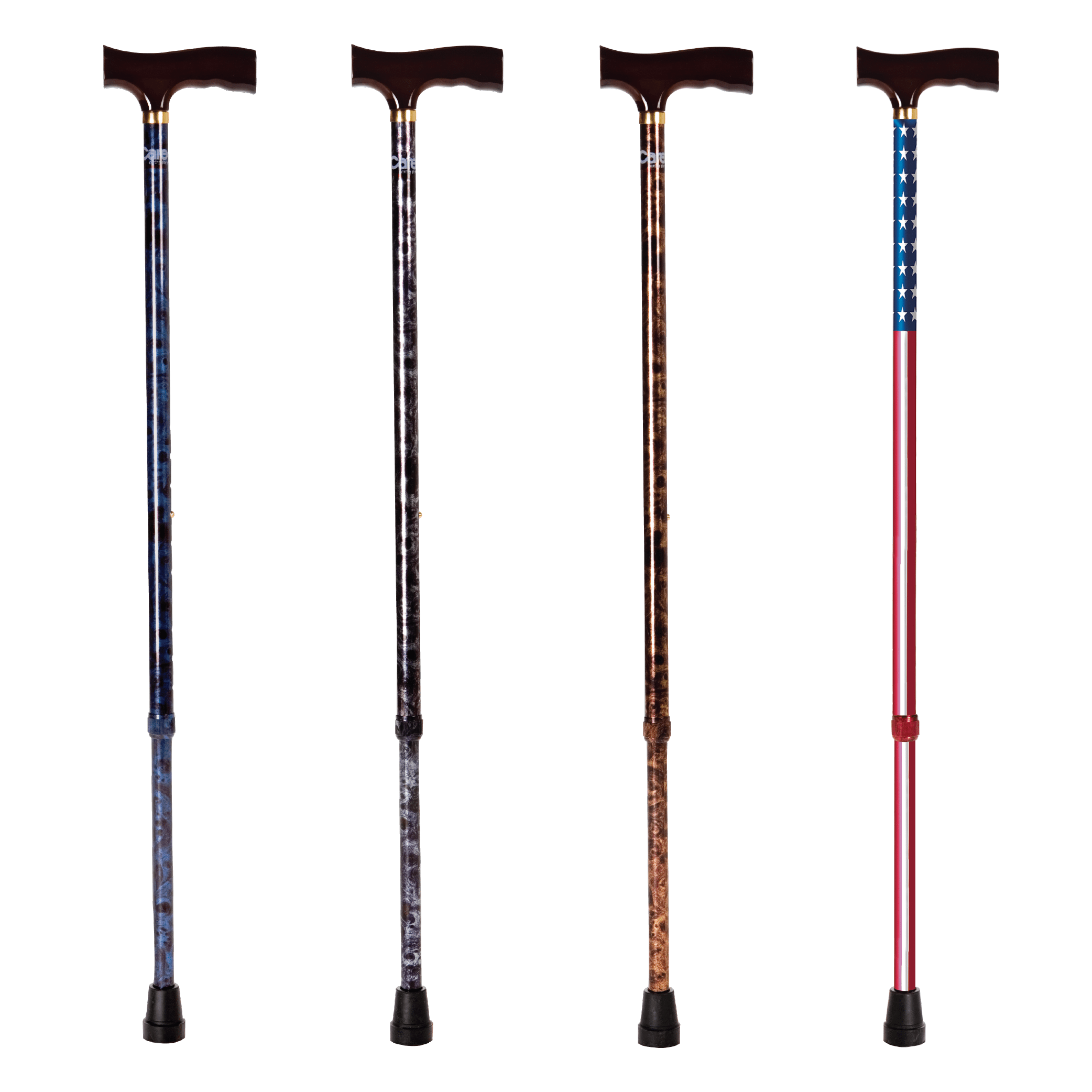
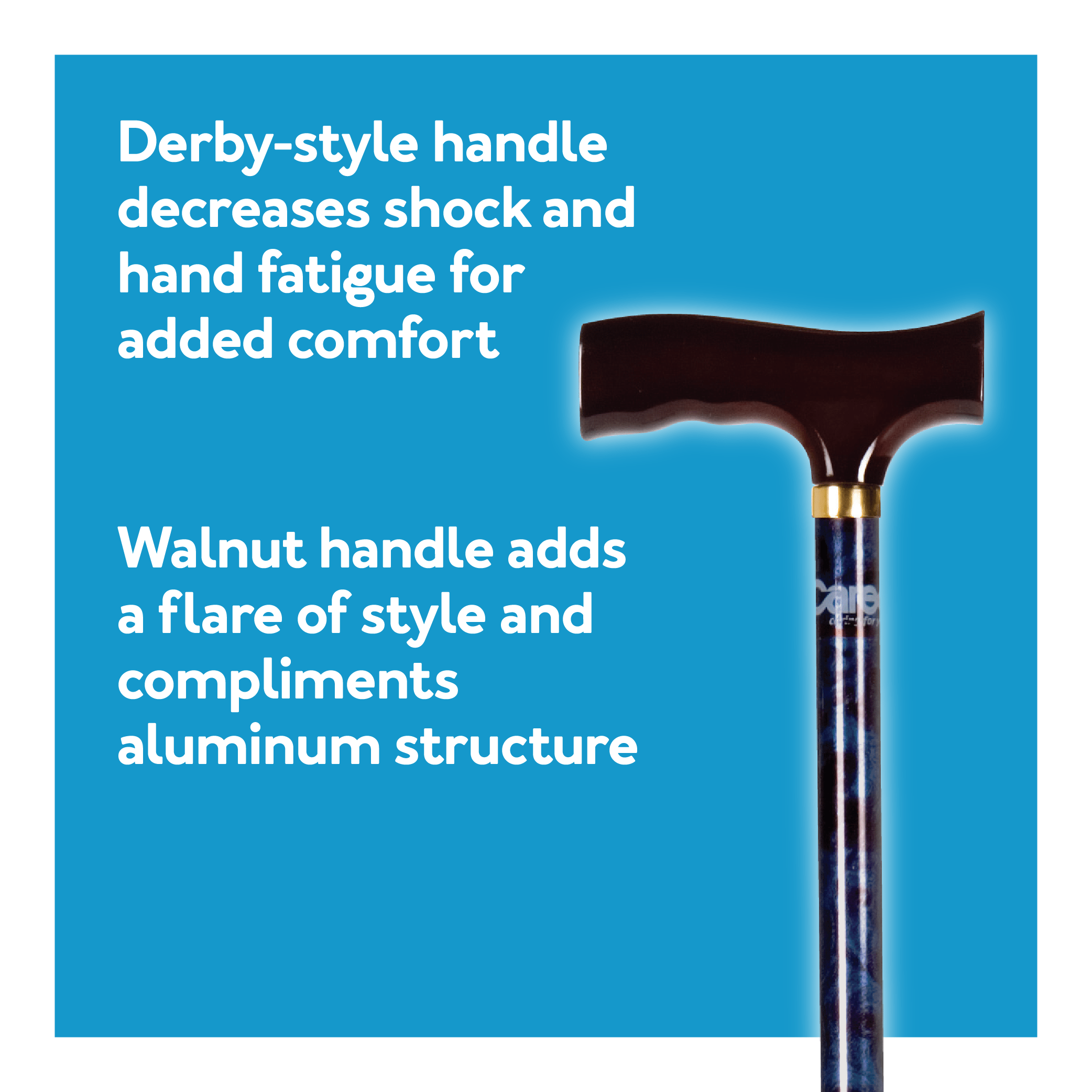
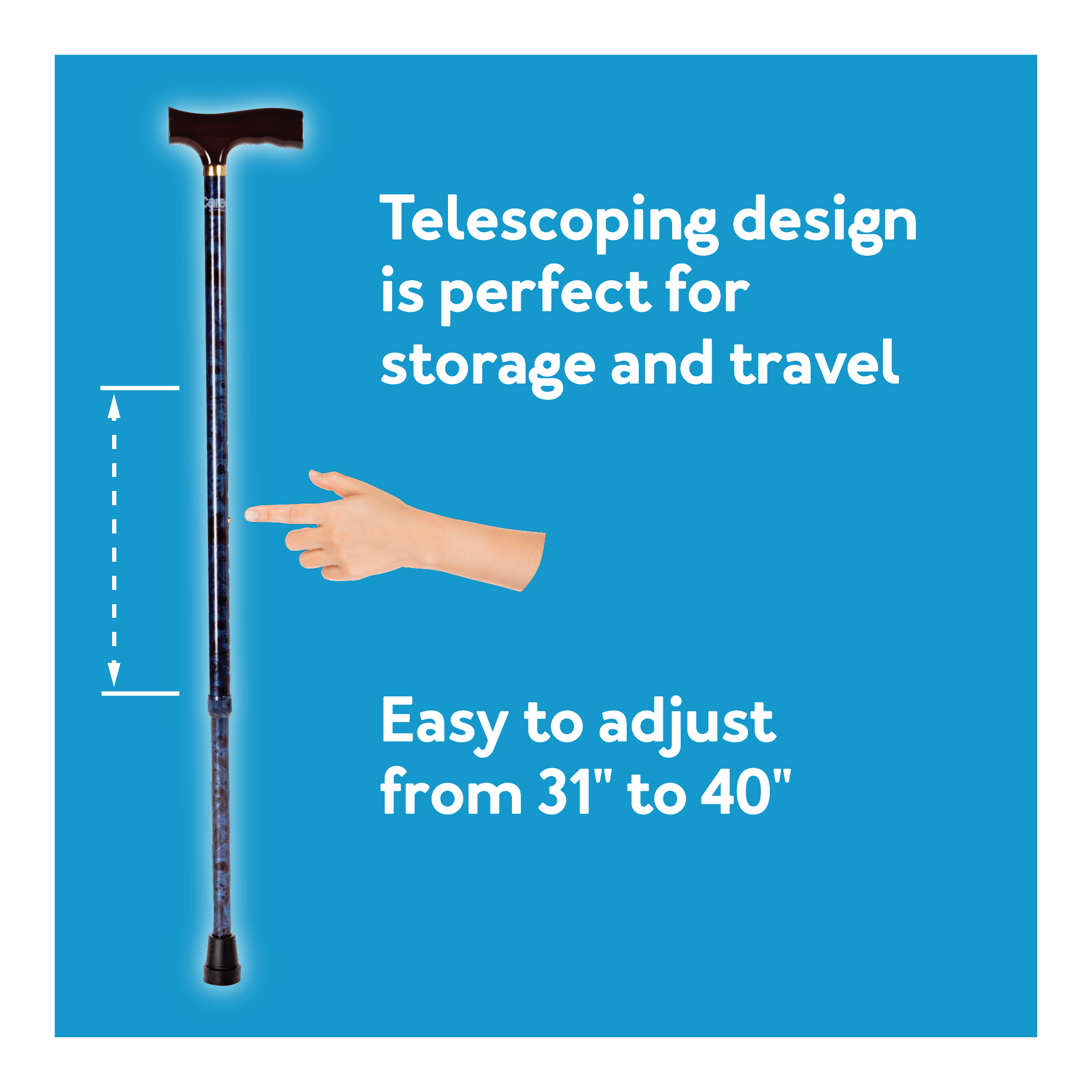
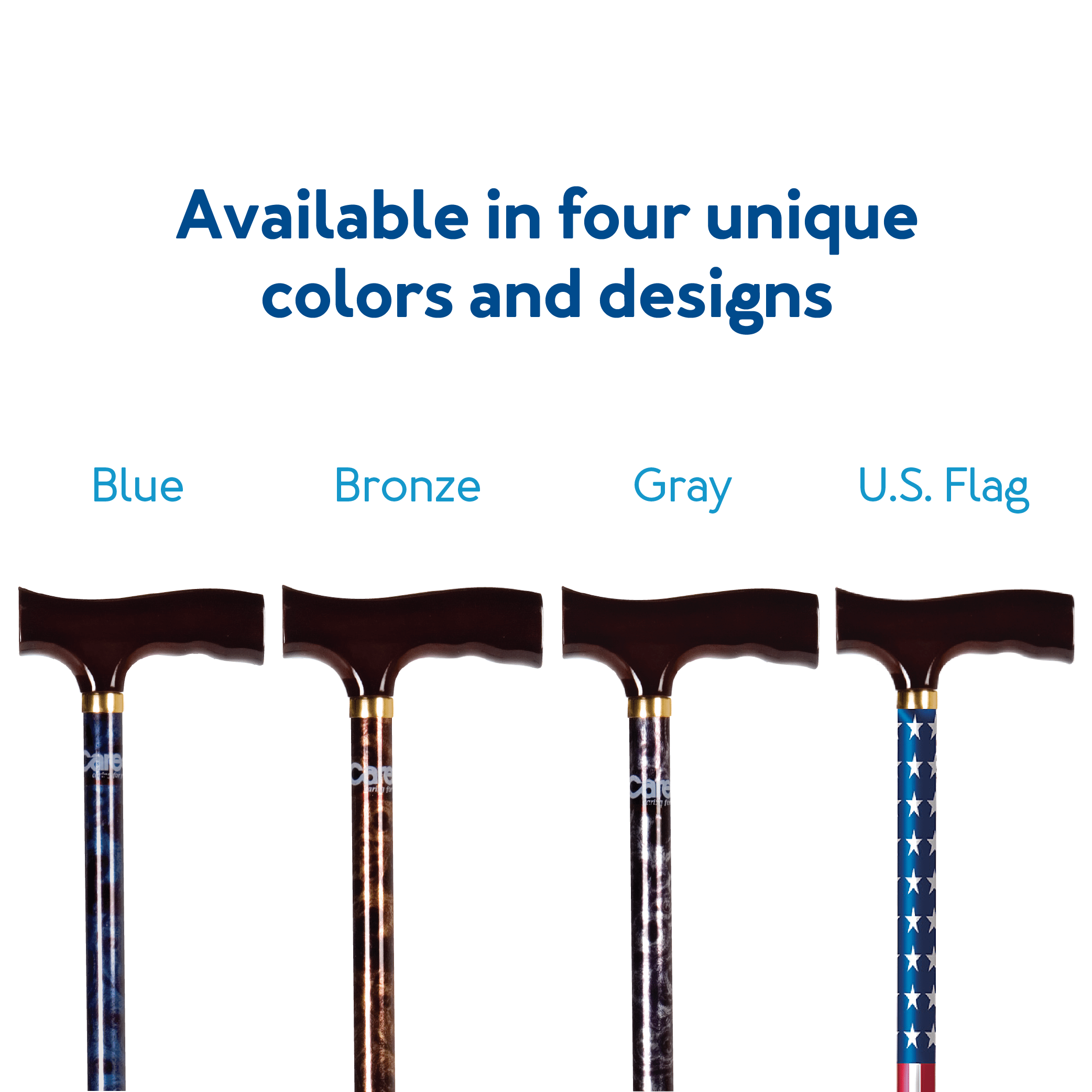
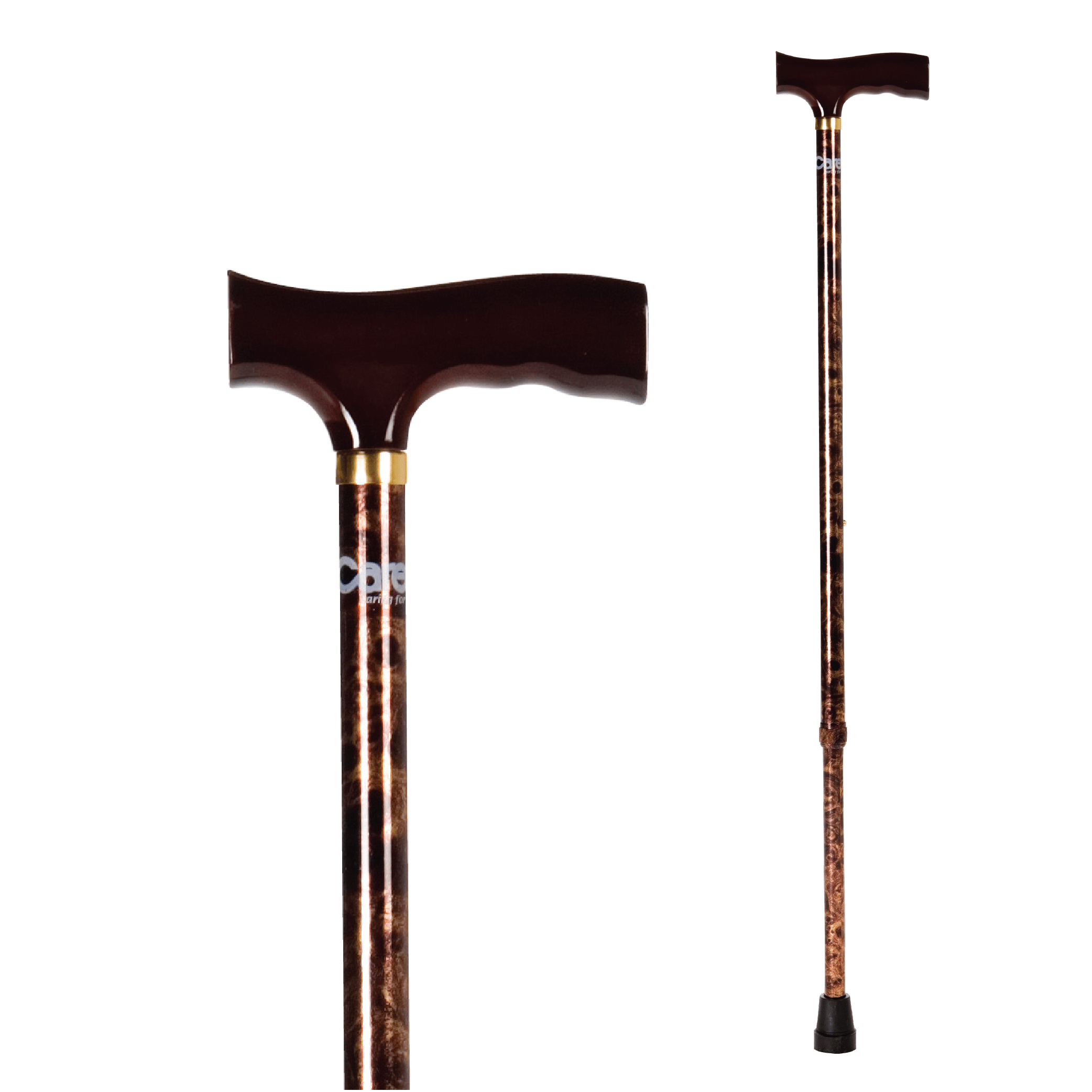
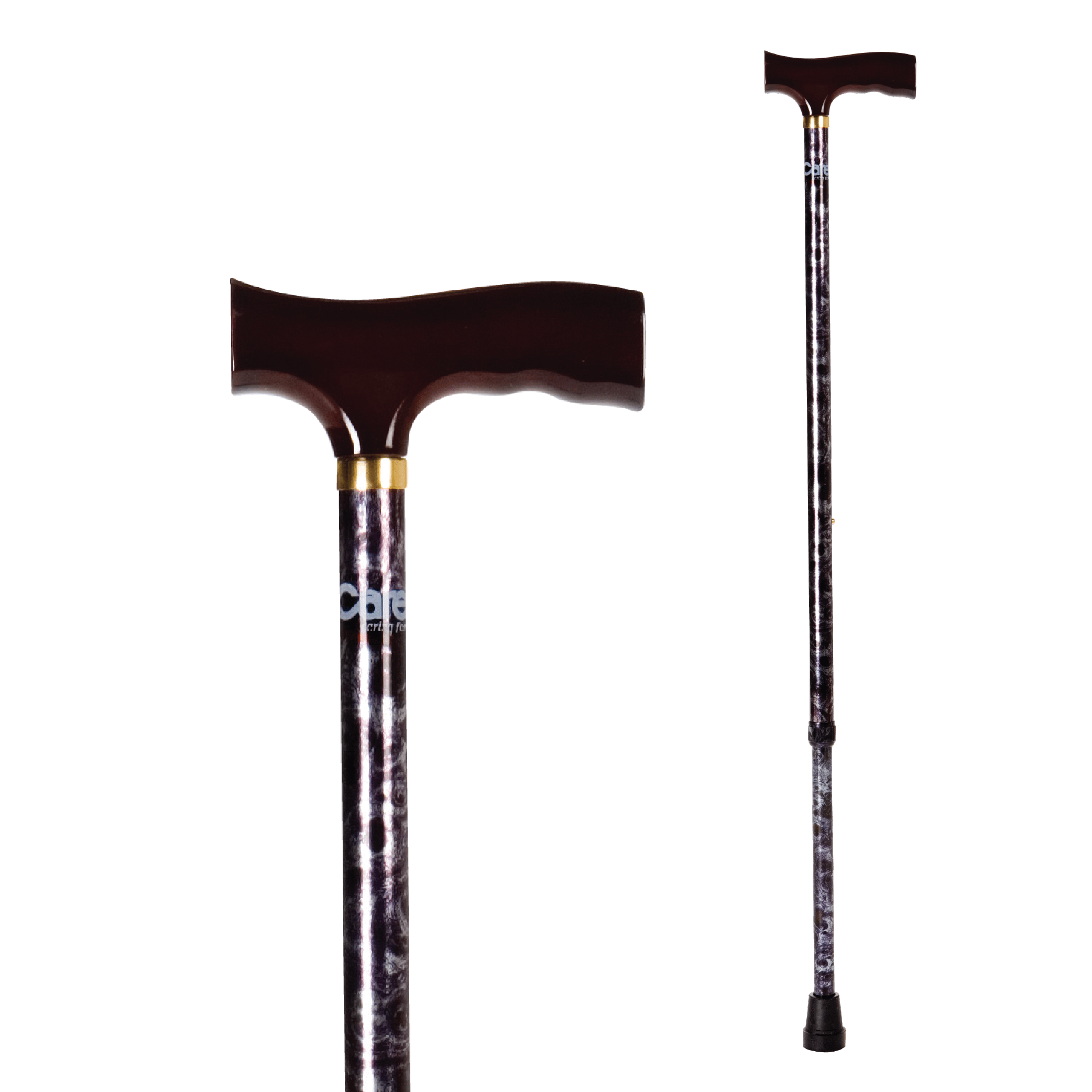
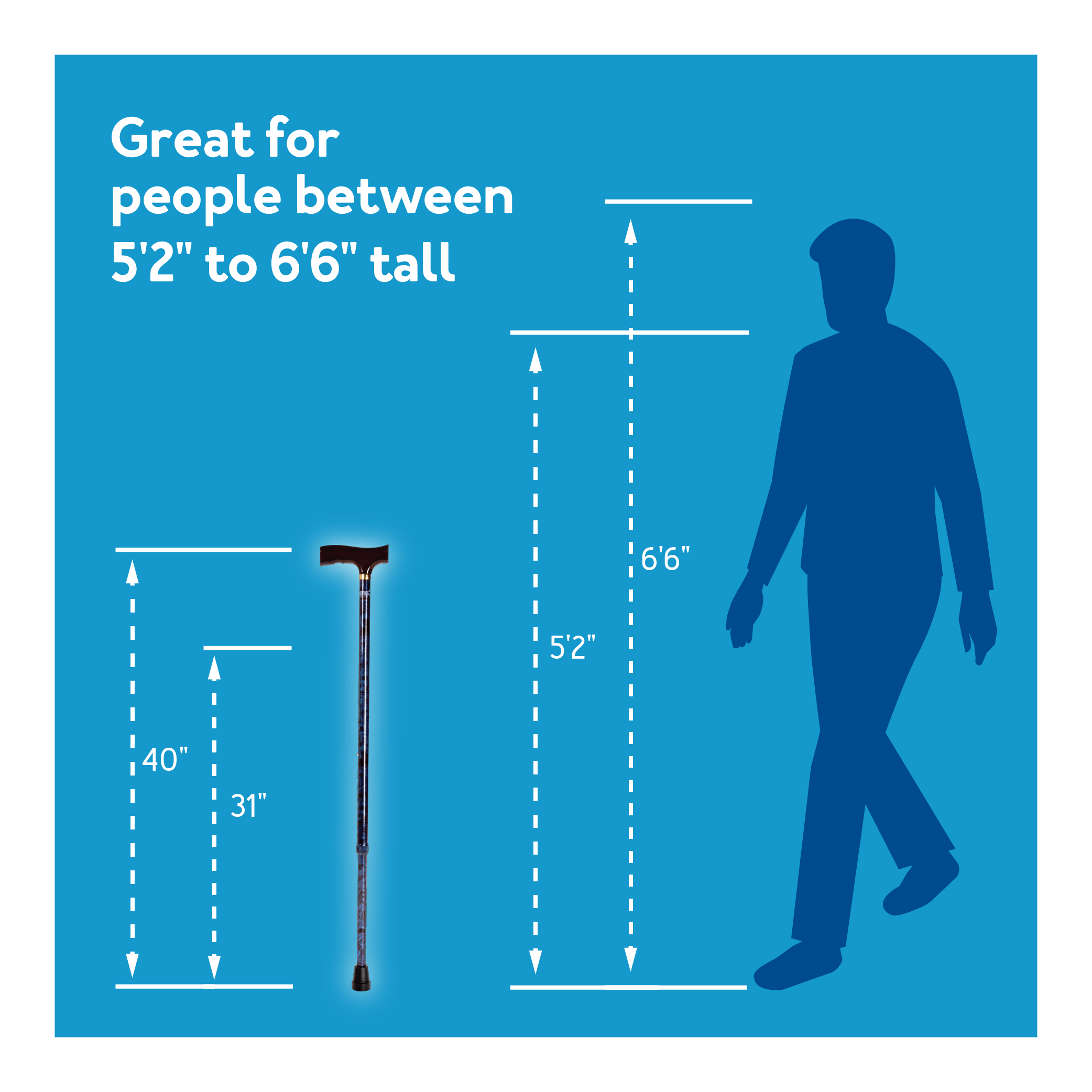
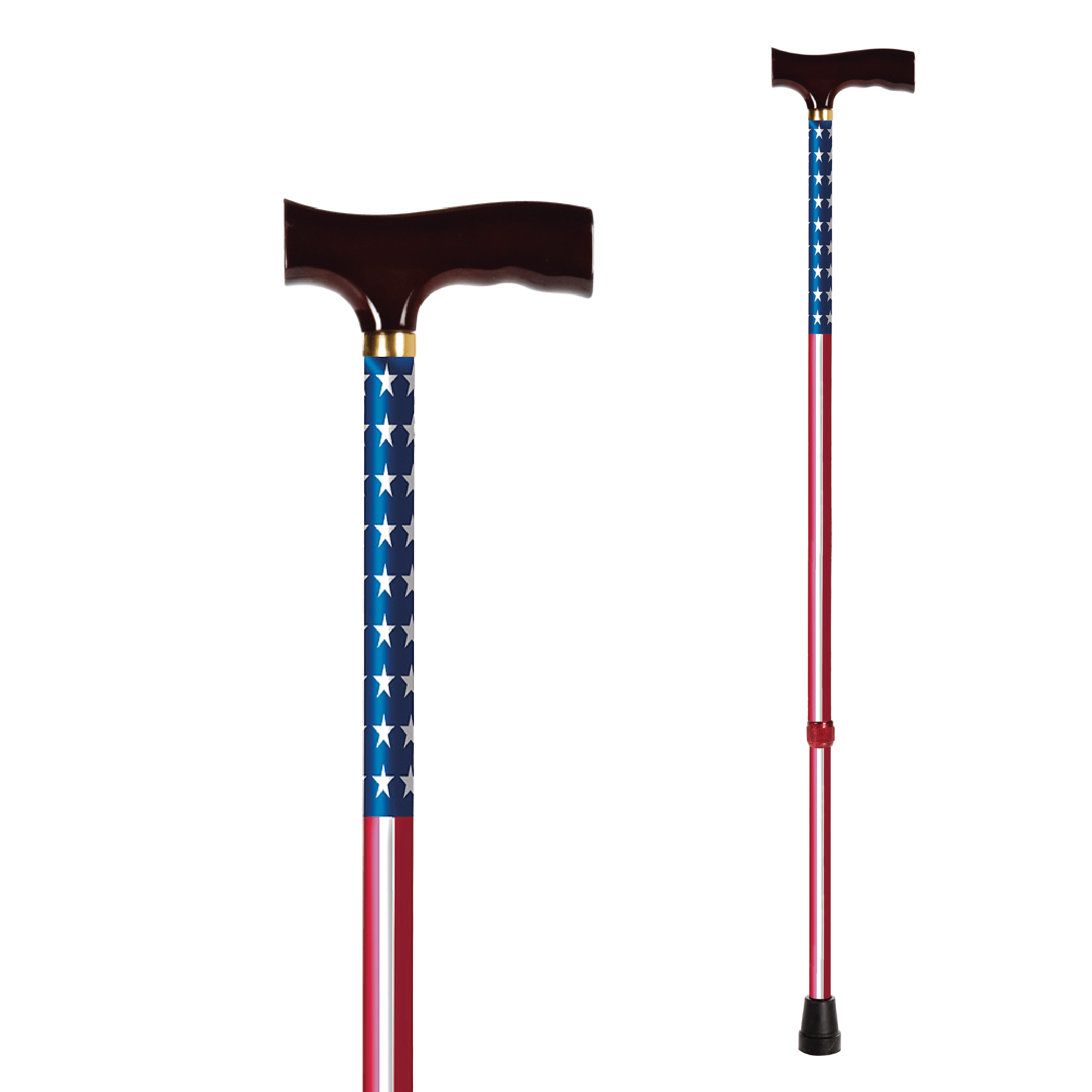
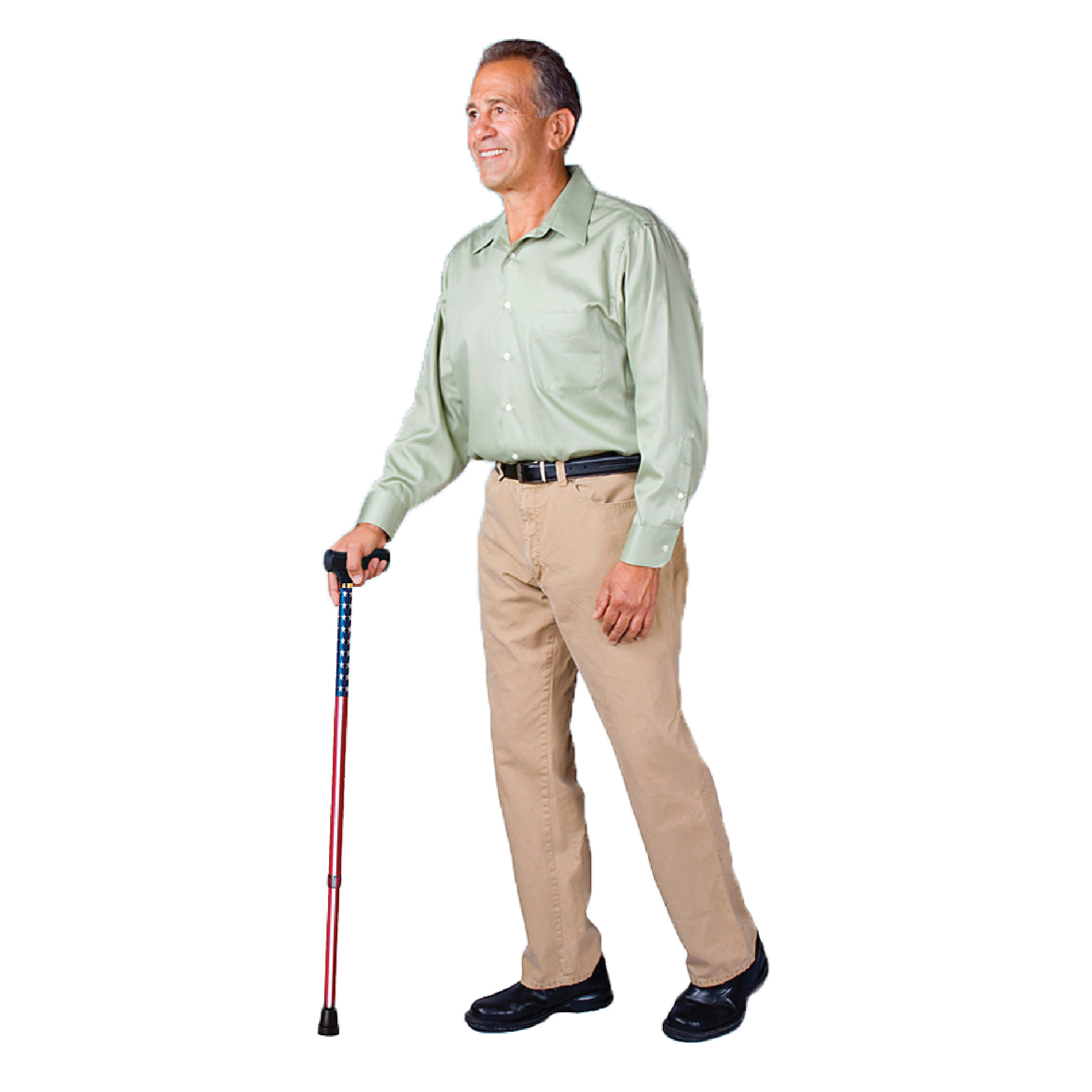
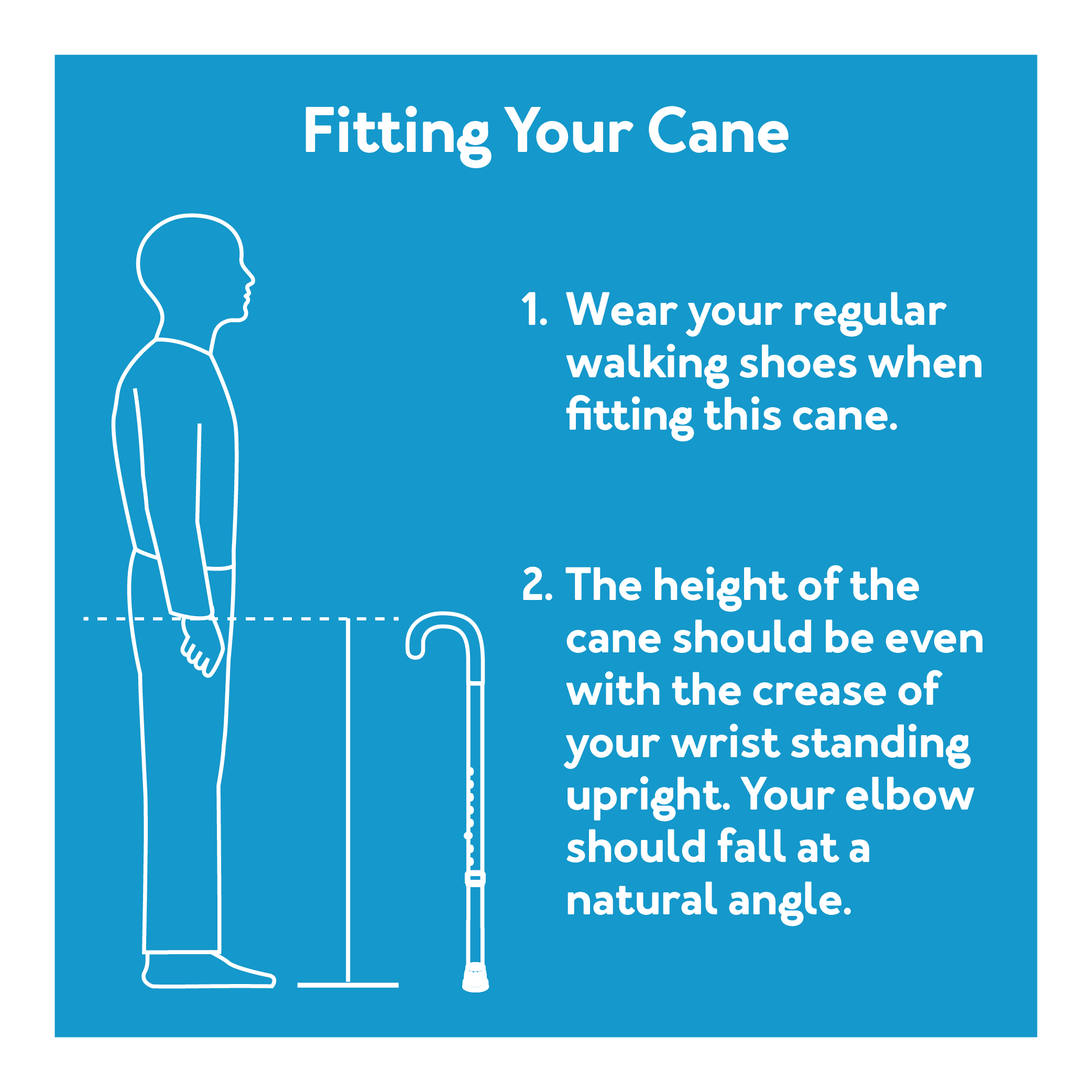
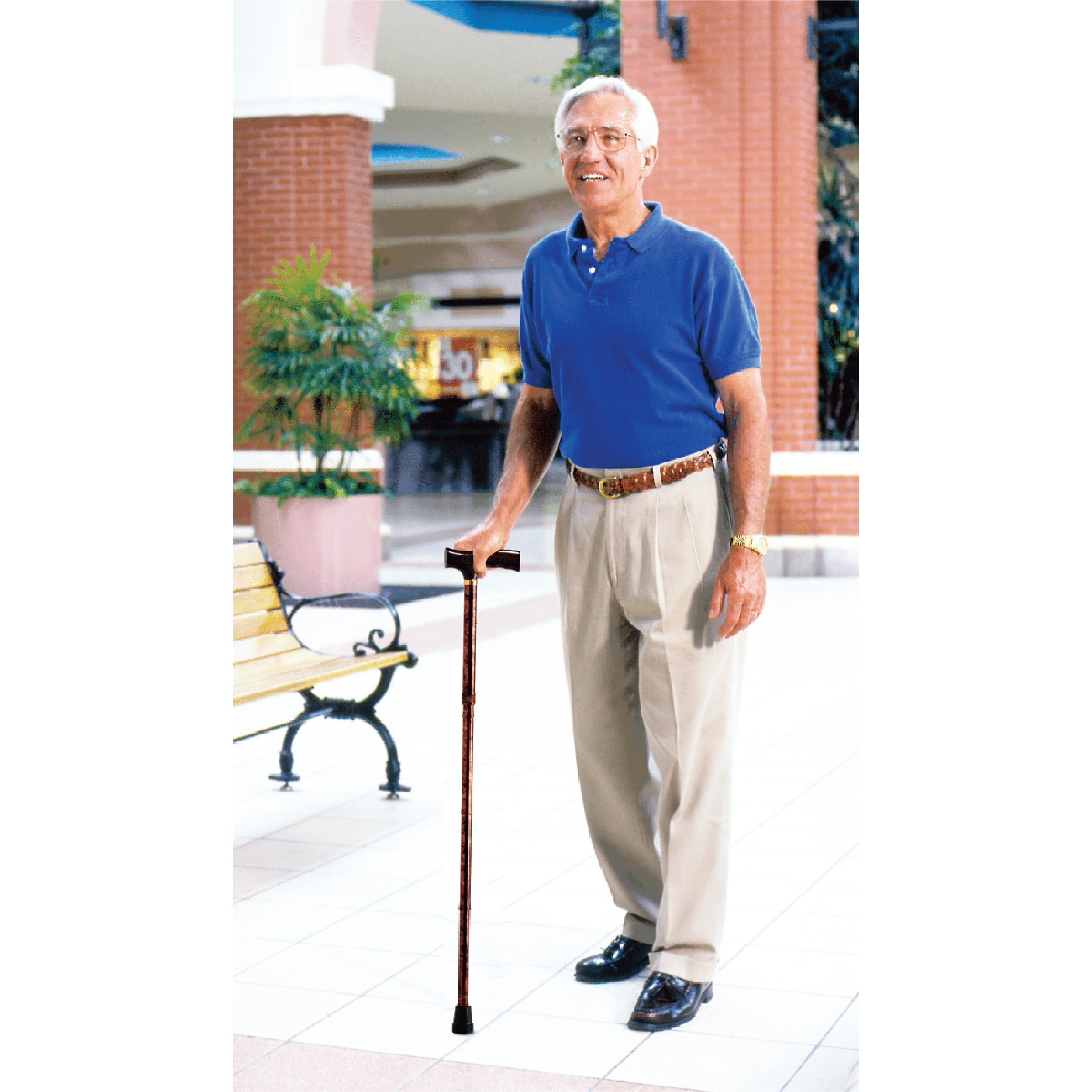
Carex Designer Derby Cane
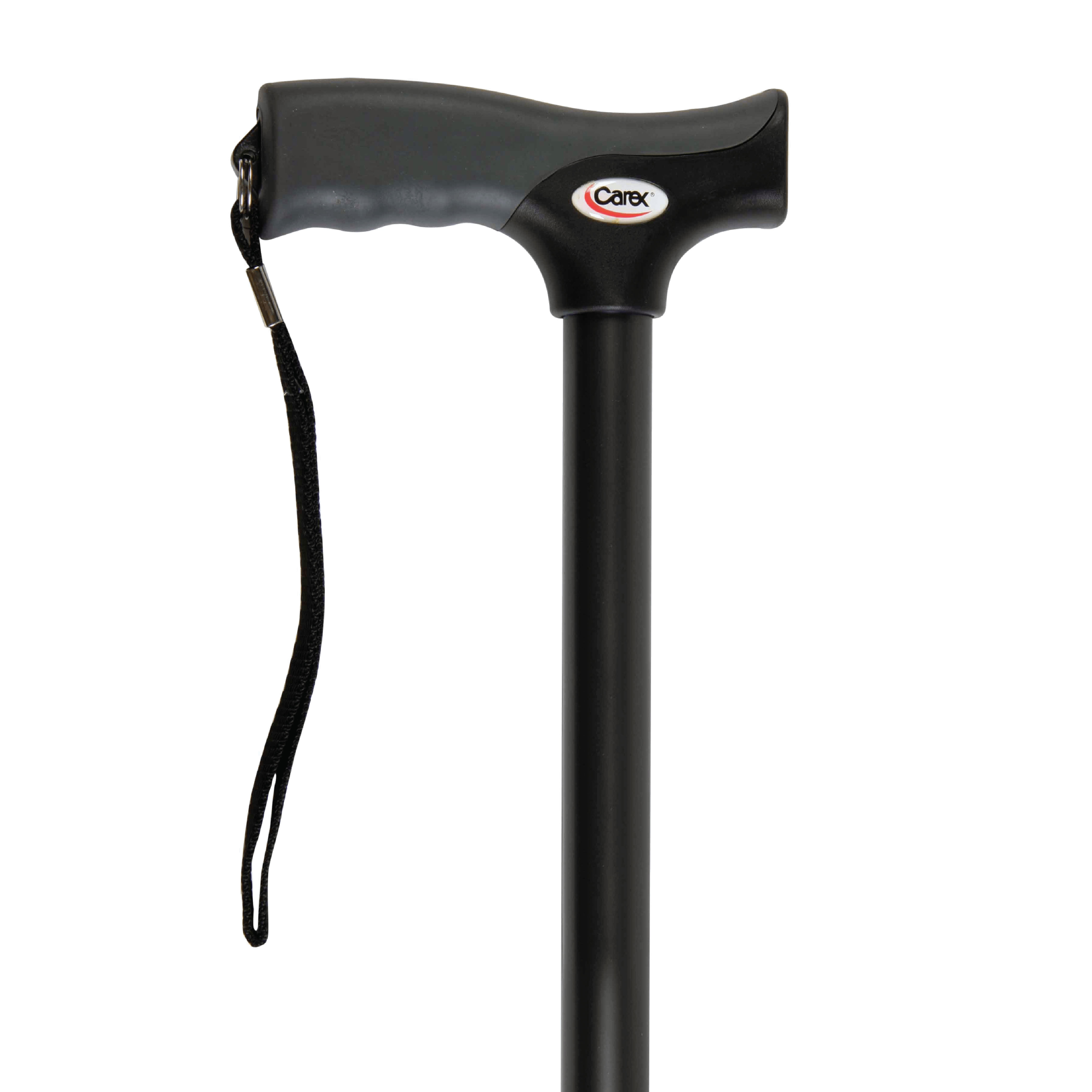

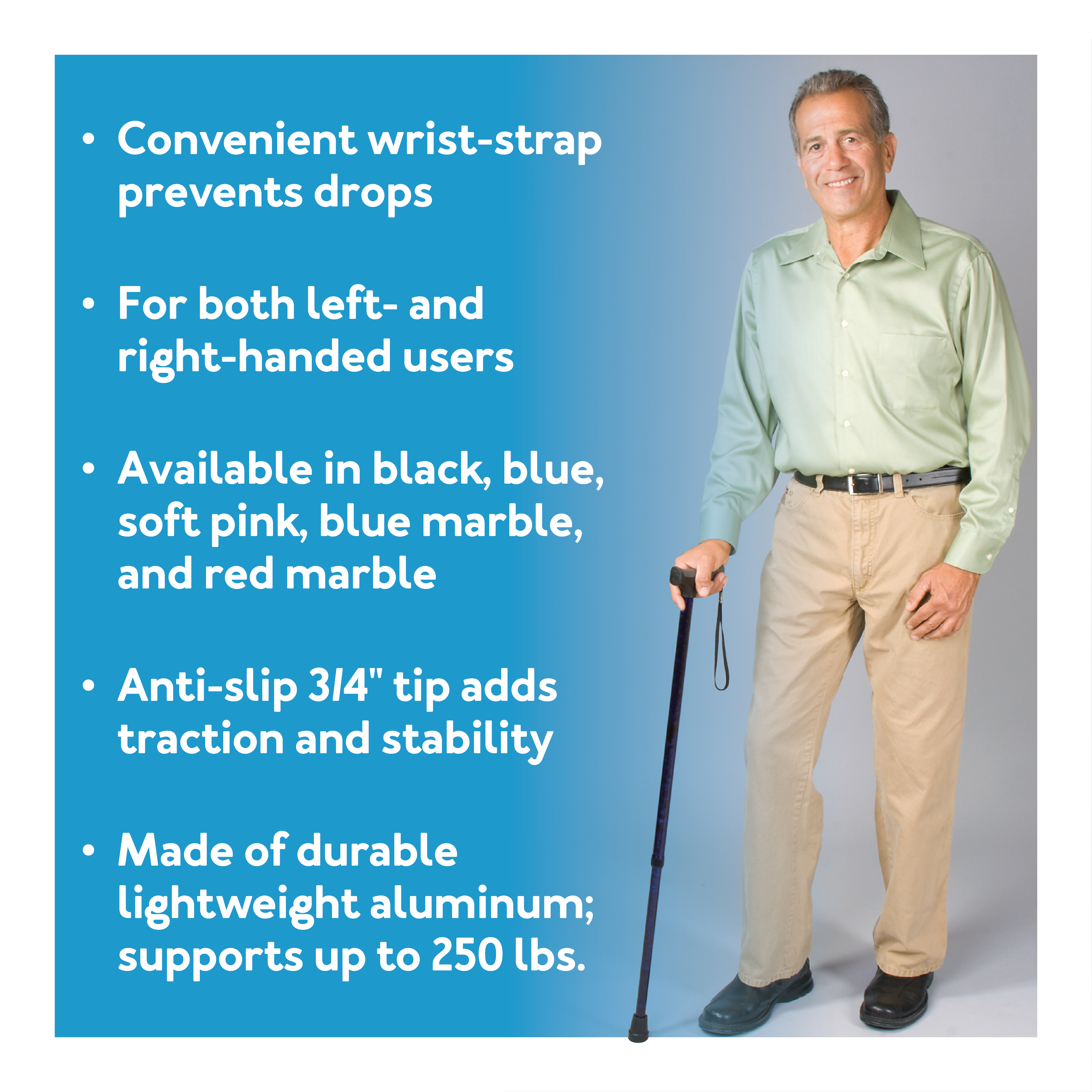
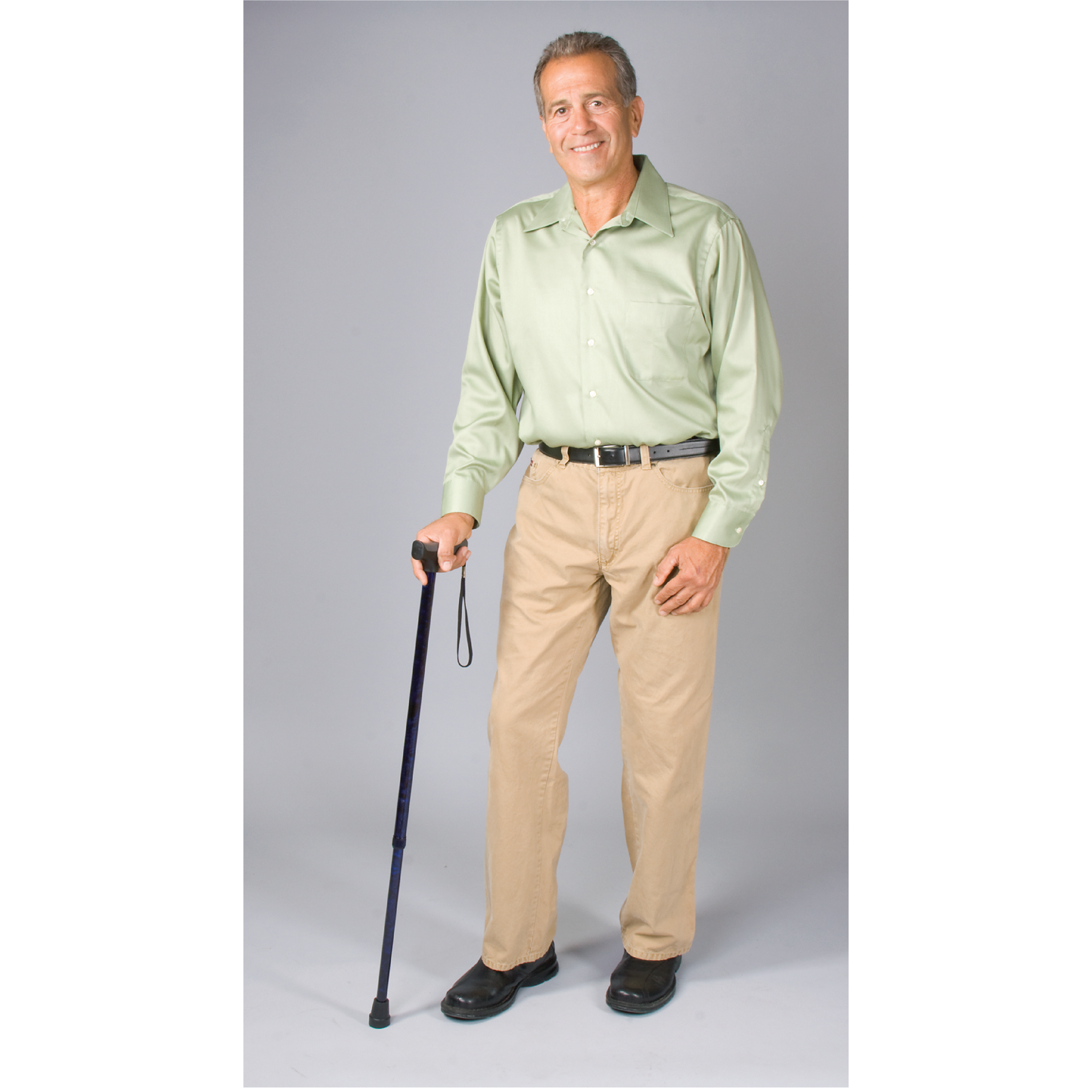
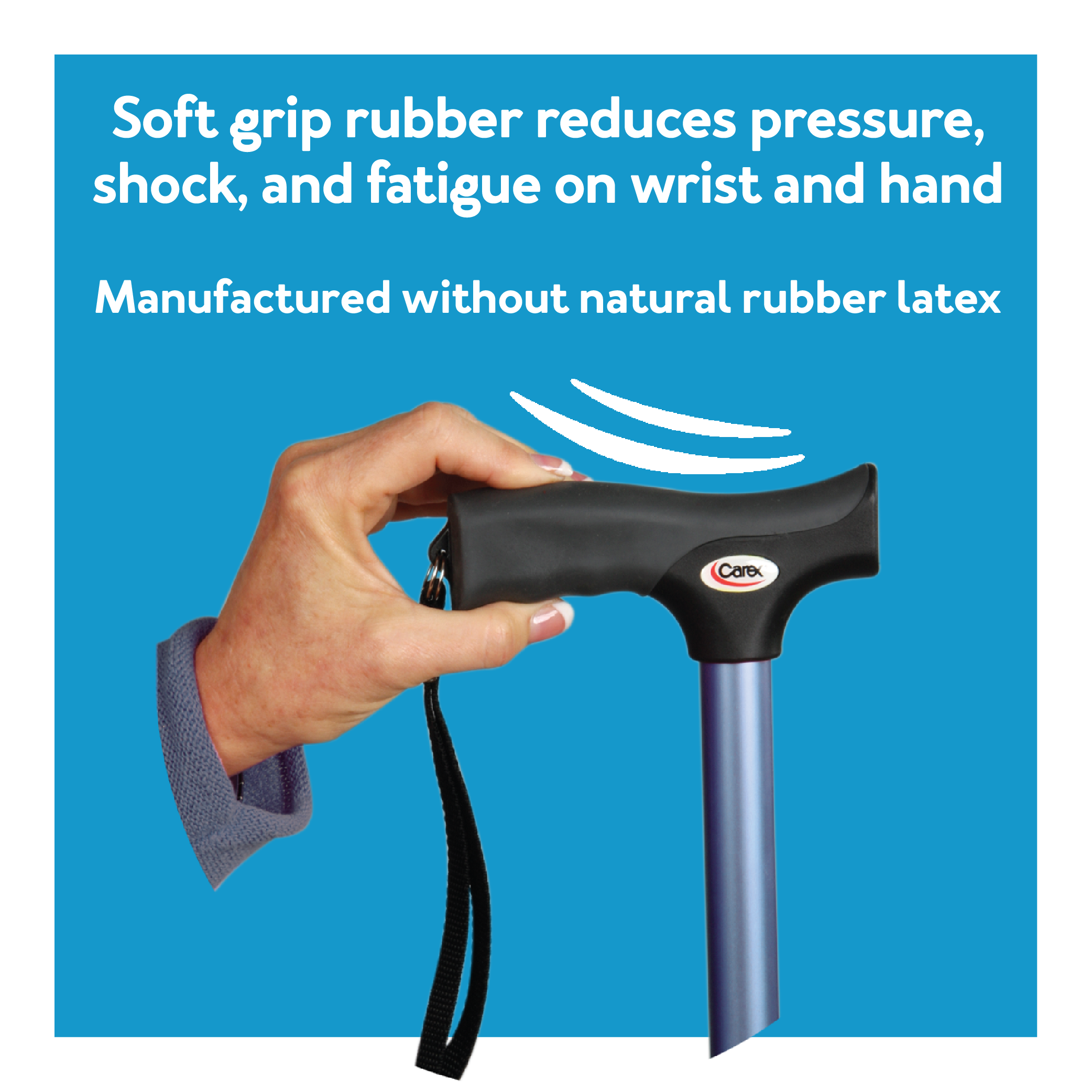
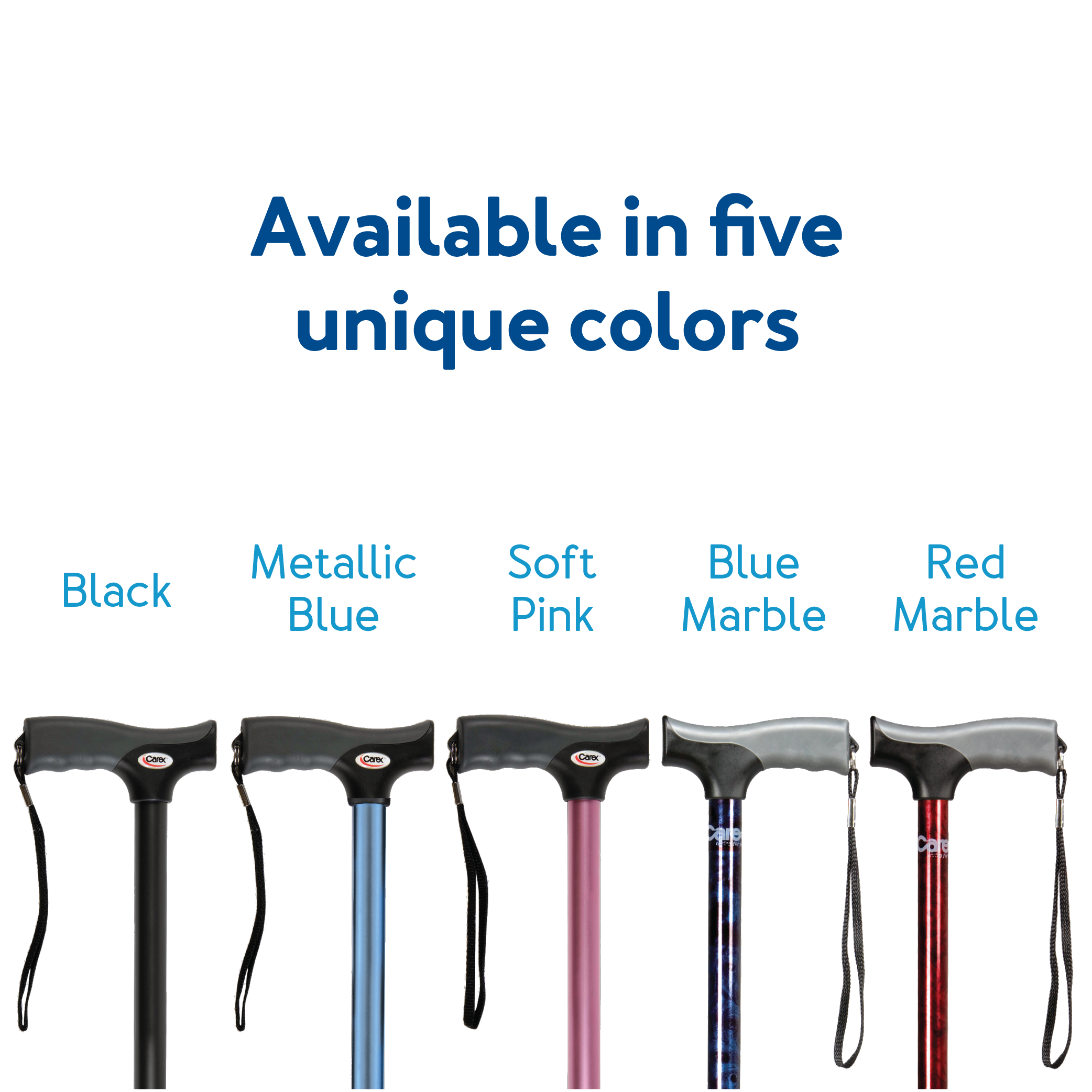
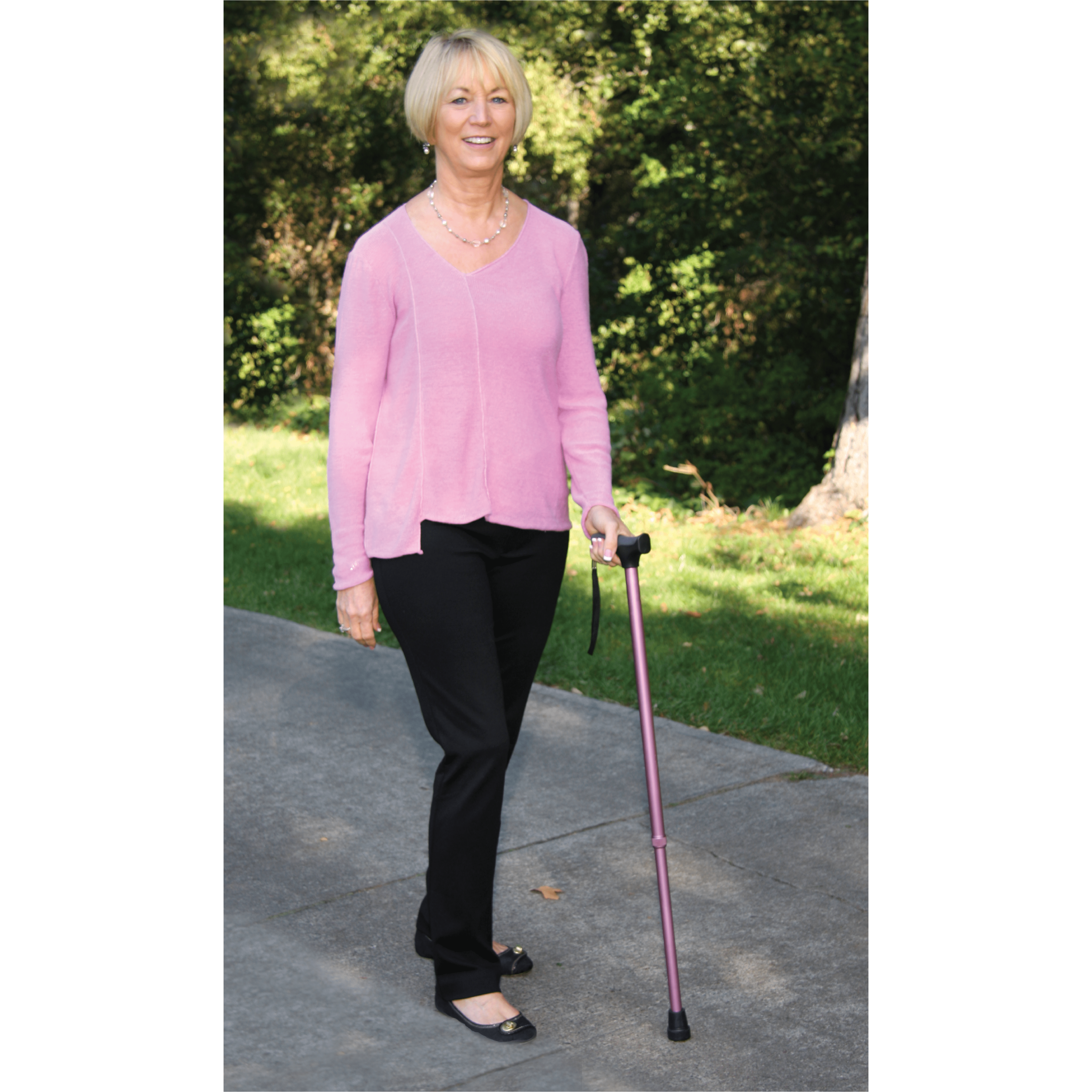
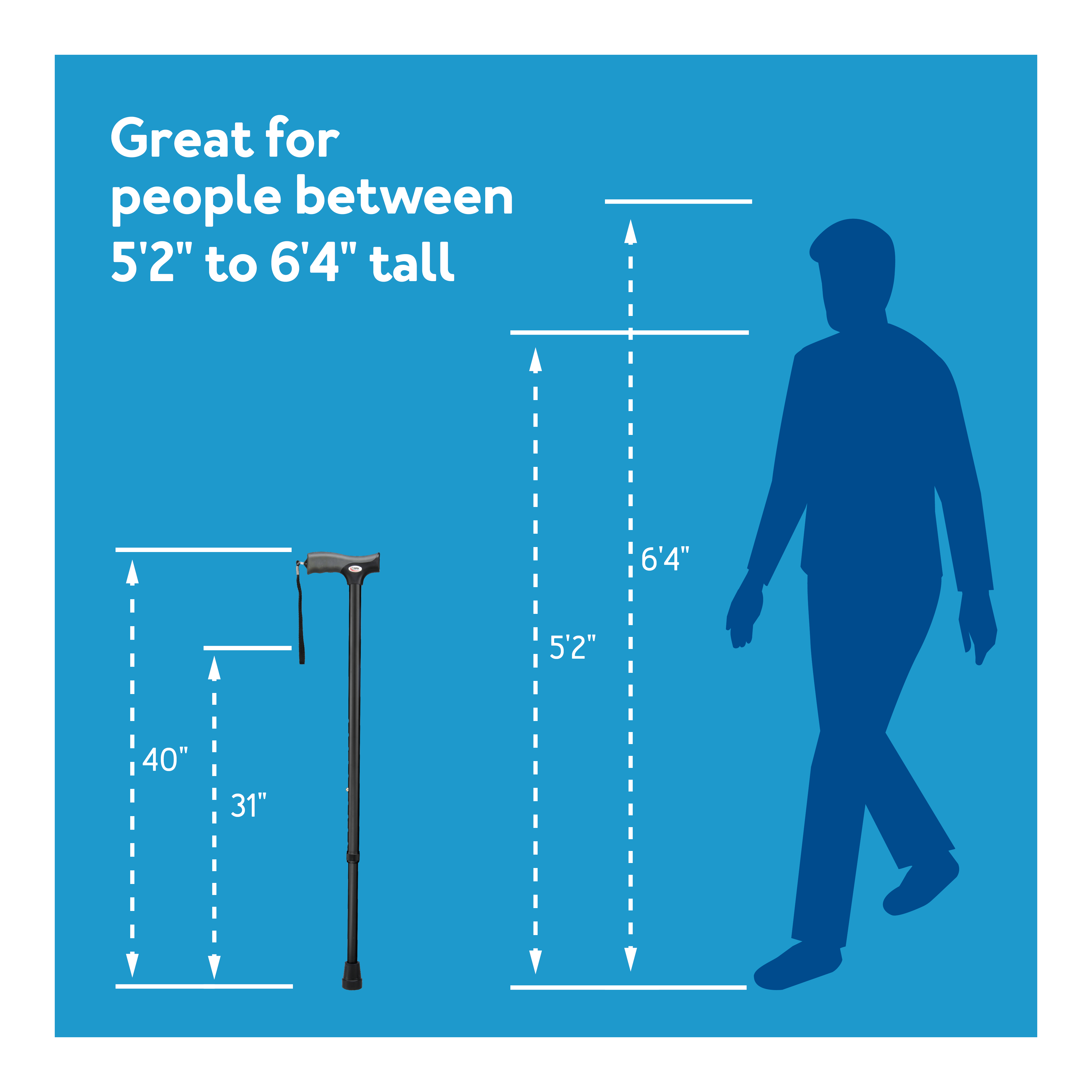
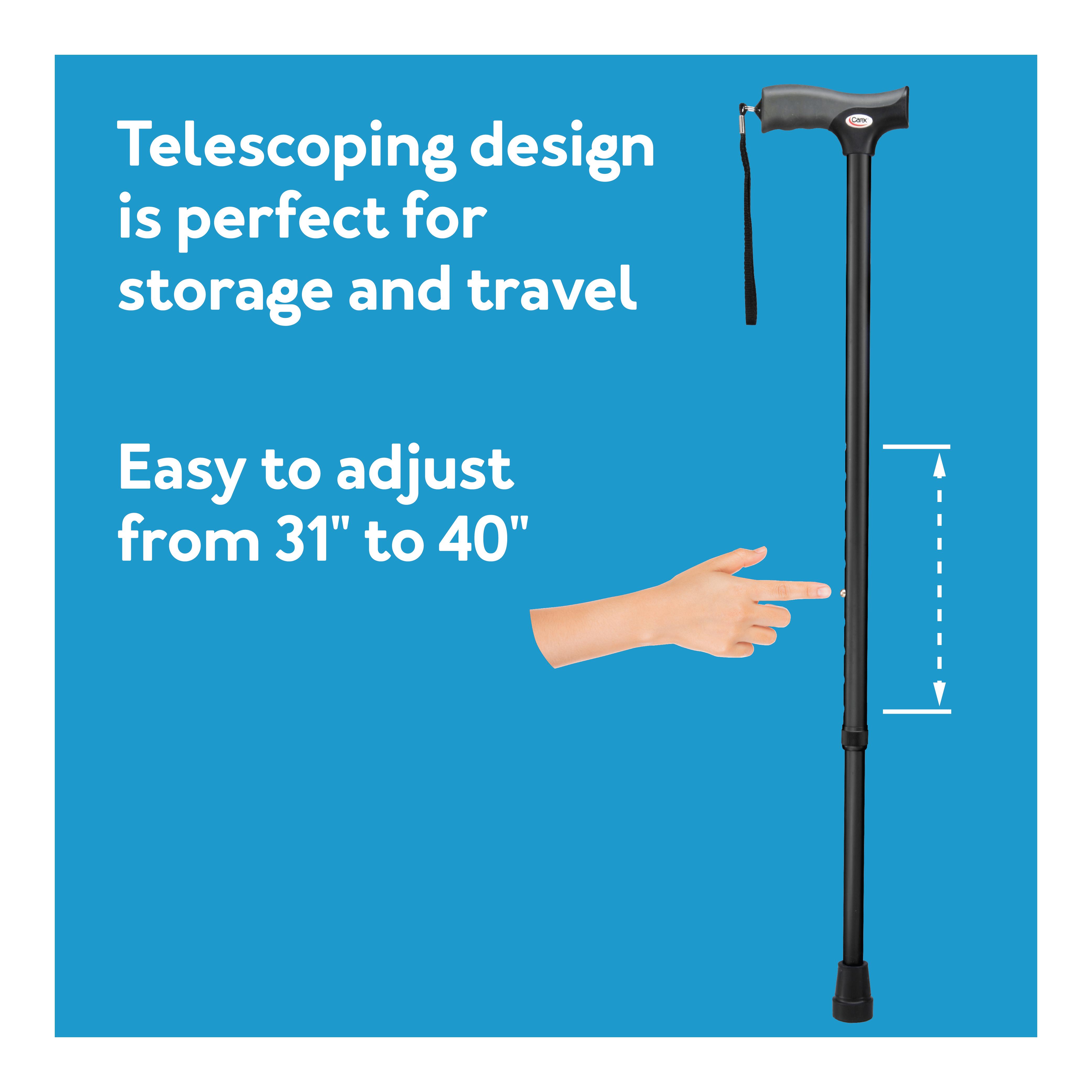
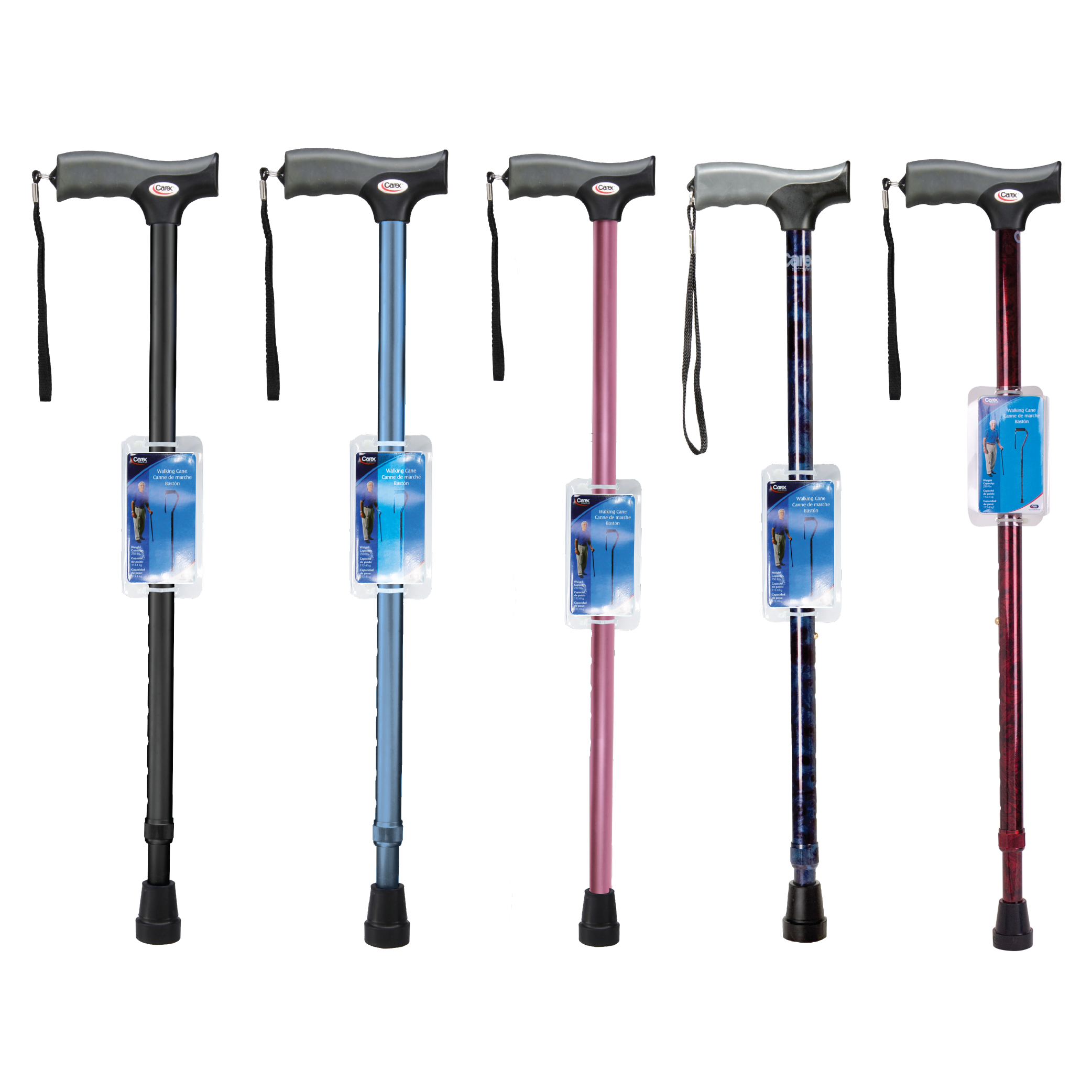
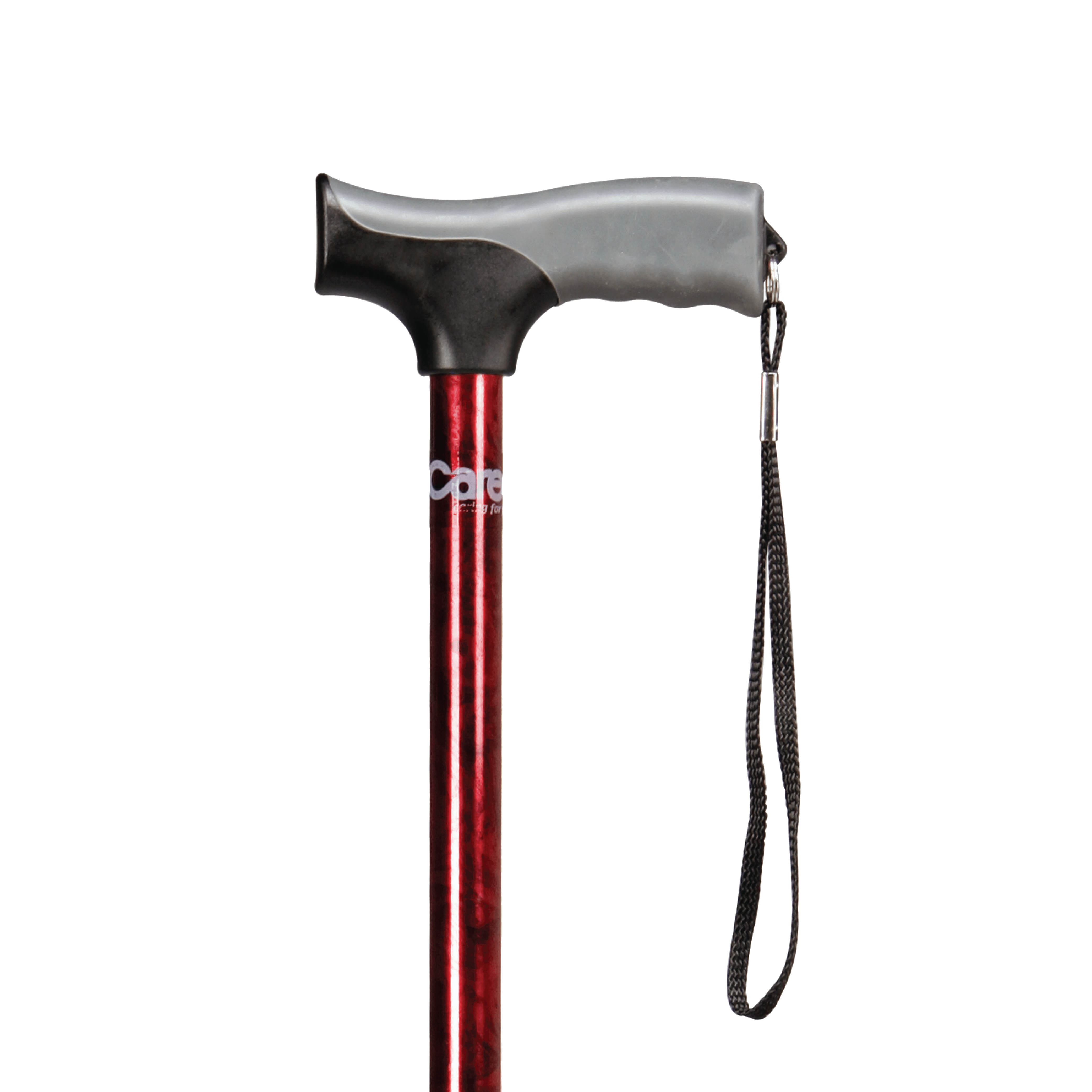
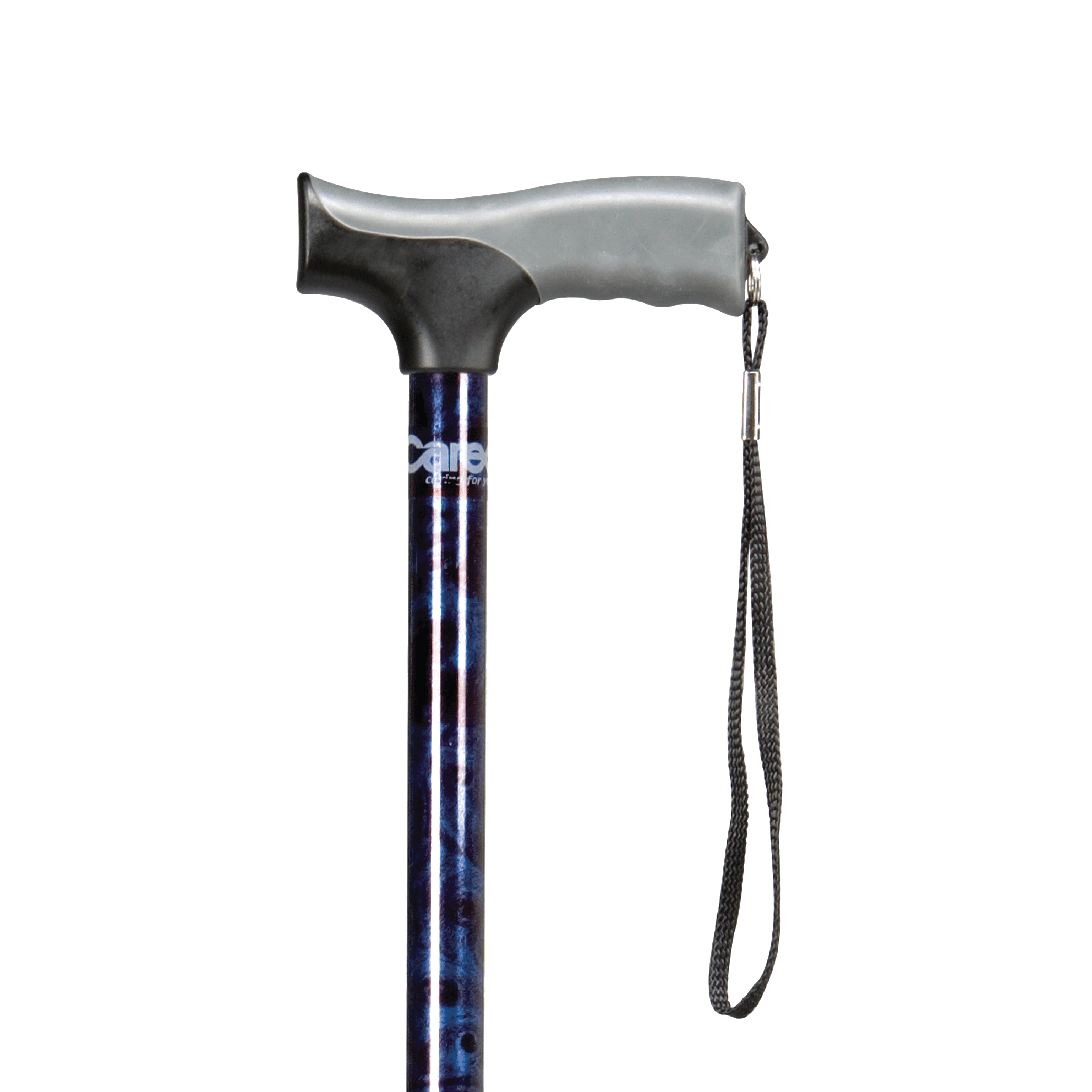
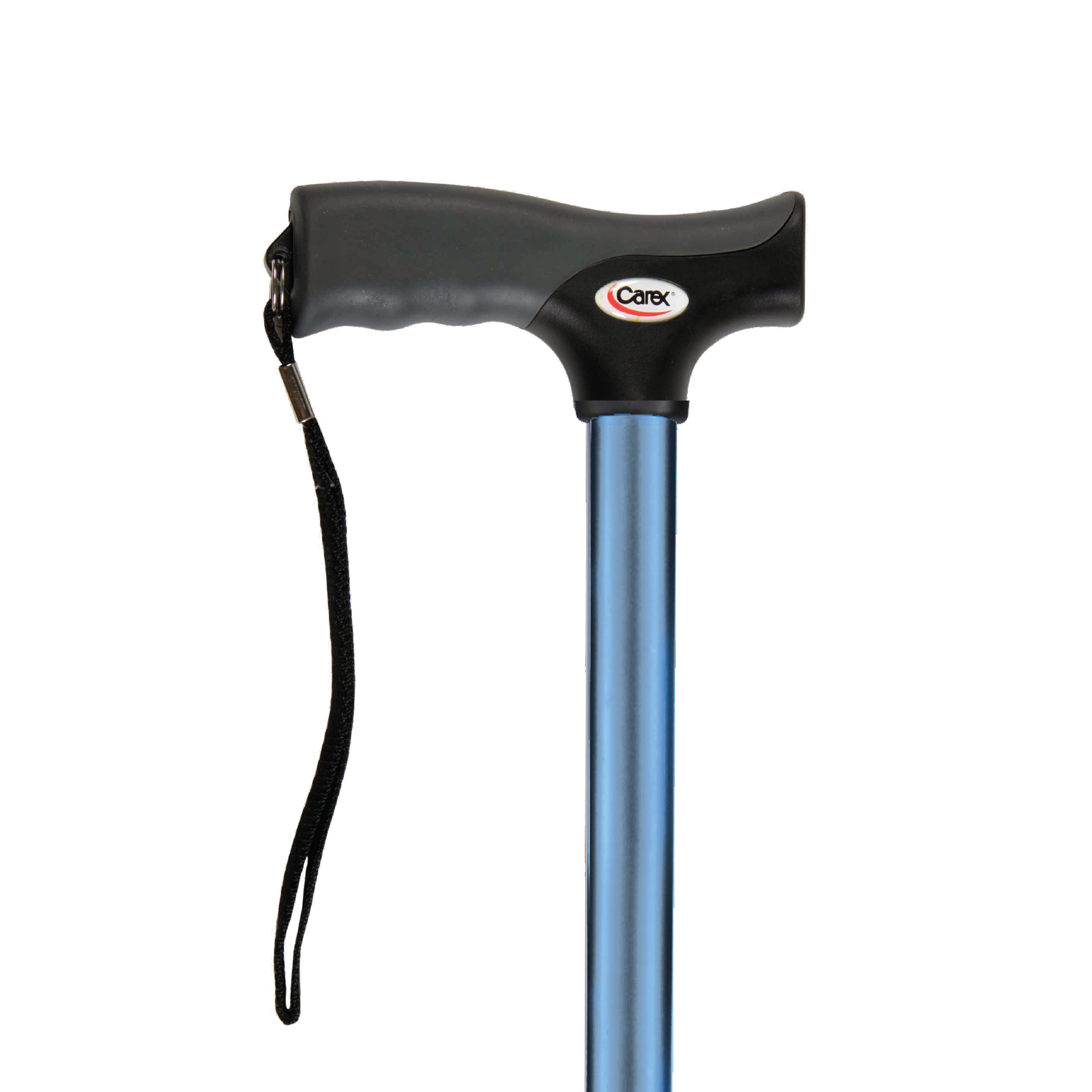
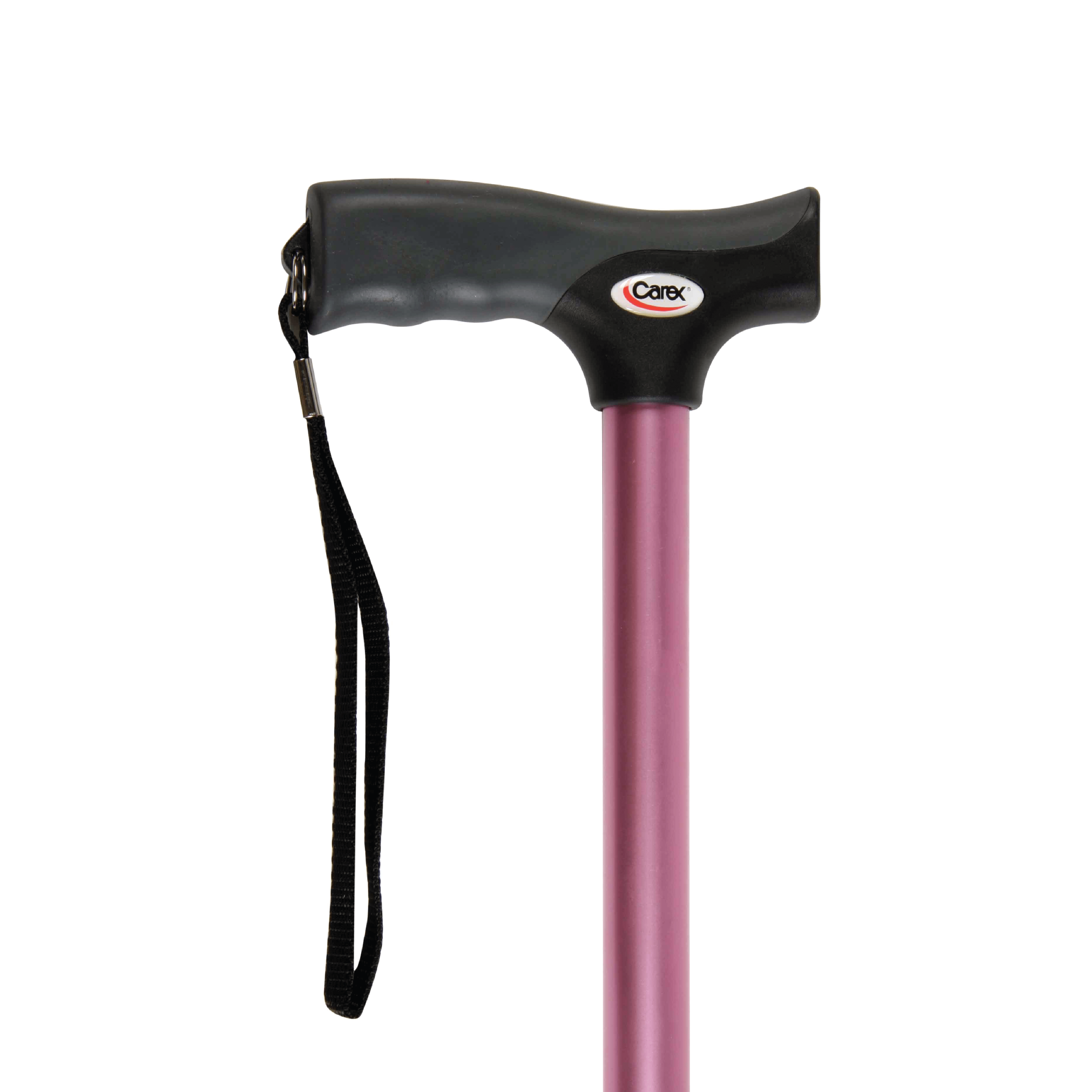
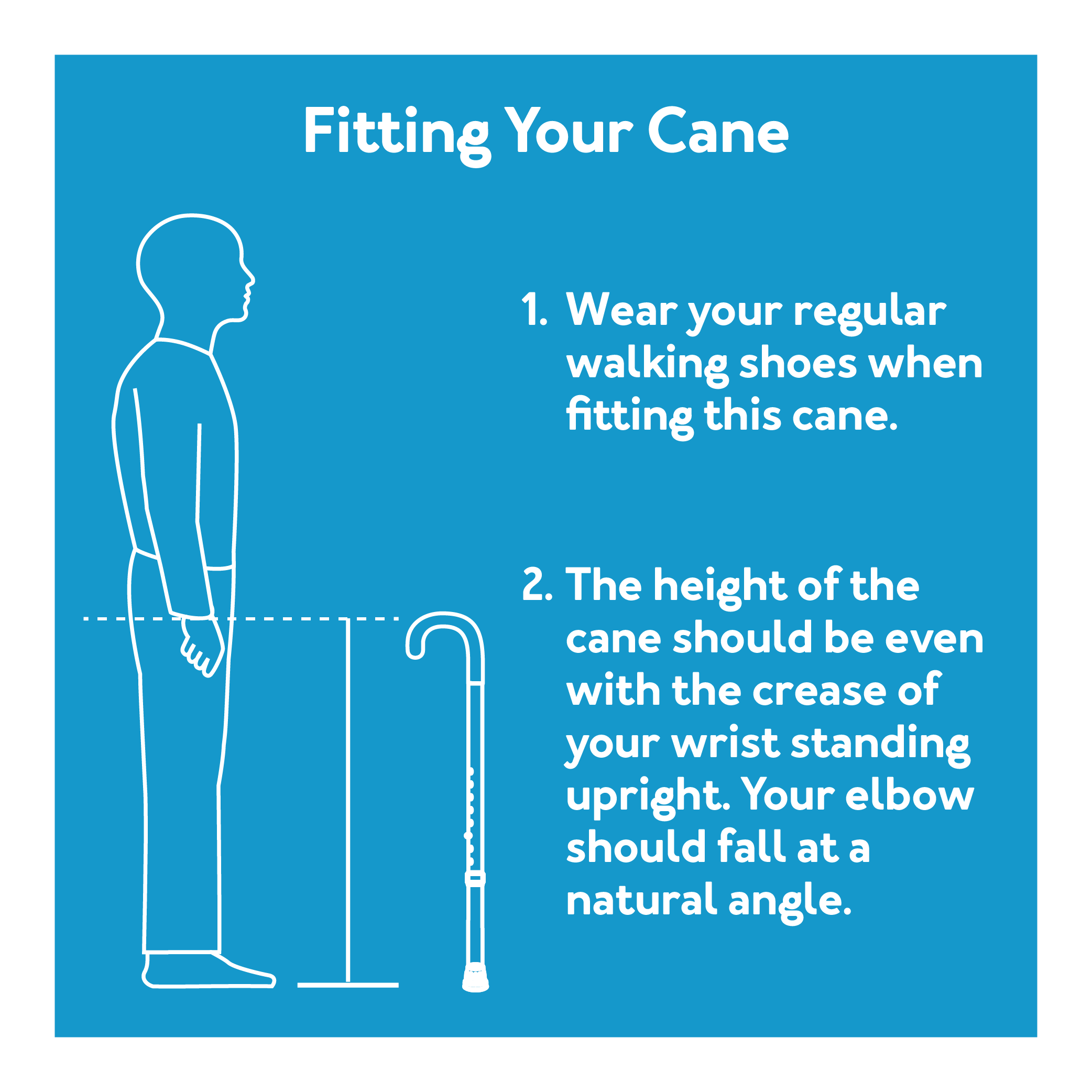
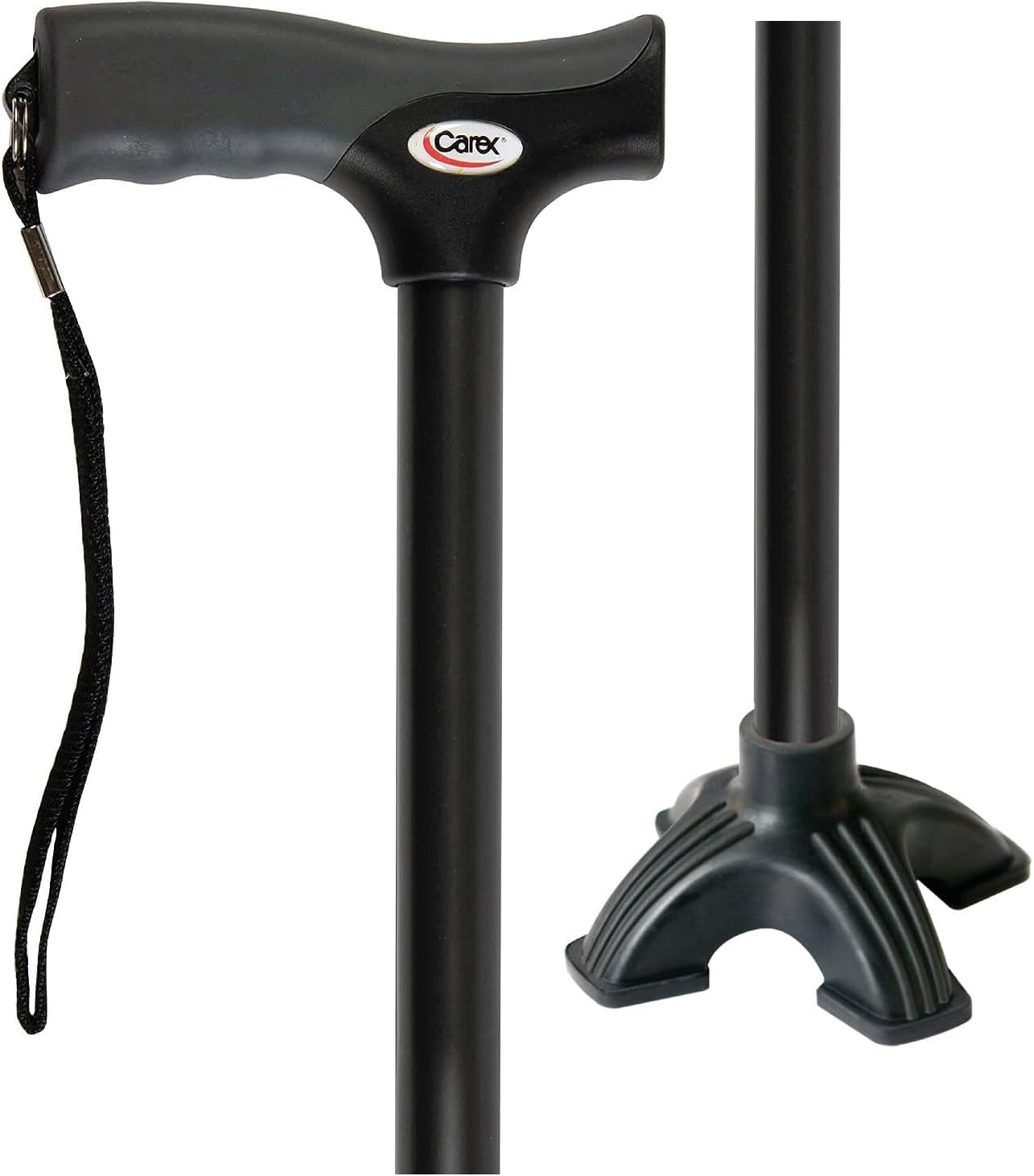
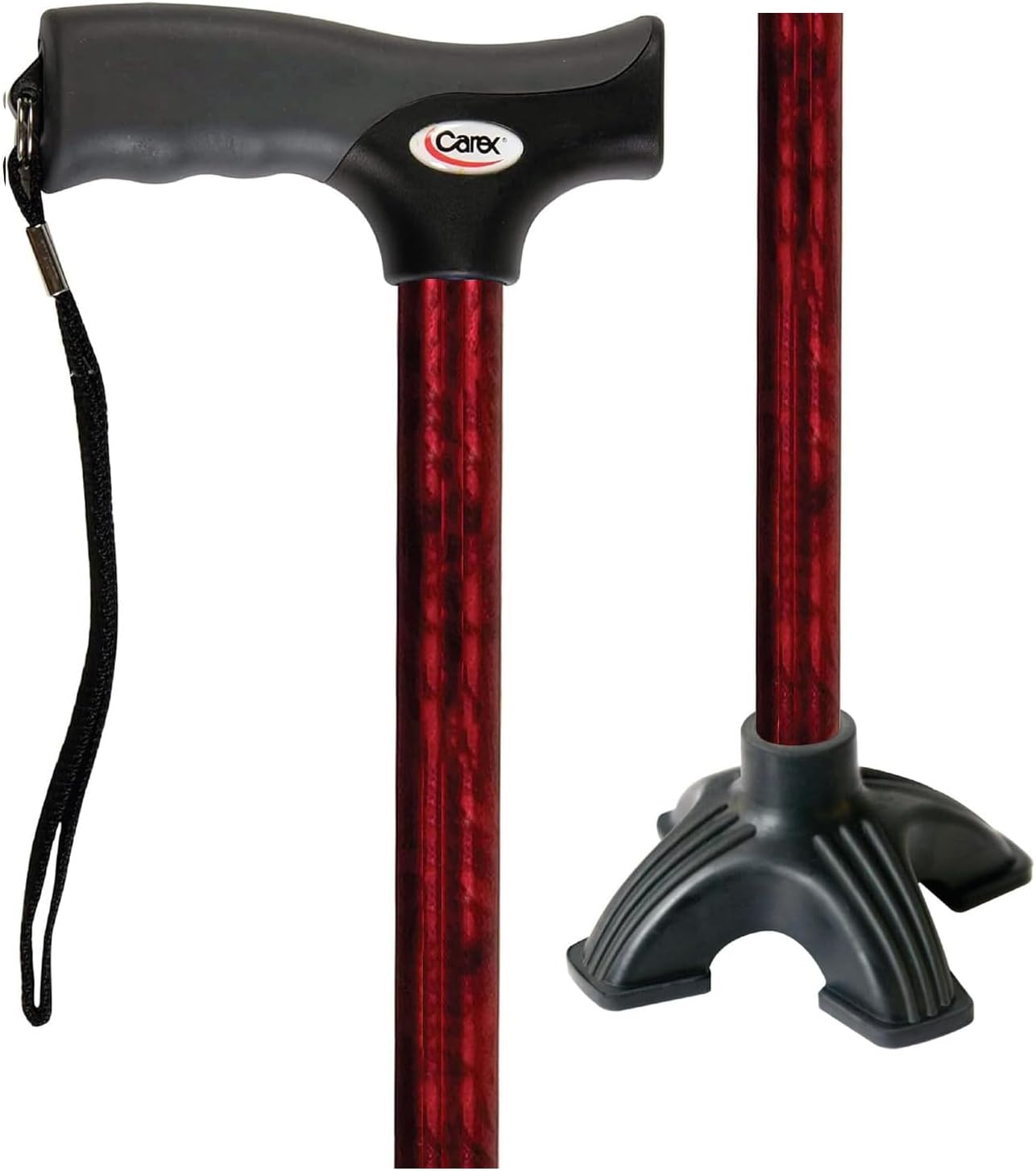
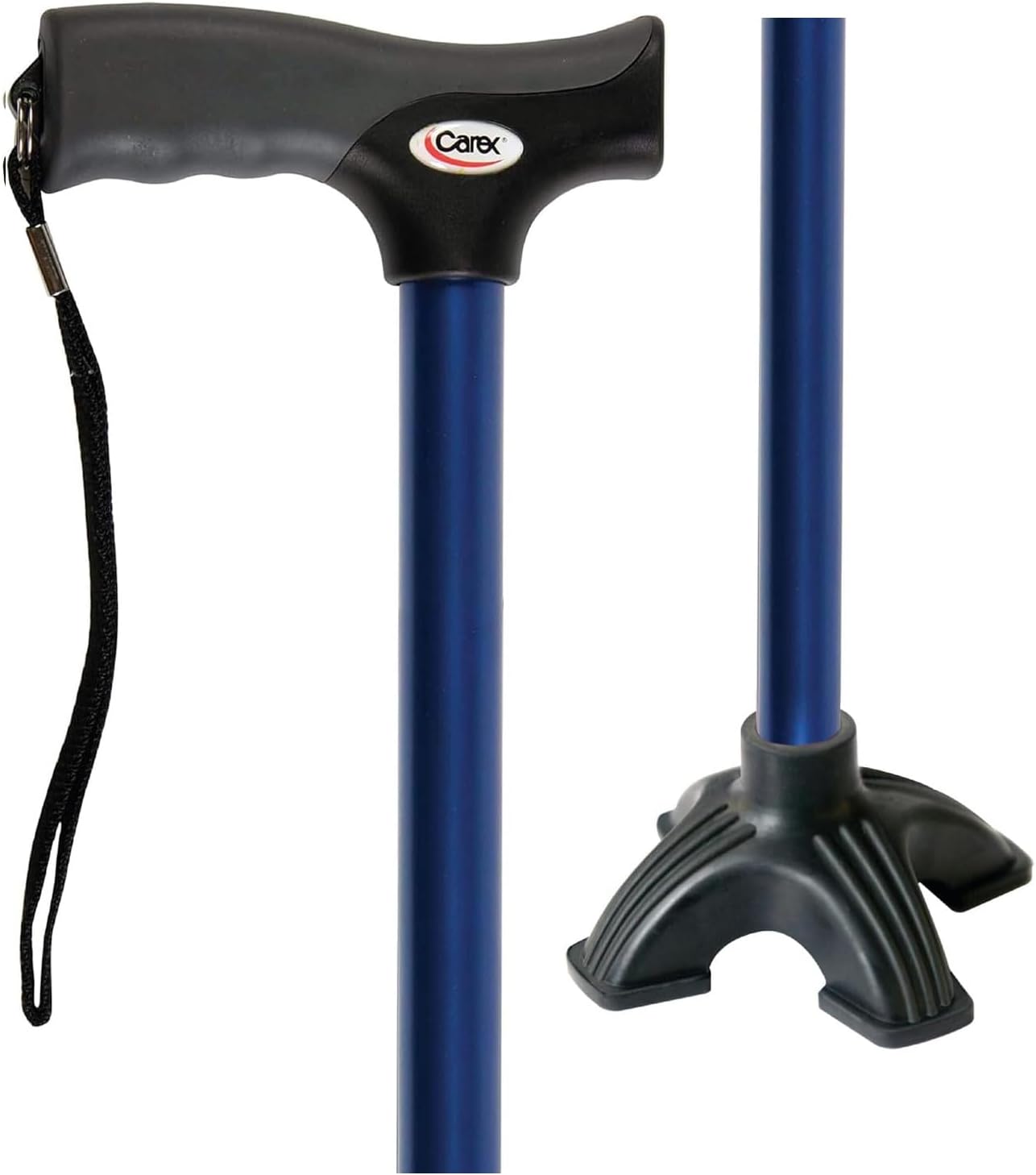
Carex Soft Grip Derby Cane
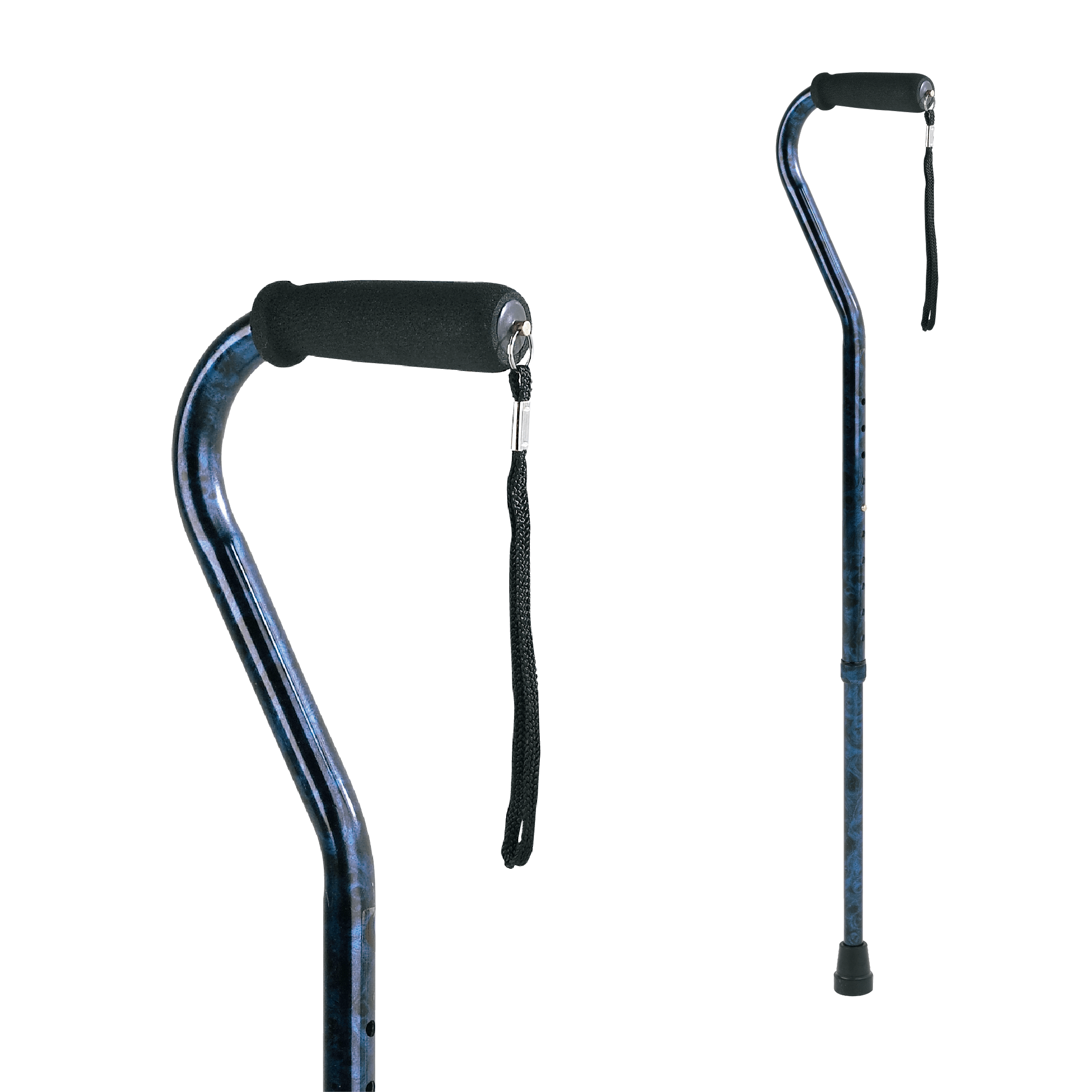

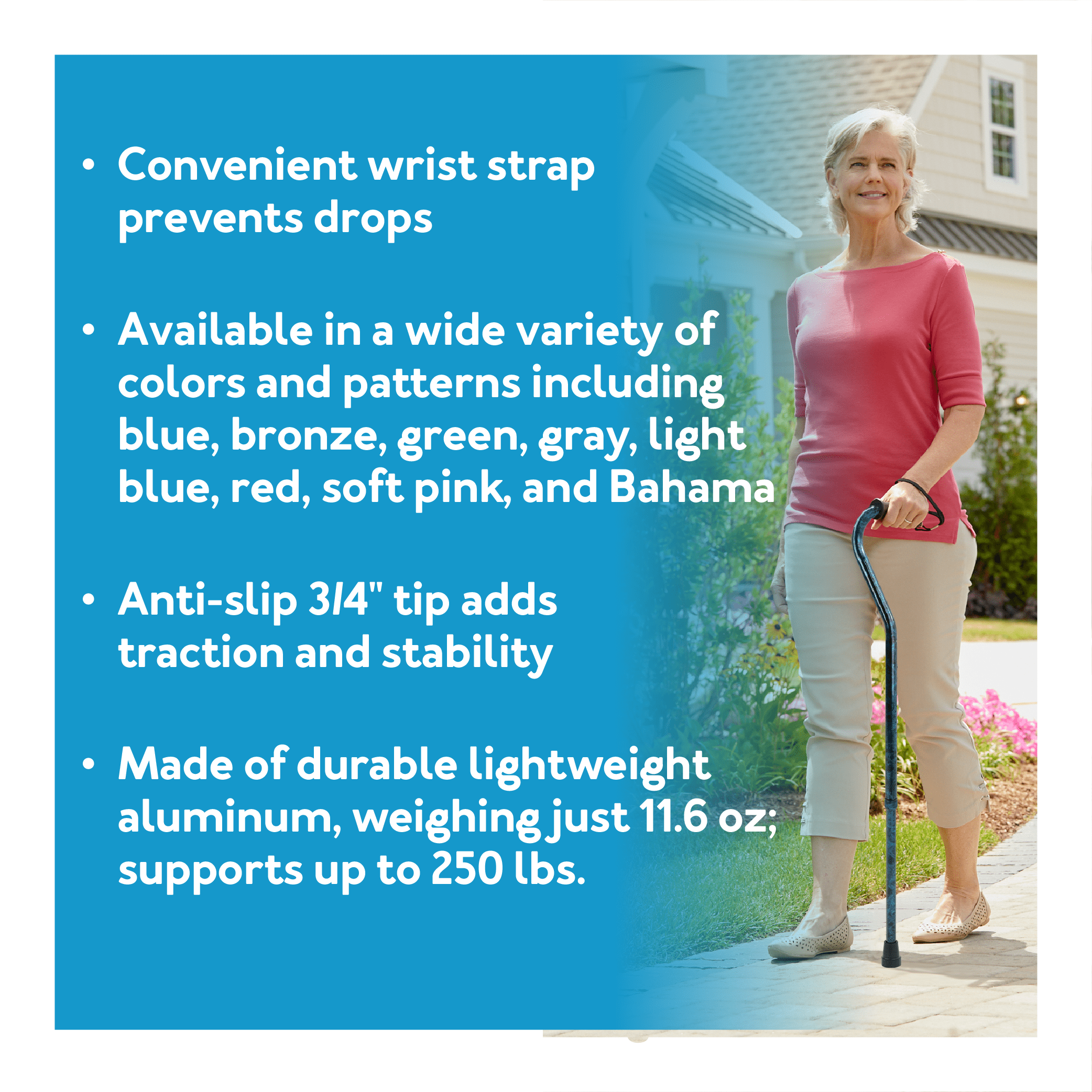
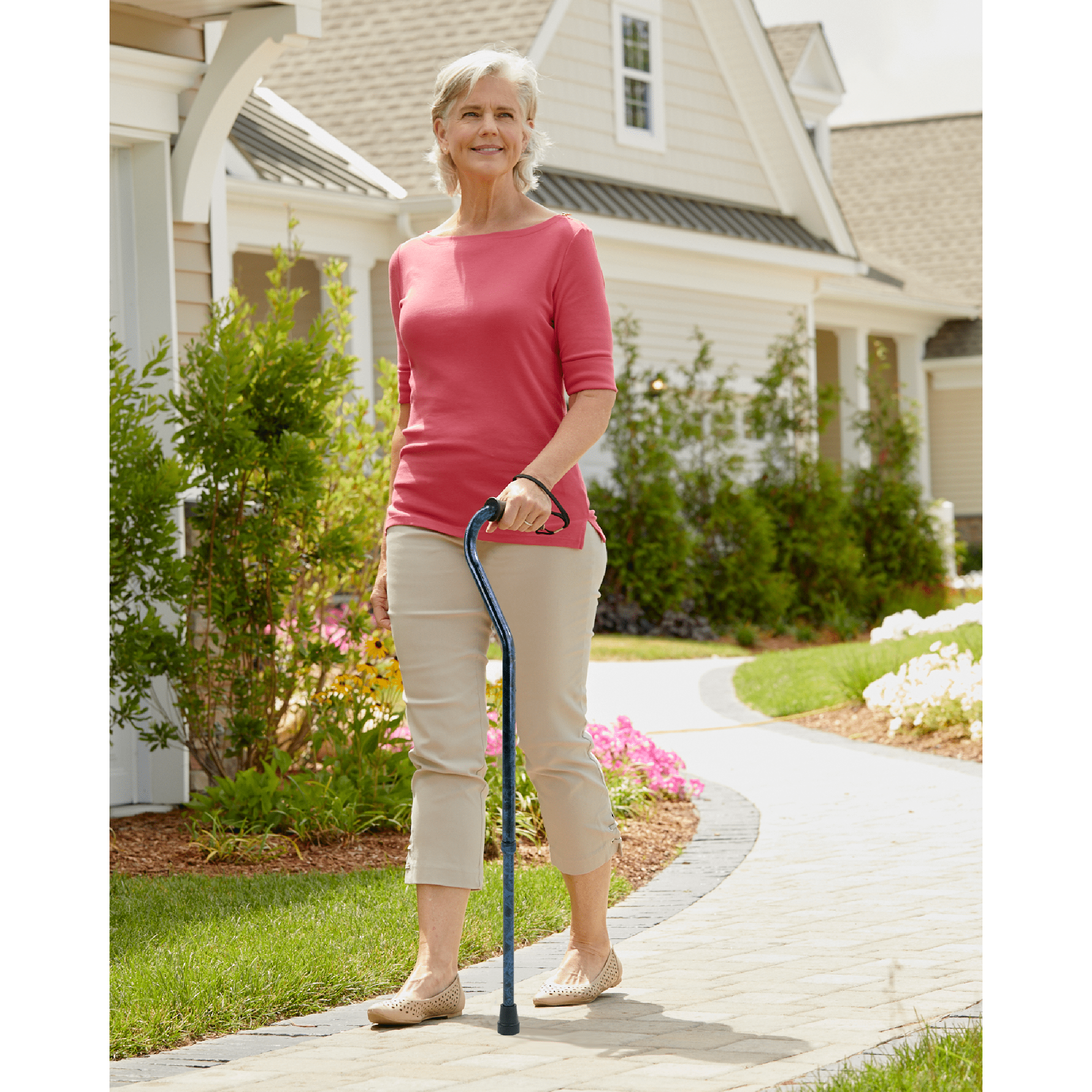
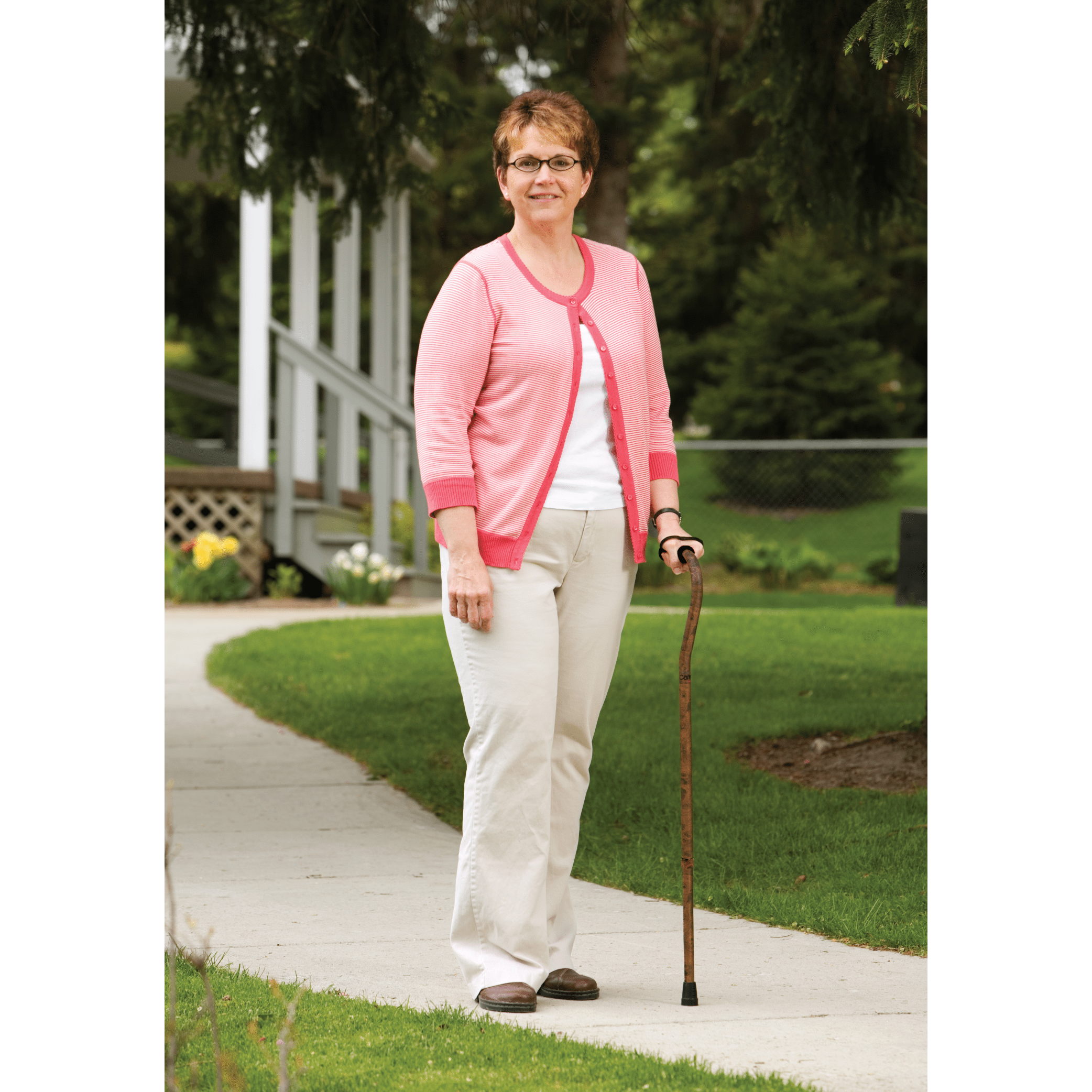
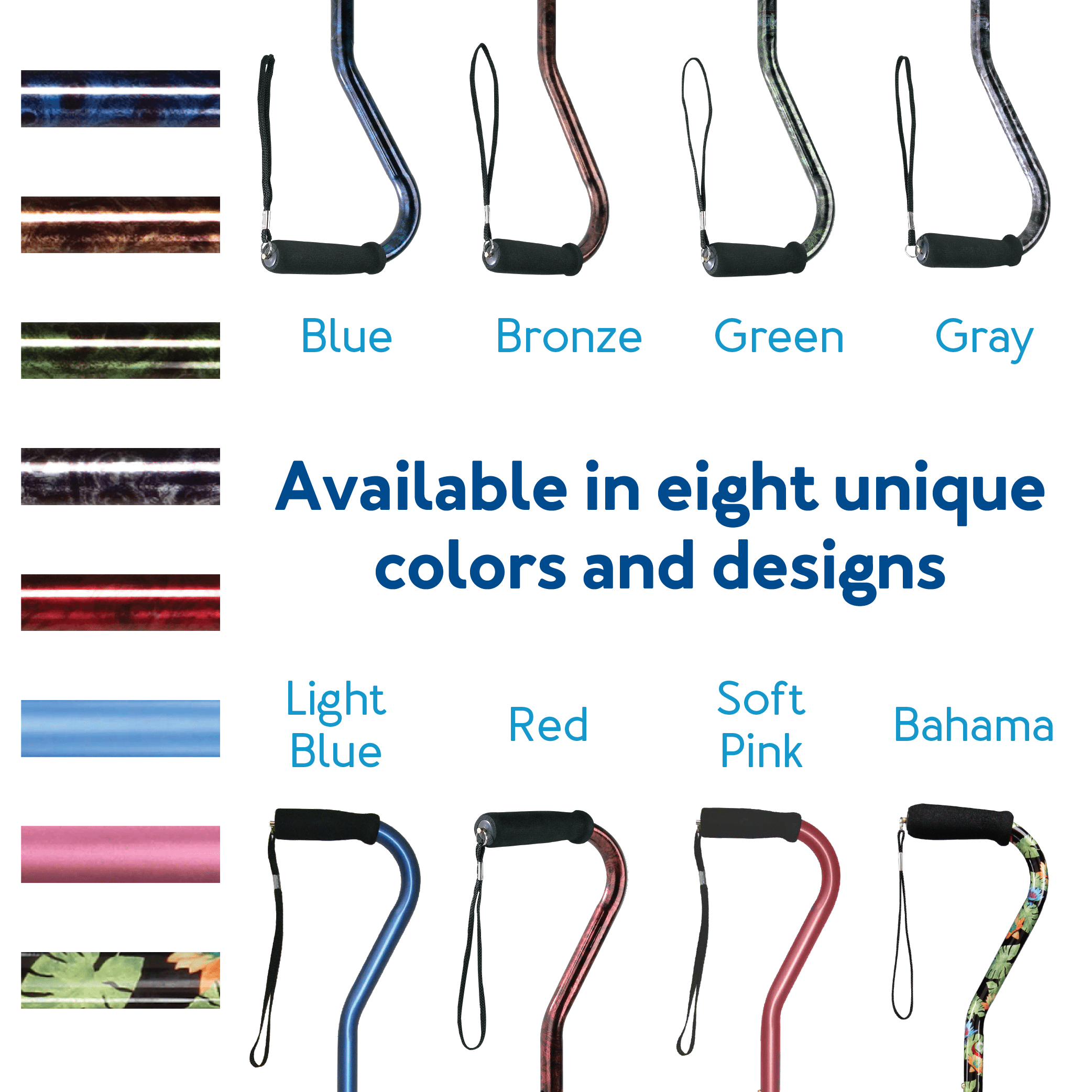
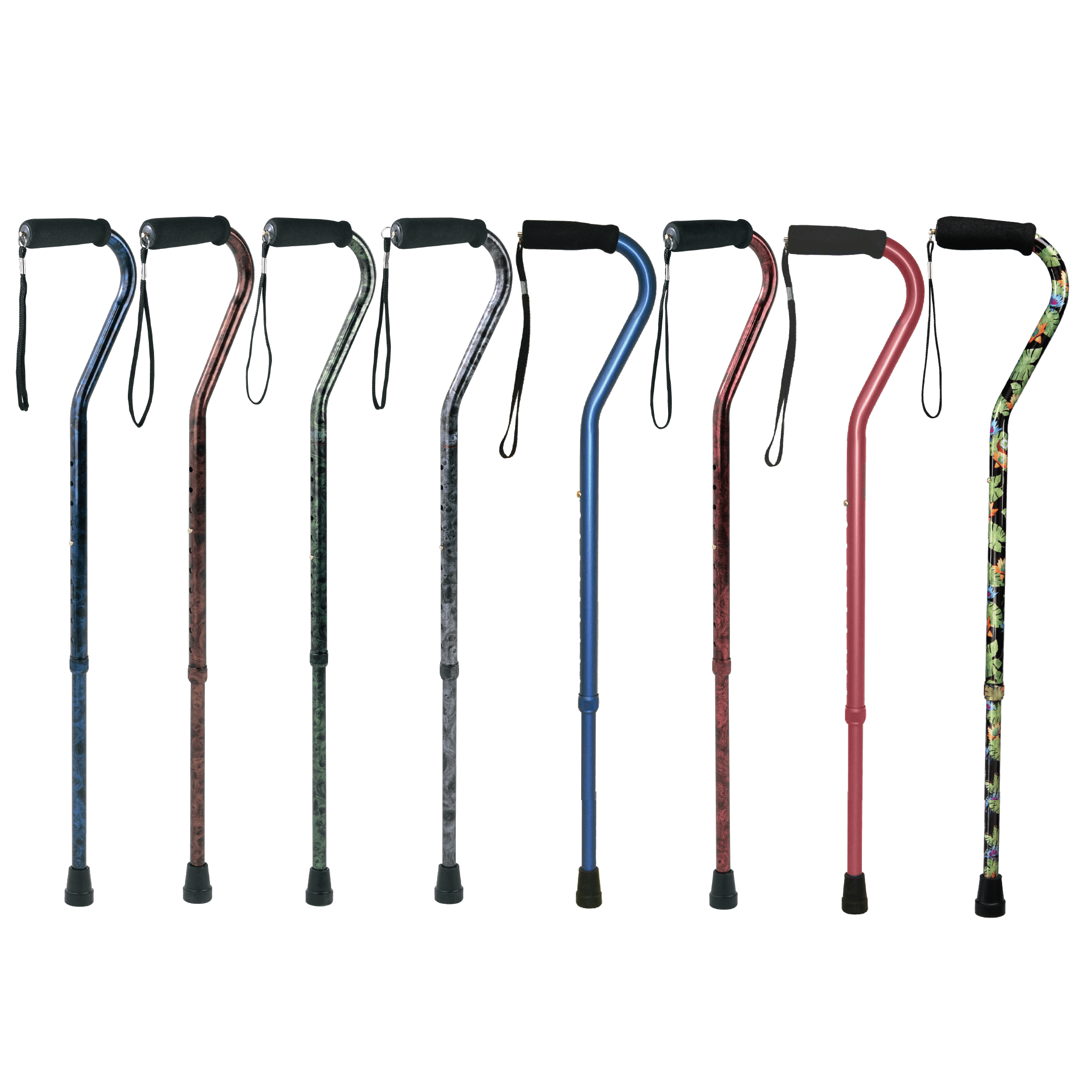
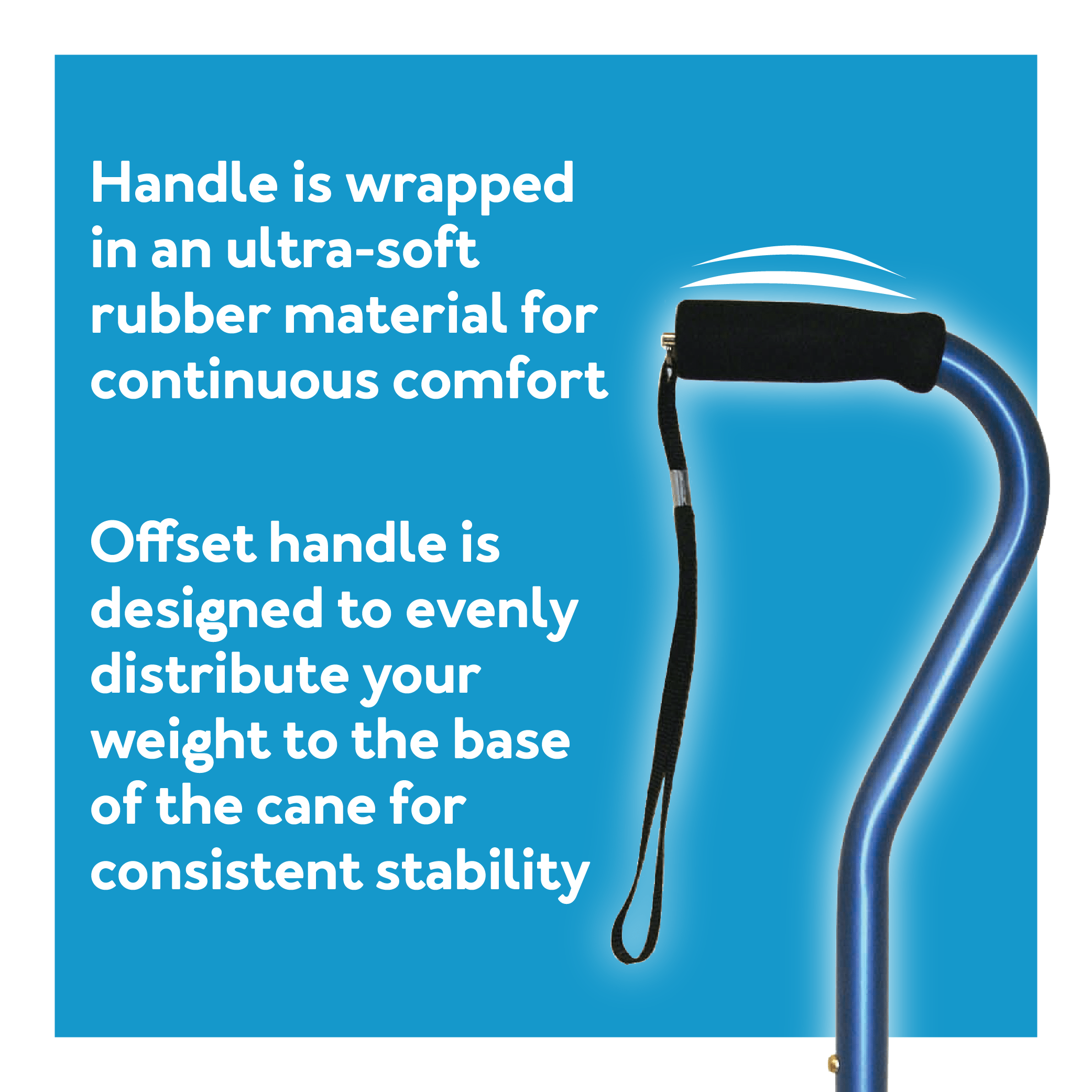
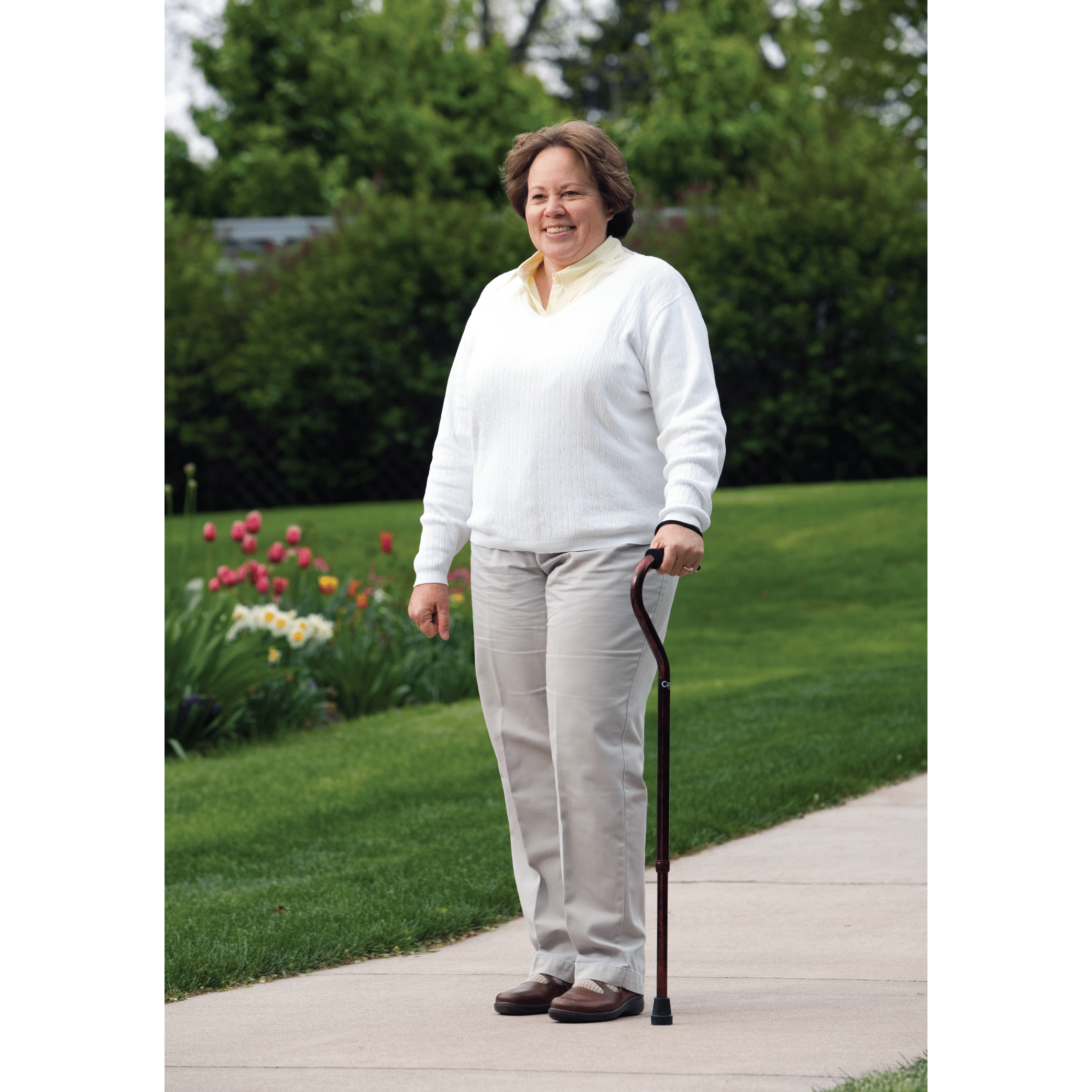
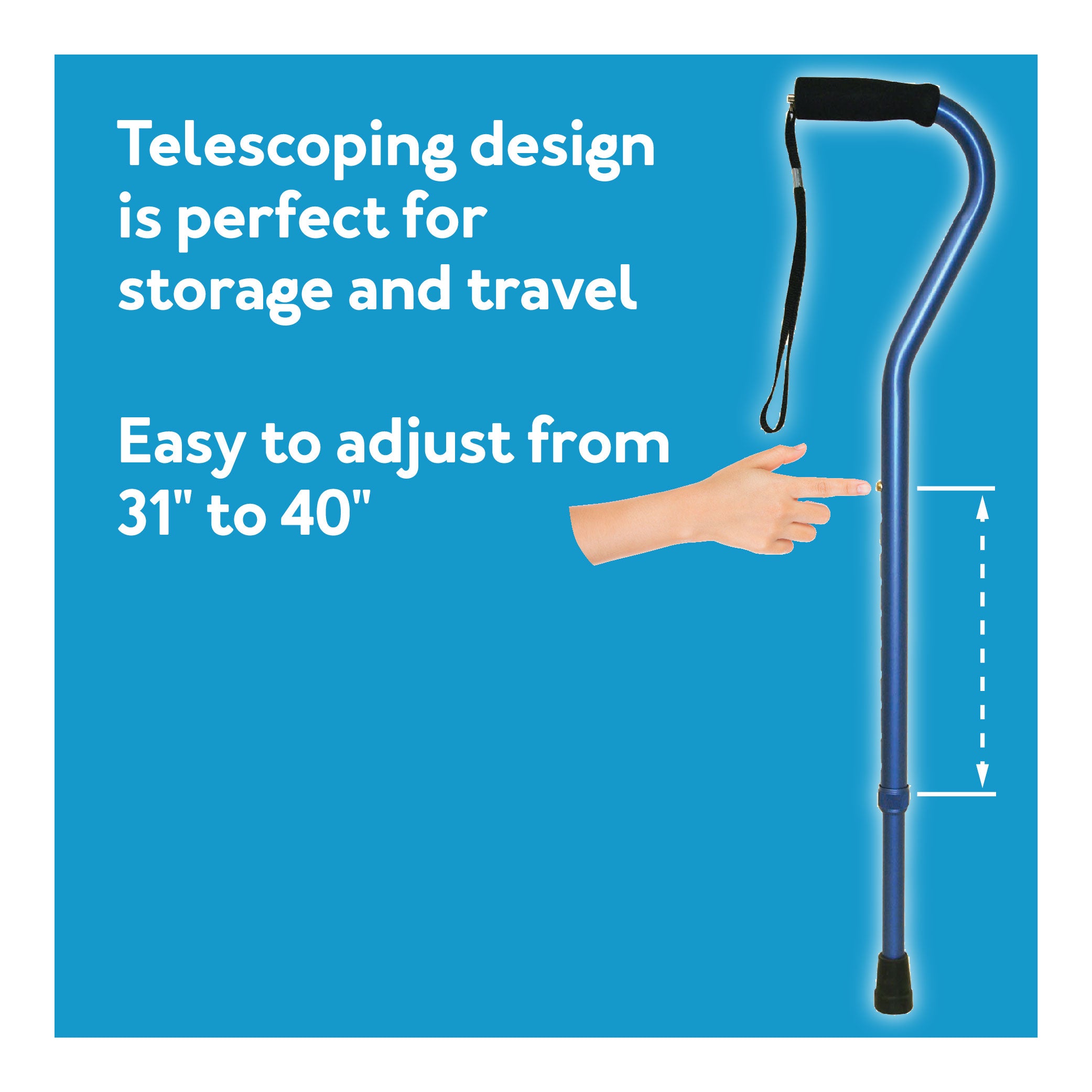
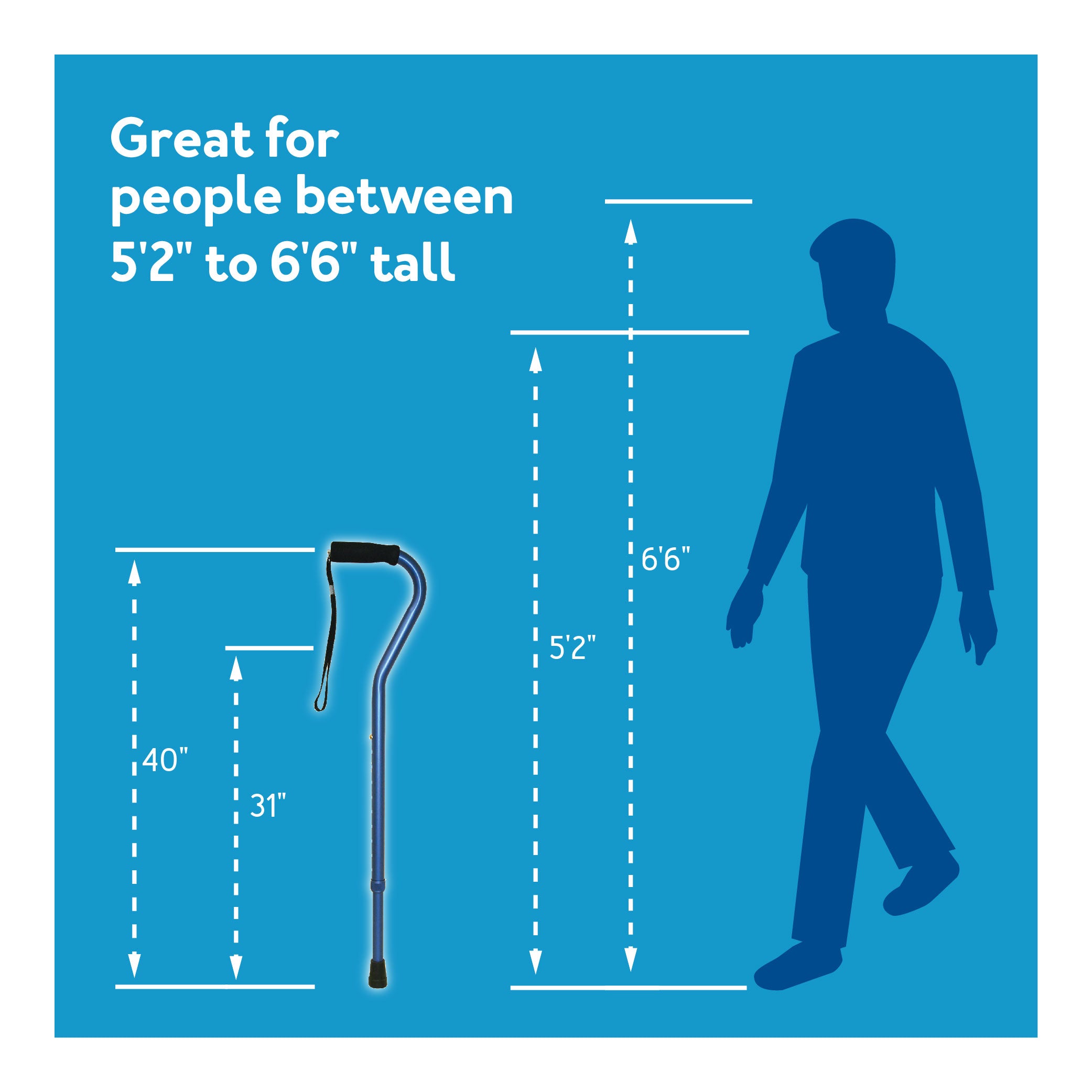
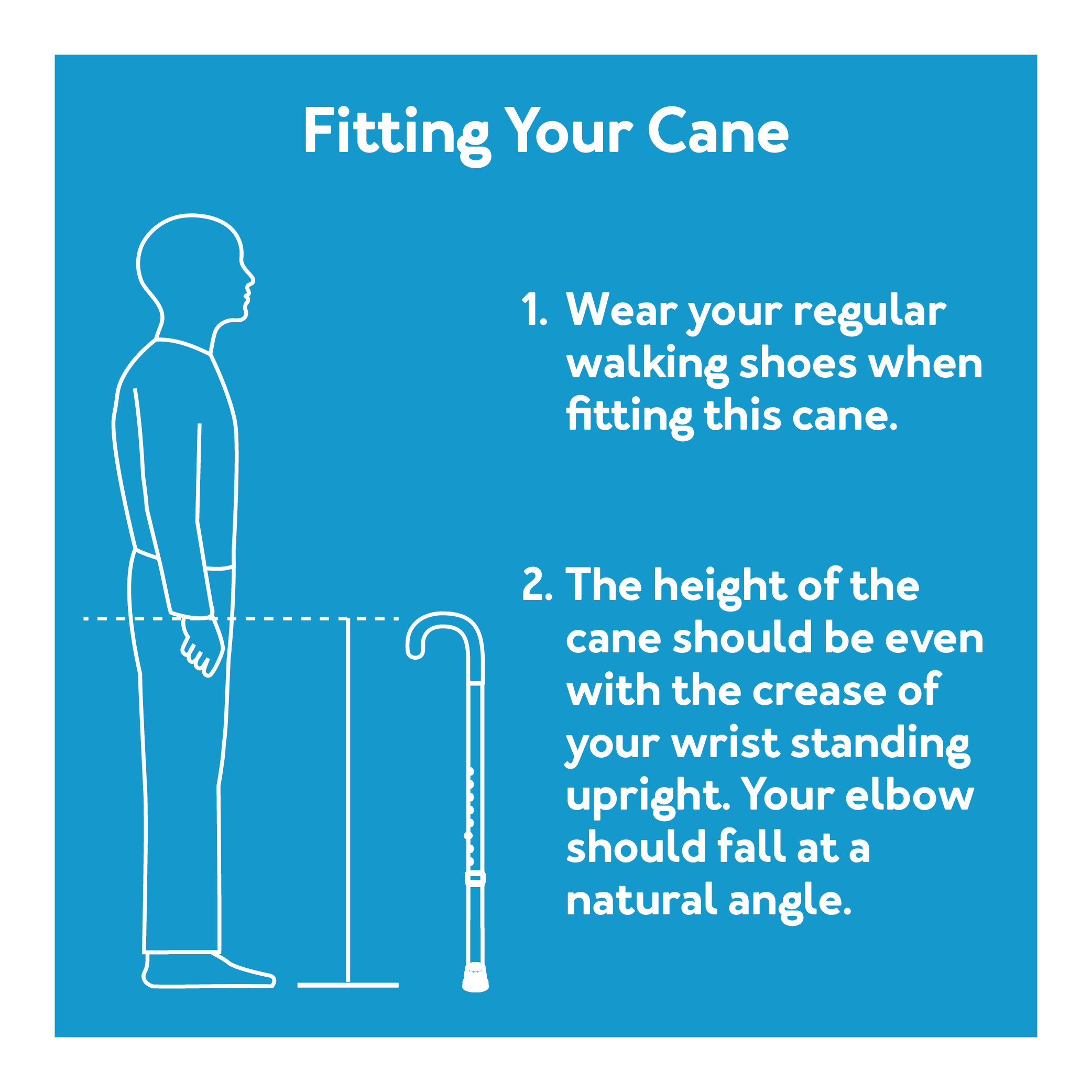
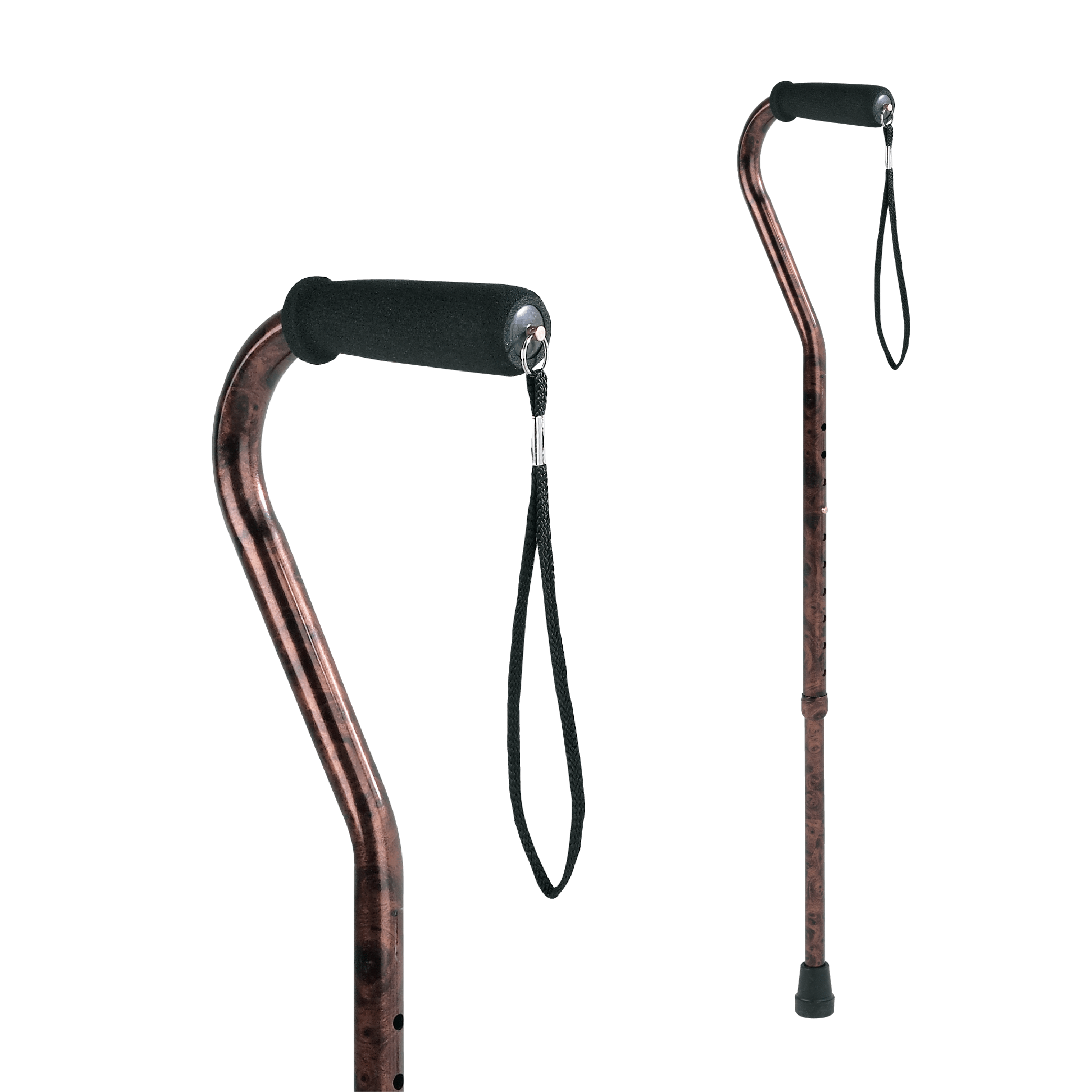
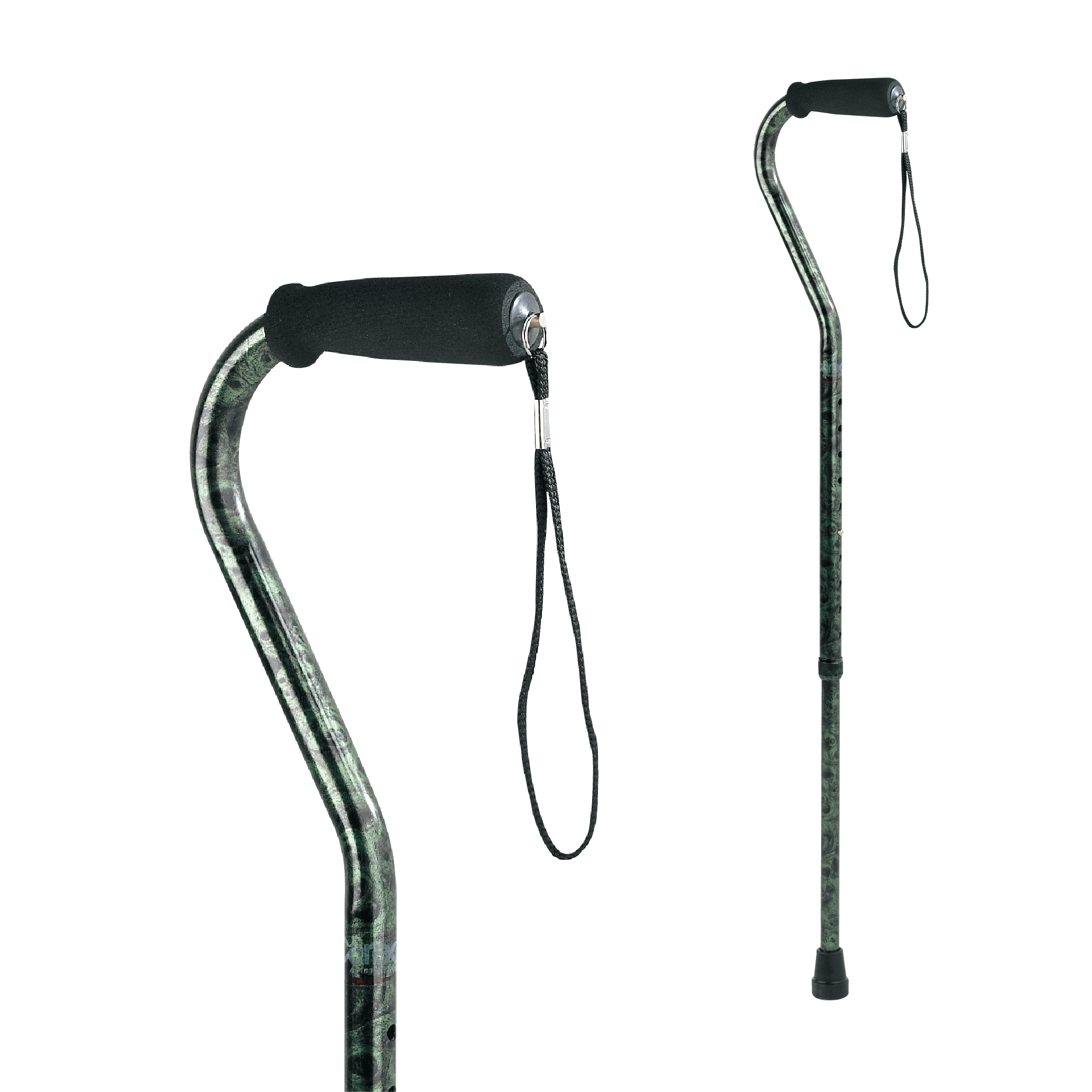
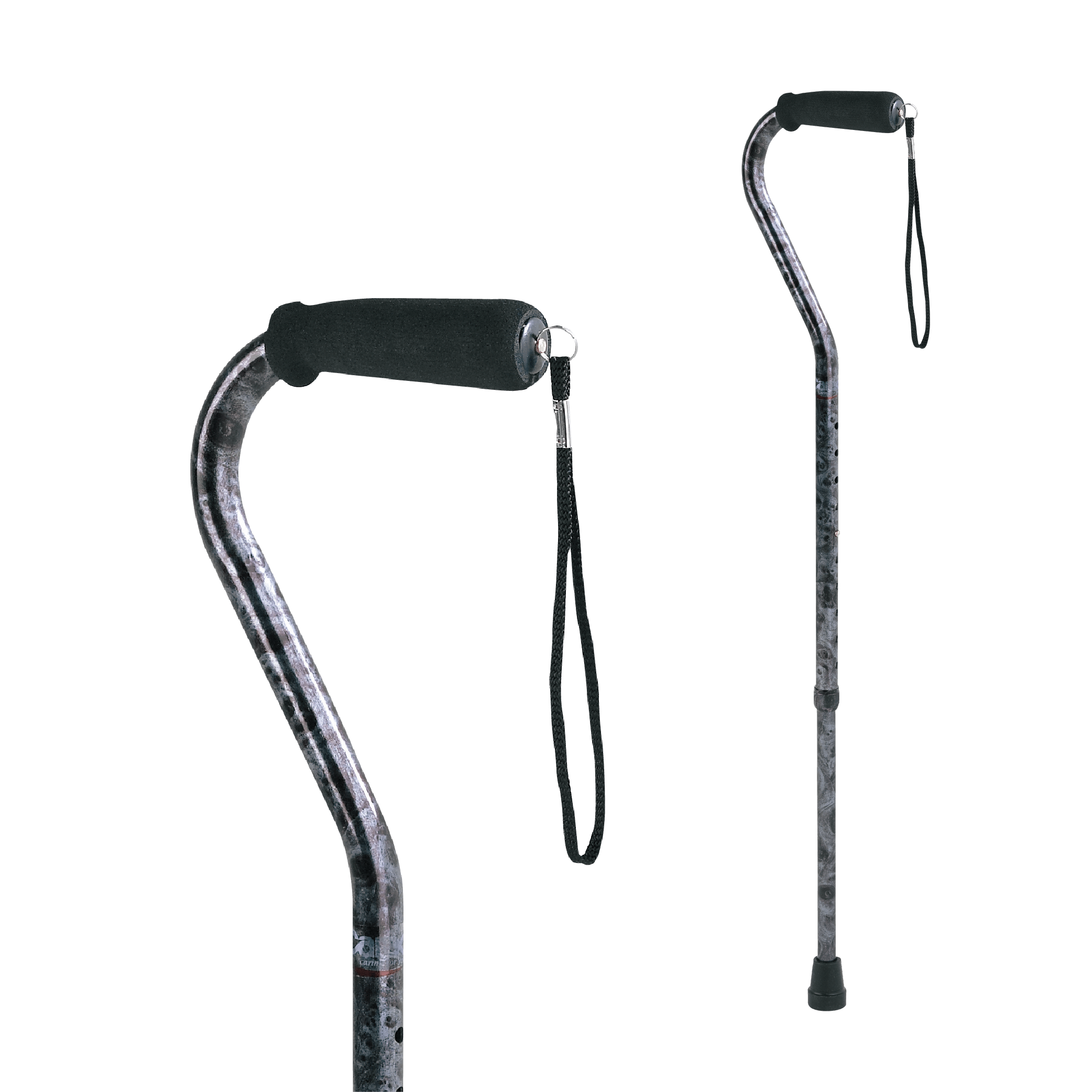
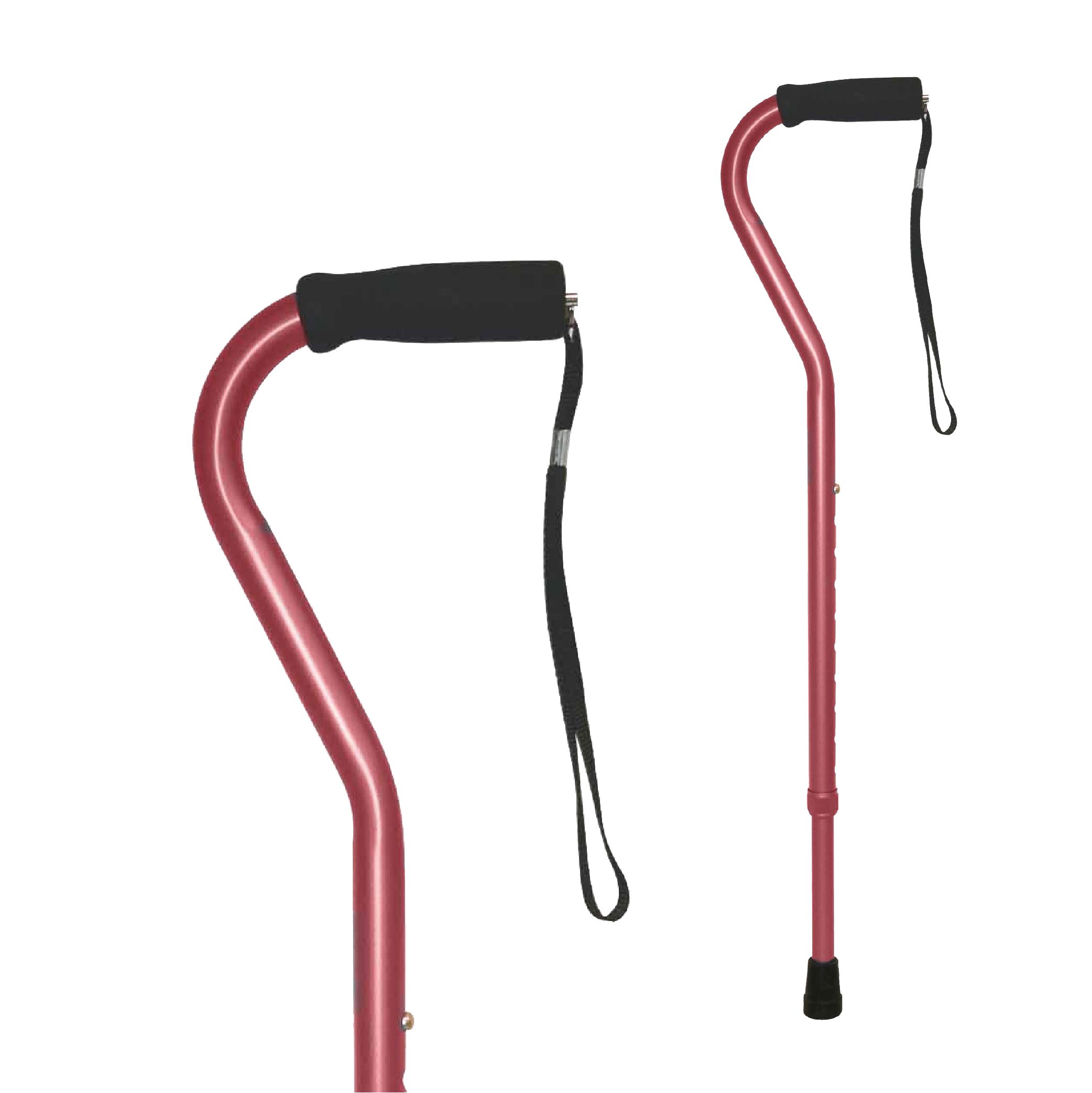
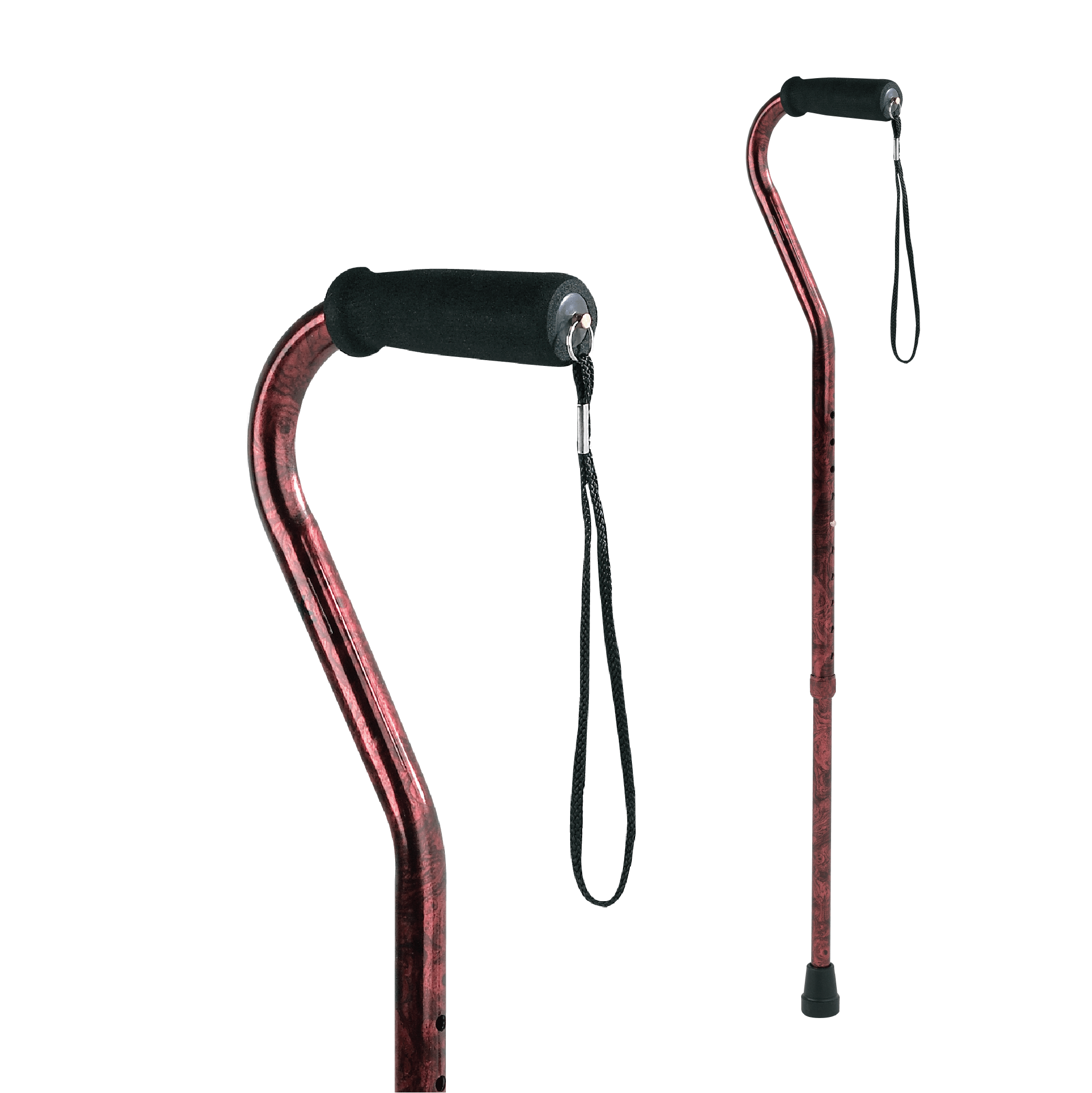
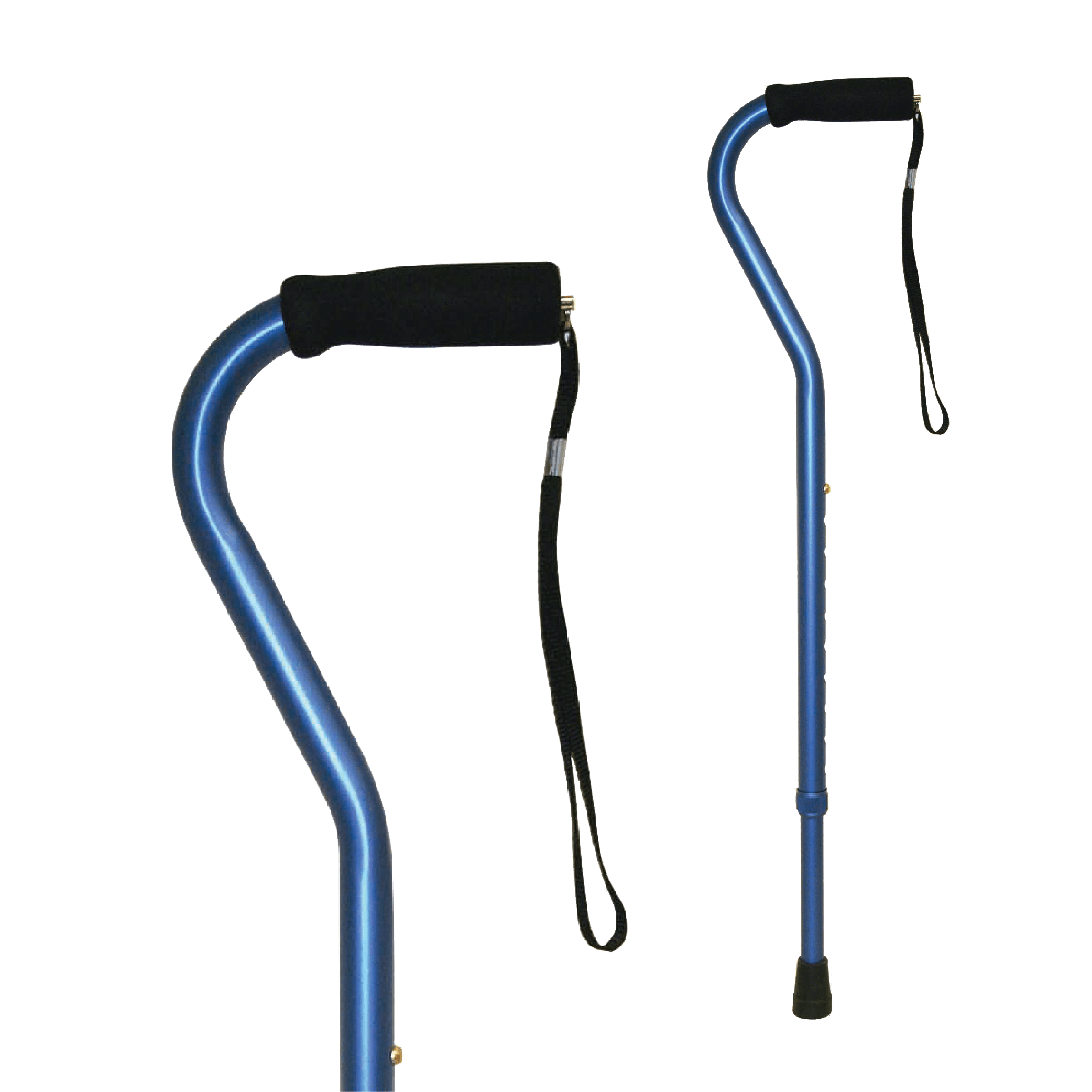
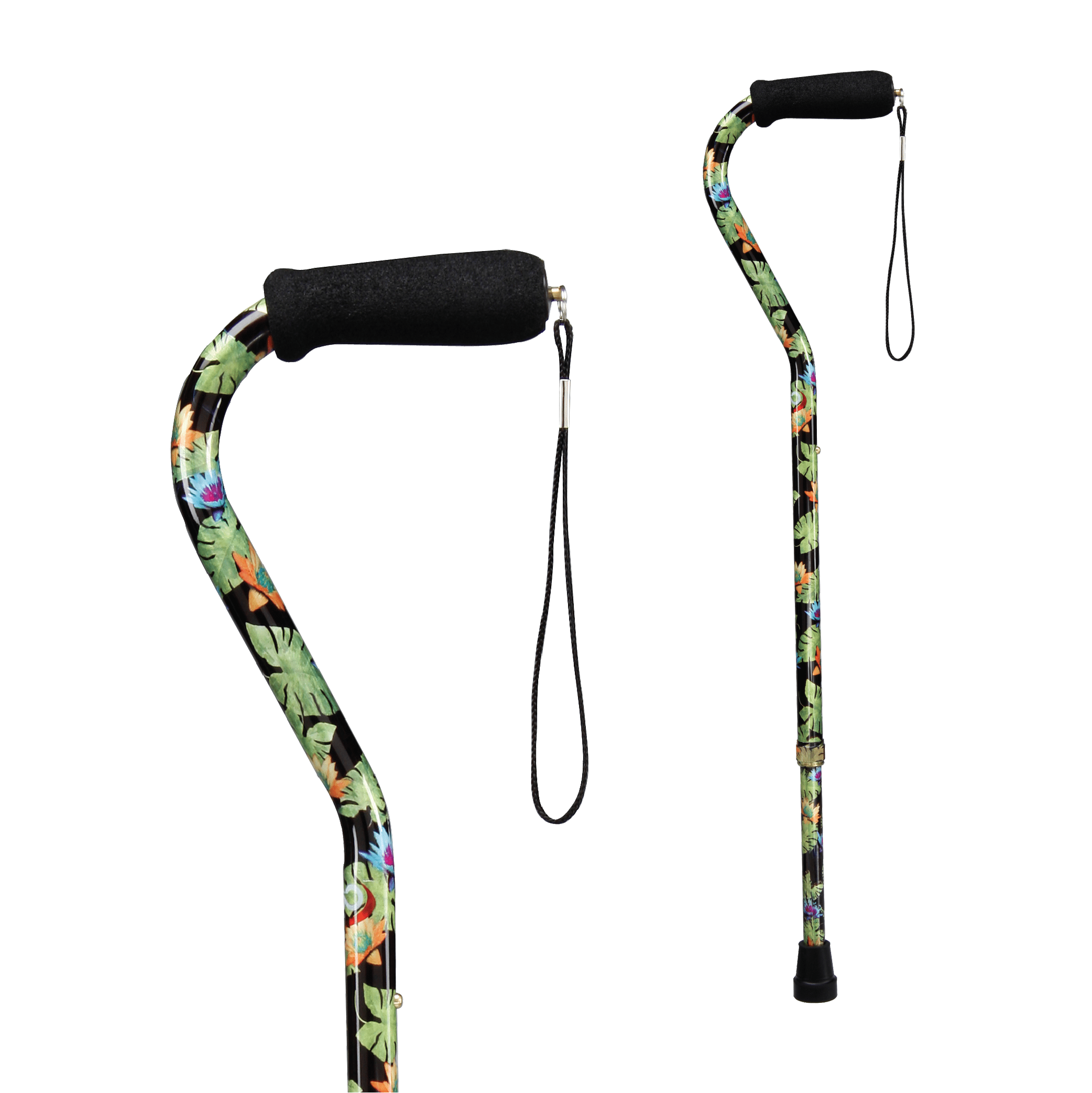
Carex Designer Offset Walking Cane
Frequently Asked Questions
What side do you use a cane on?
Hold the cane on the opposite side that isn't affected to best support your injured side. For example, if your left leg is injured, hold the cane in your right hand. This will give you proper balance and support when walking.
Can you use a cane on the same side as your injury?
We do not recommend doing this as it does not provide proper walking support and causes you to put all of your weight on your weaker side.
The safest and most effective way to use your cane is by holding it on your uninjured side and moving it forward in unison as you step with your weaker side. This will give you the best balance and support.
About the Author

Stephanie Schwarten is a freelance writer and editor with a Bachelors degree in Professional Writing. She specializes in content marketing as well as both developmental and copy editing.
About Carex Health Brands
Carex is your one-stop shop for home medical equipment and for products that assist caregivers with providing the best possible support and care for their loved ones. Carex Health Brands has been the branded leader in in-home, self-care medical products for over 35 years. Our goal is to improve the lives of our customers by bring them quality products that bring dignity back to their lives. With our three nationally distributed brands, Carex Health Brands serves national, regional and independent food, drug and mass retailers along with wholesalers, distributors and medical dealers.














